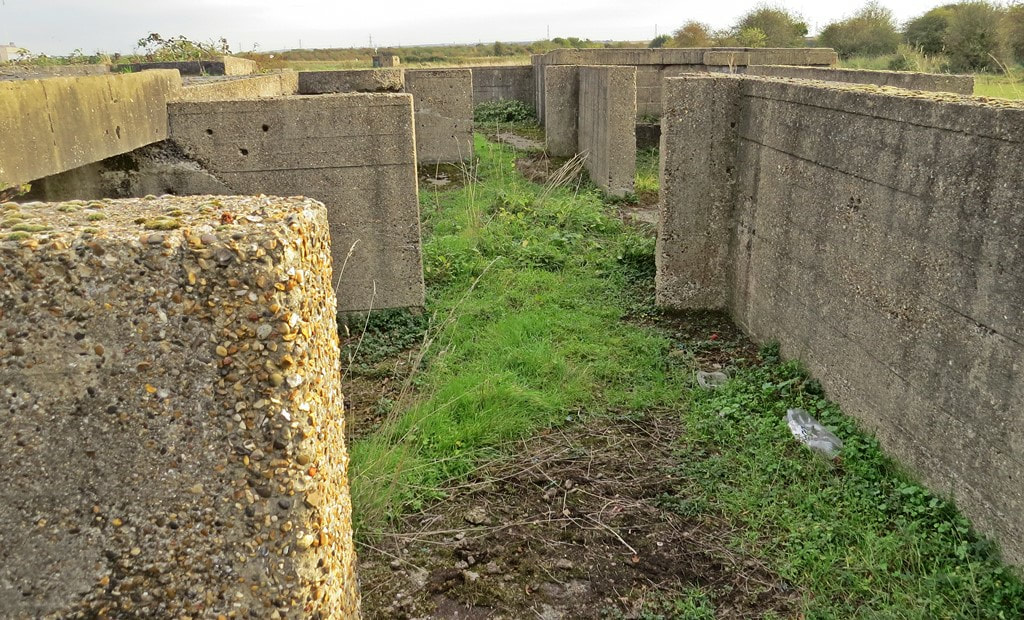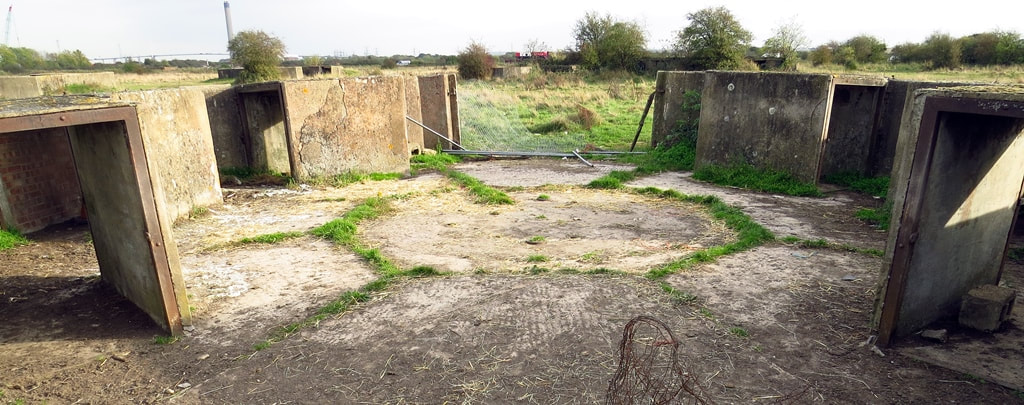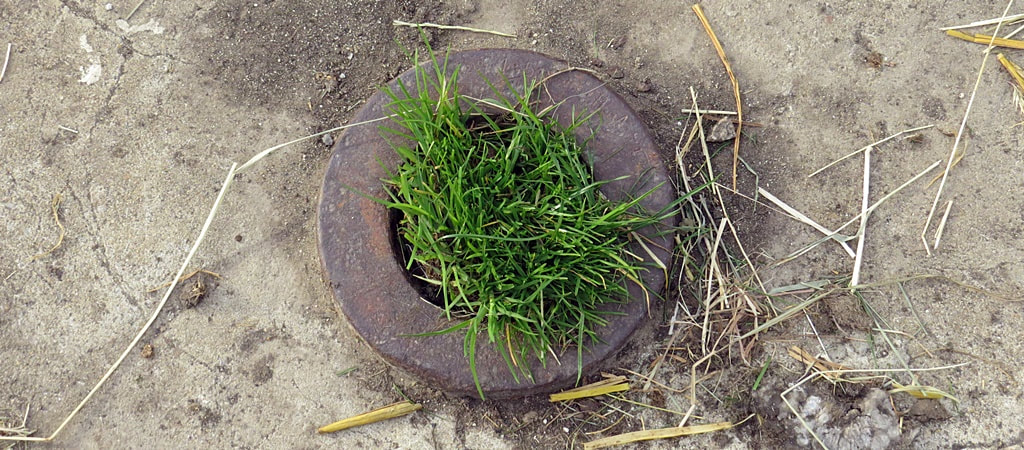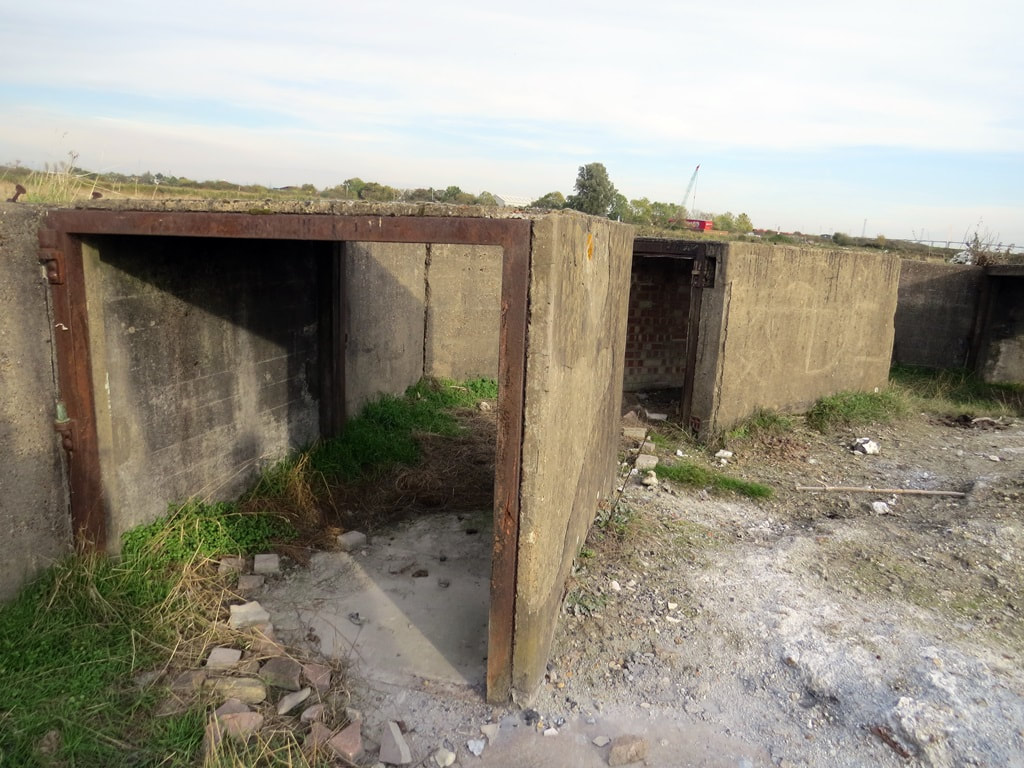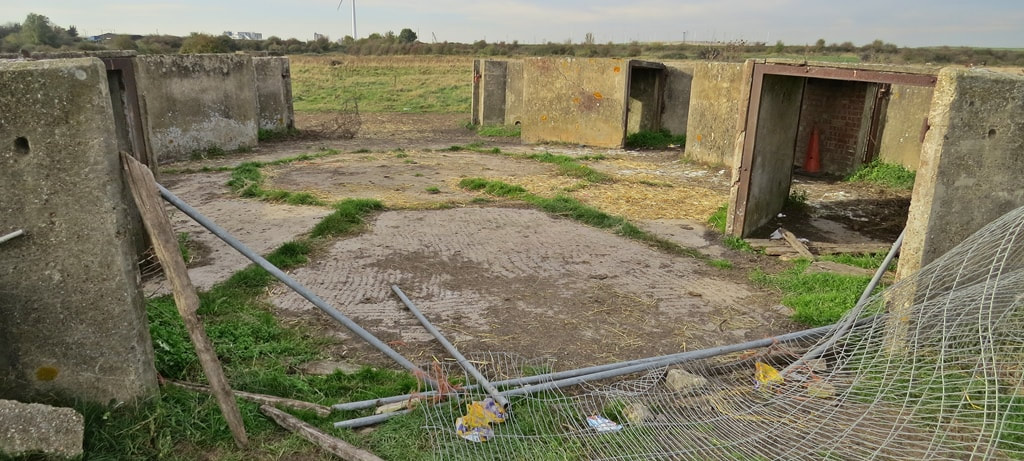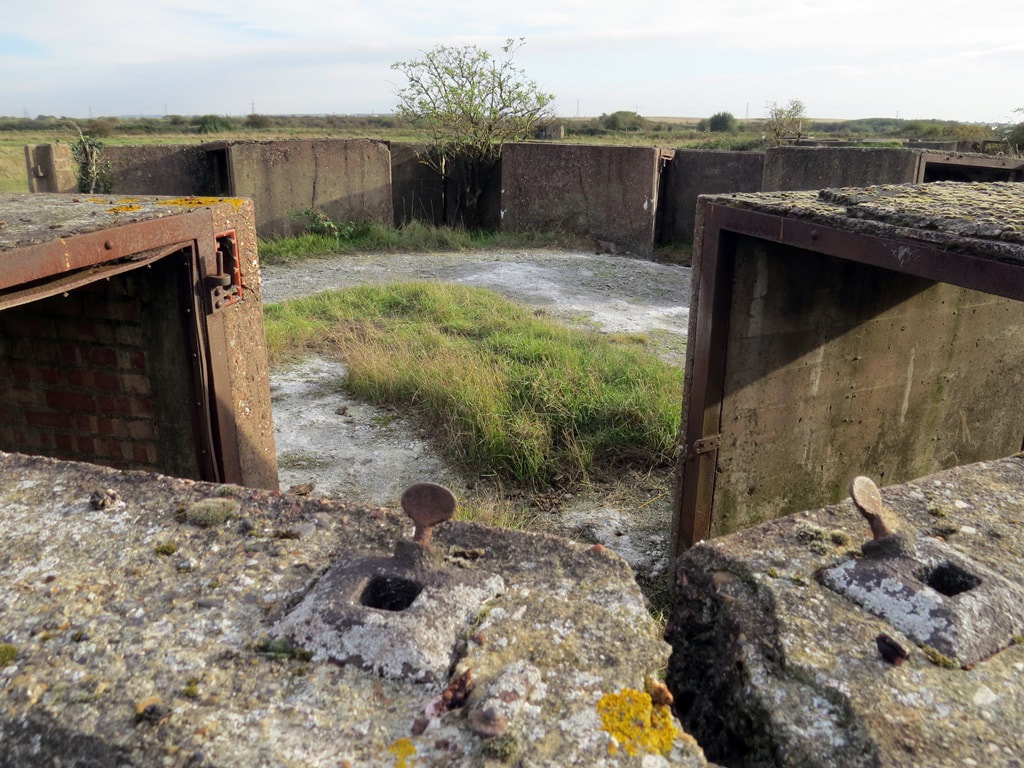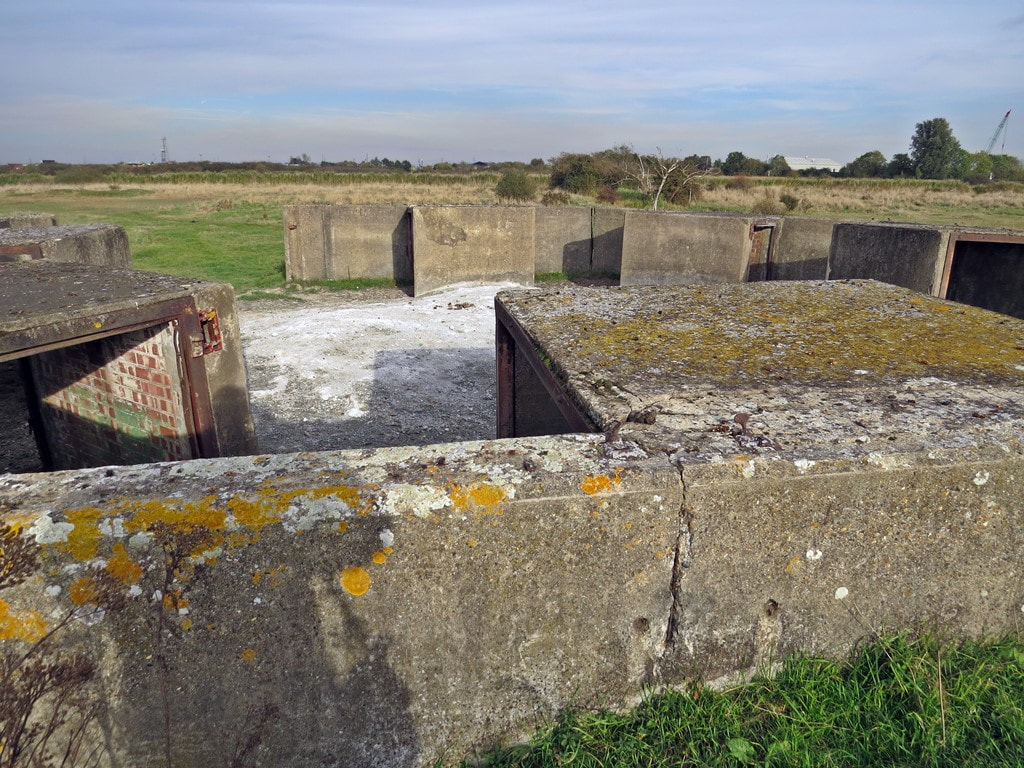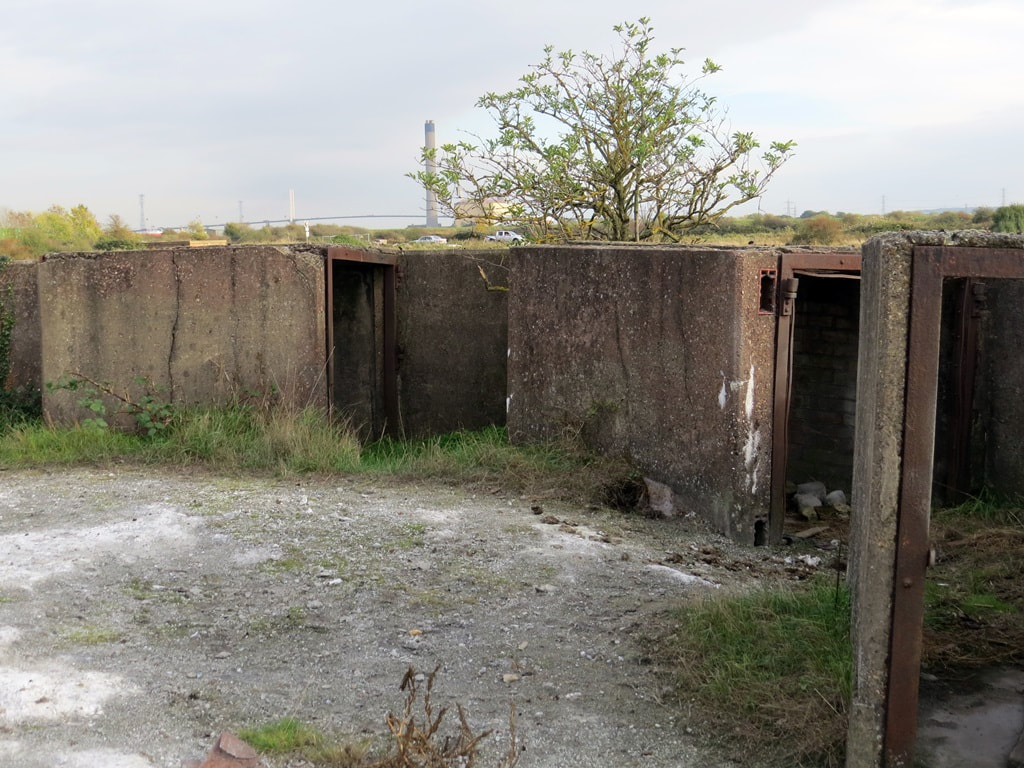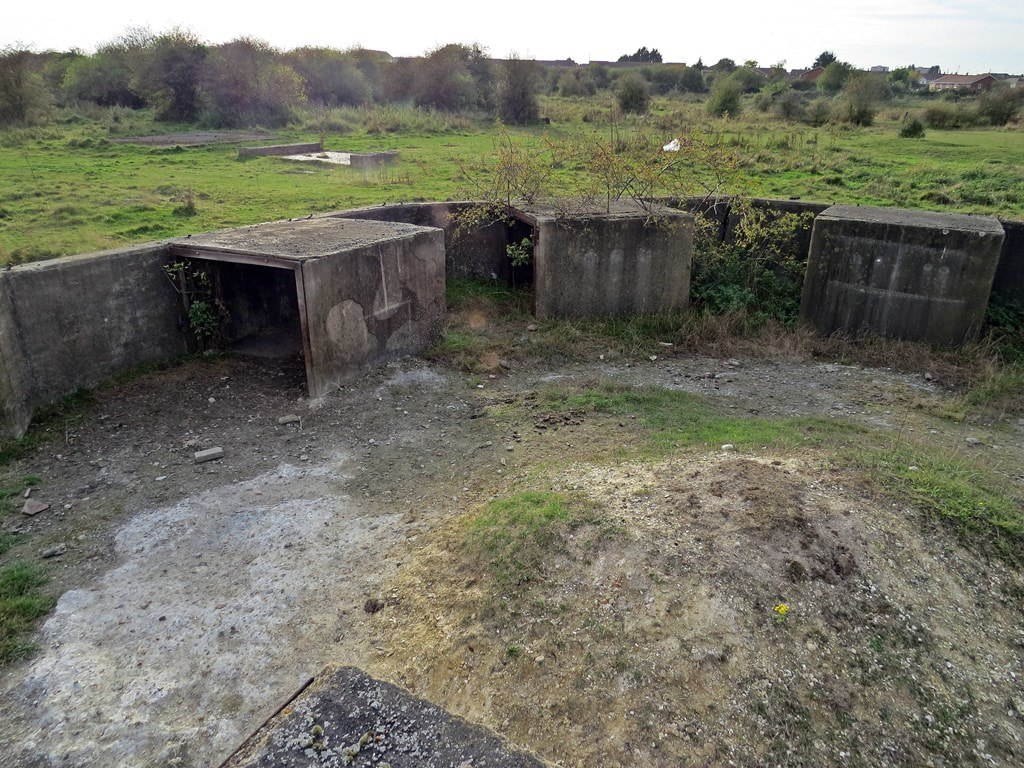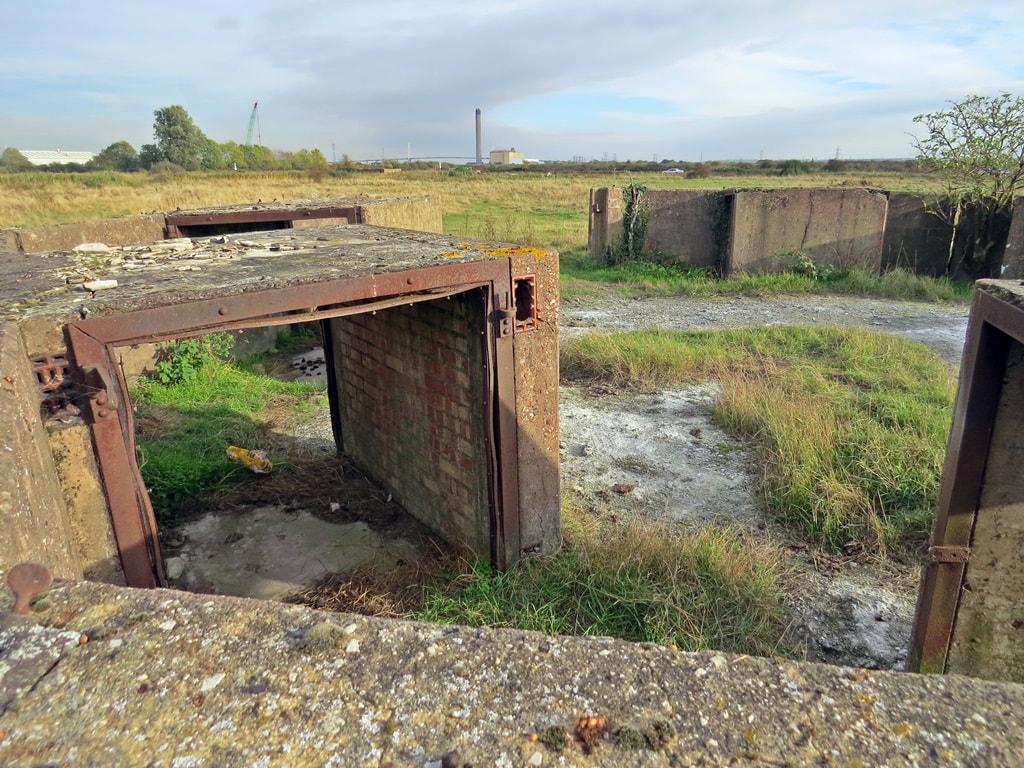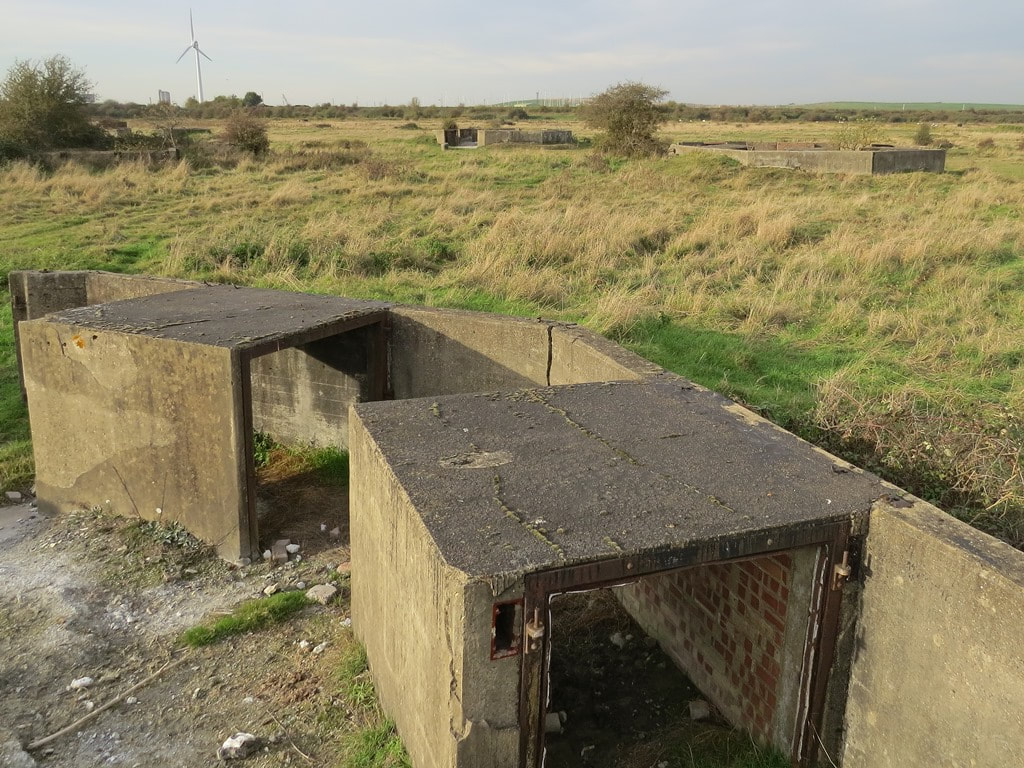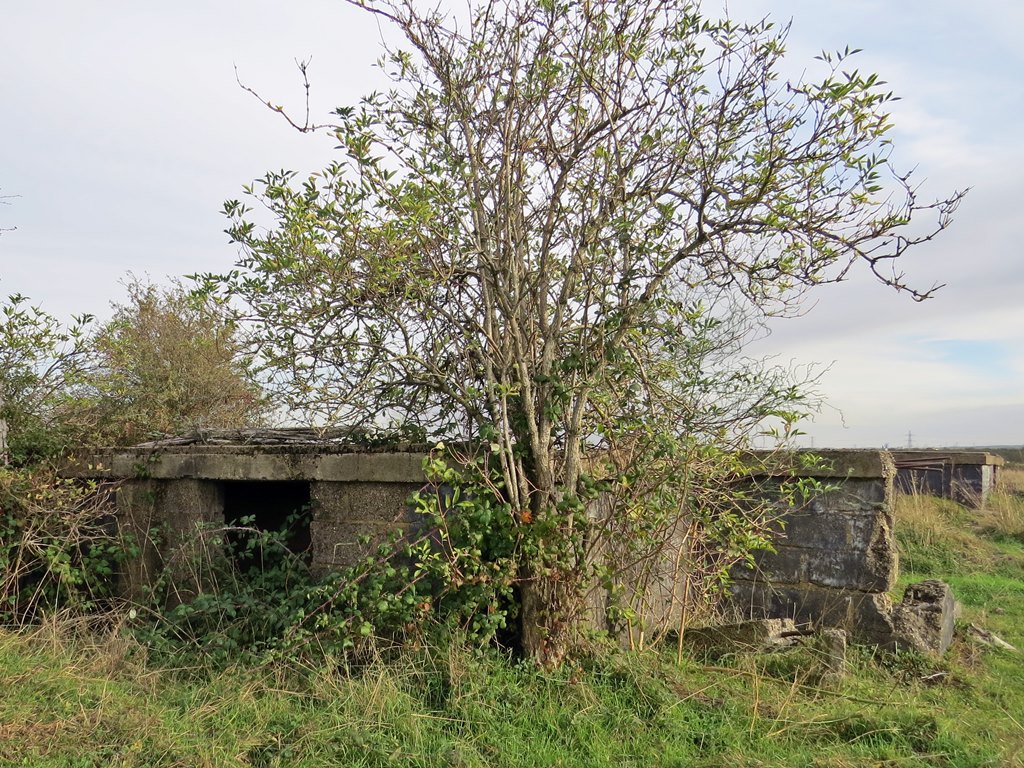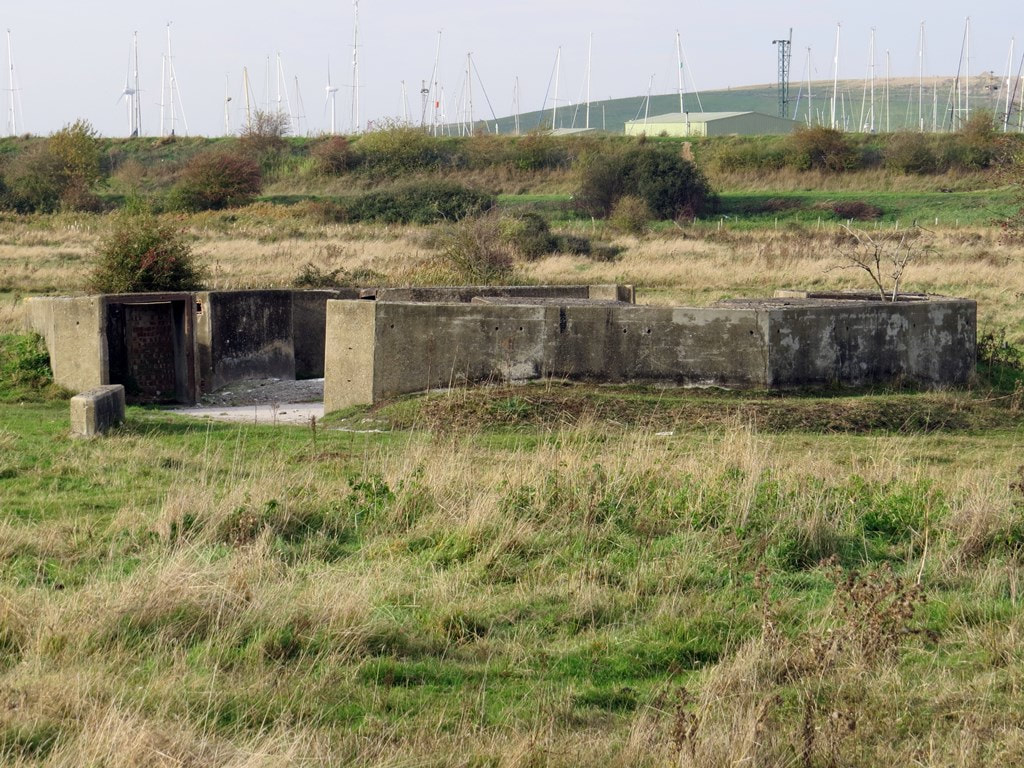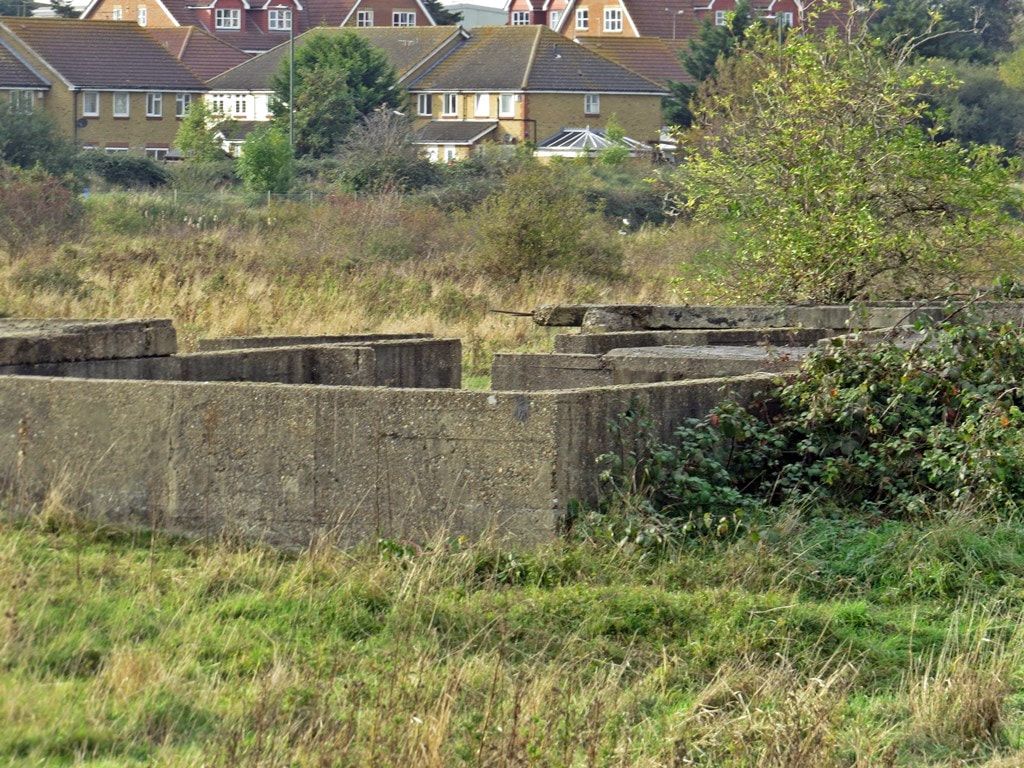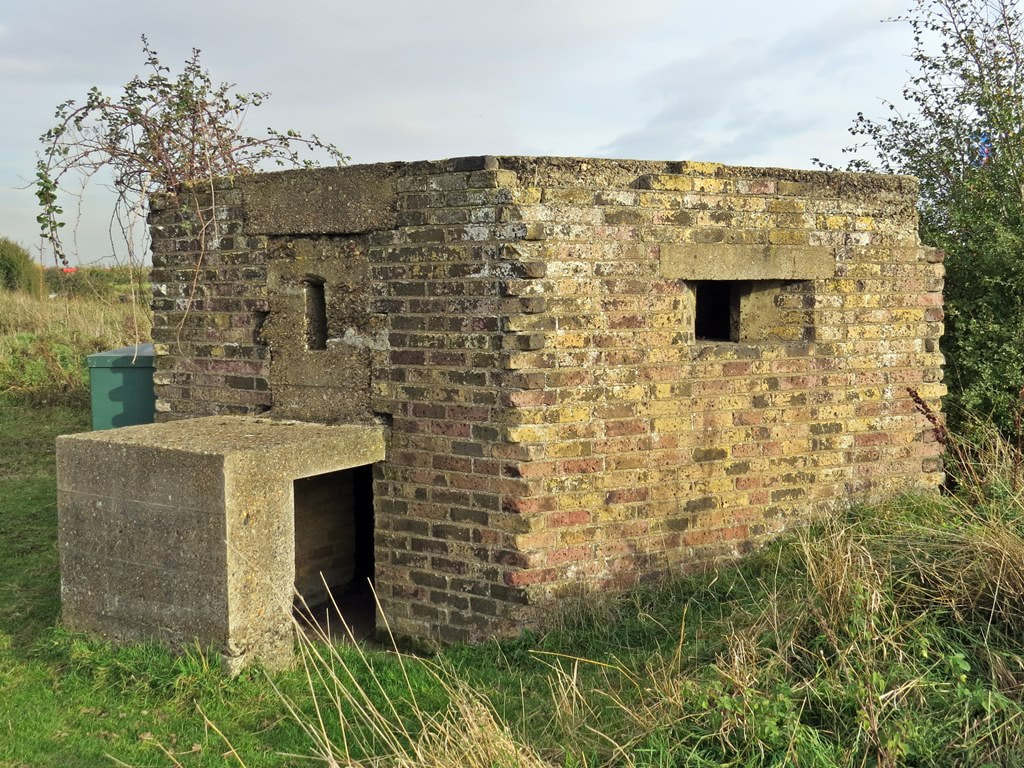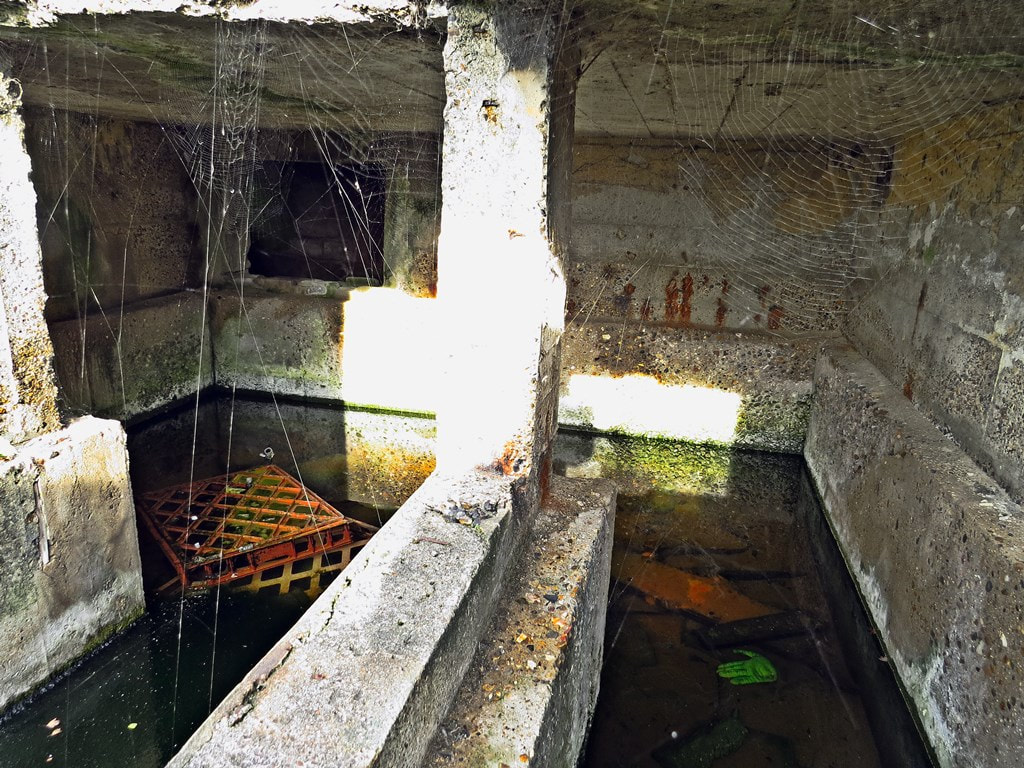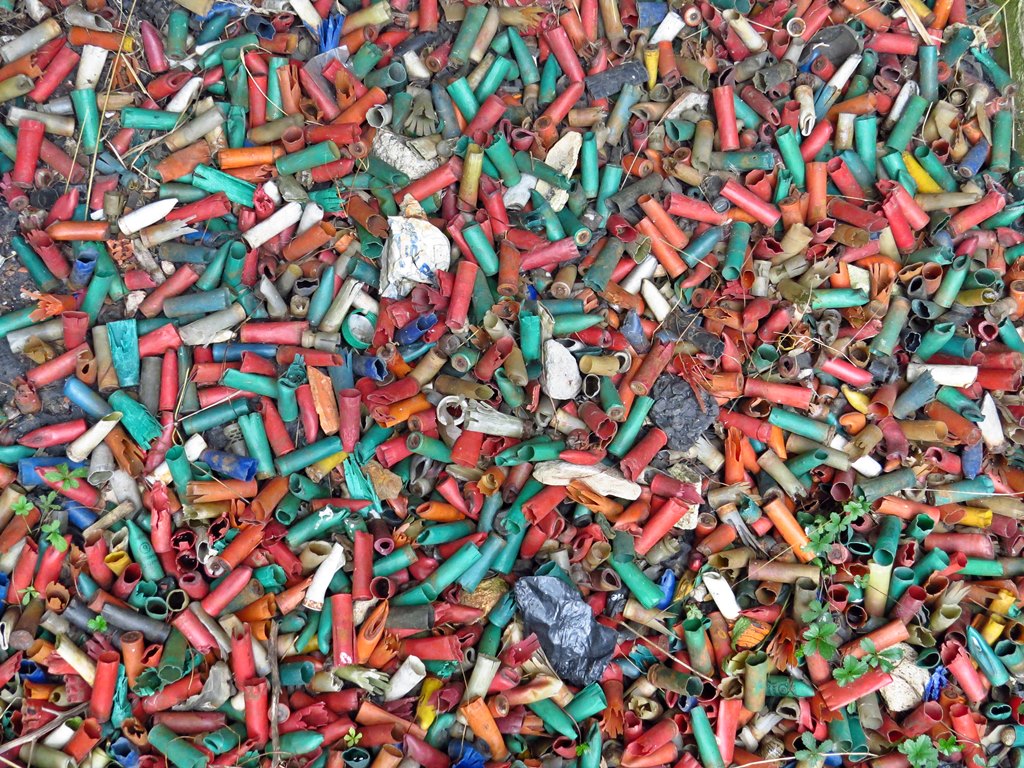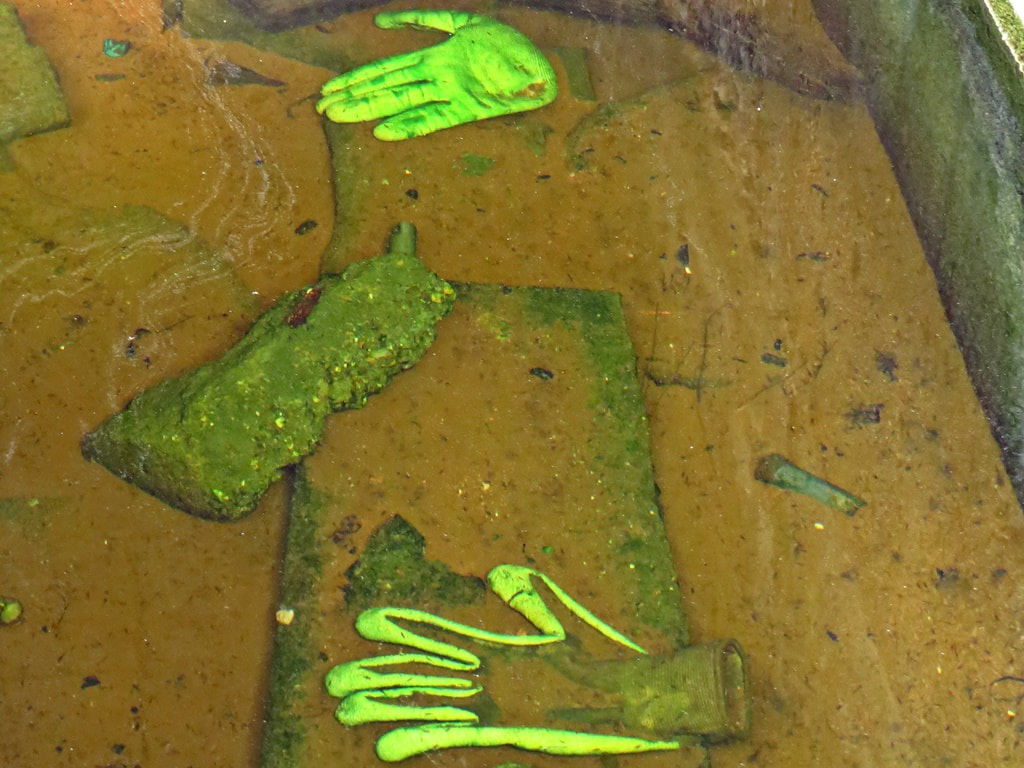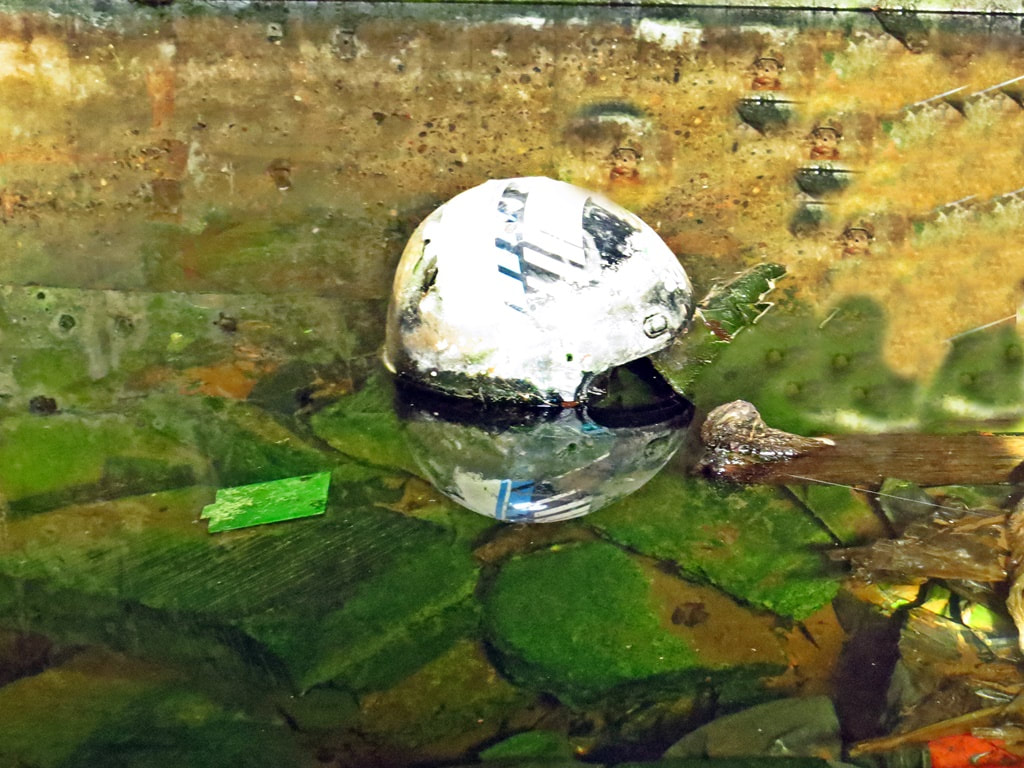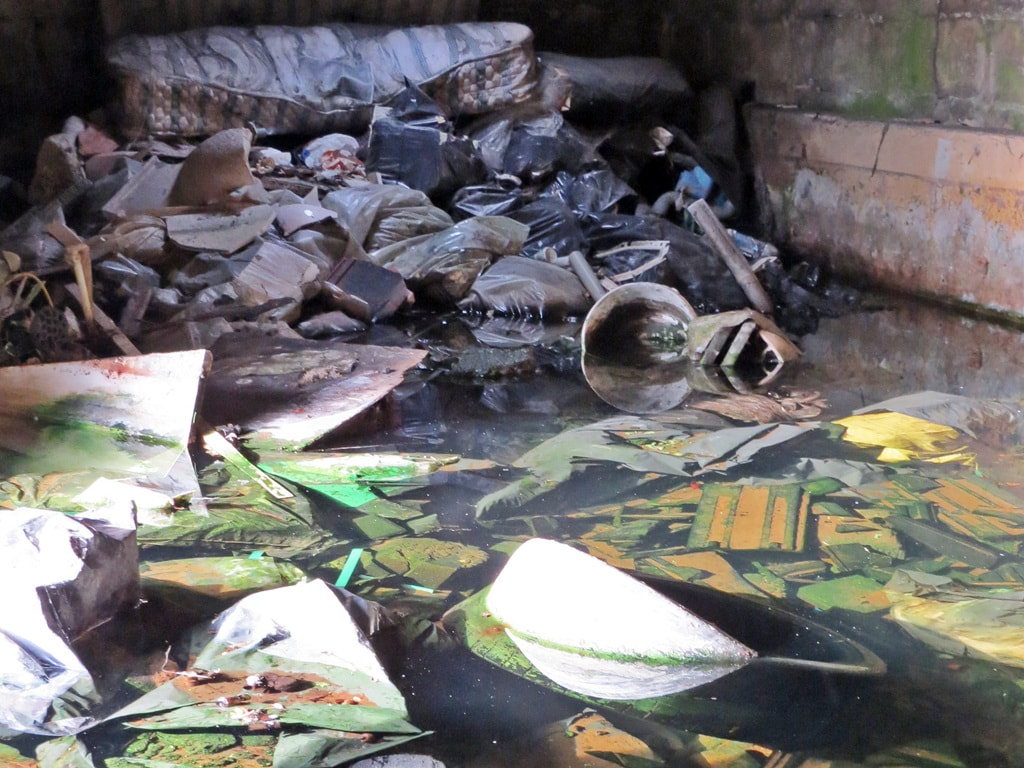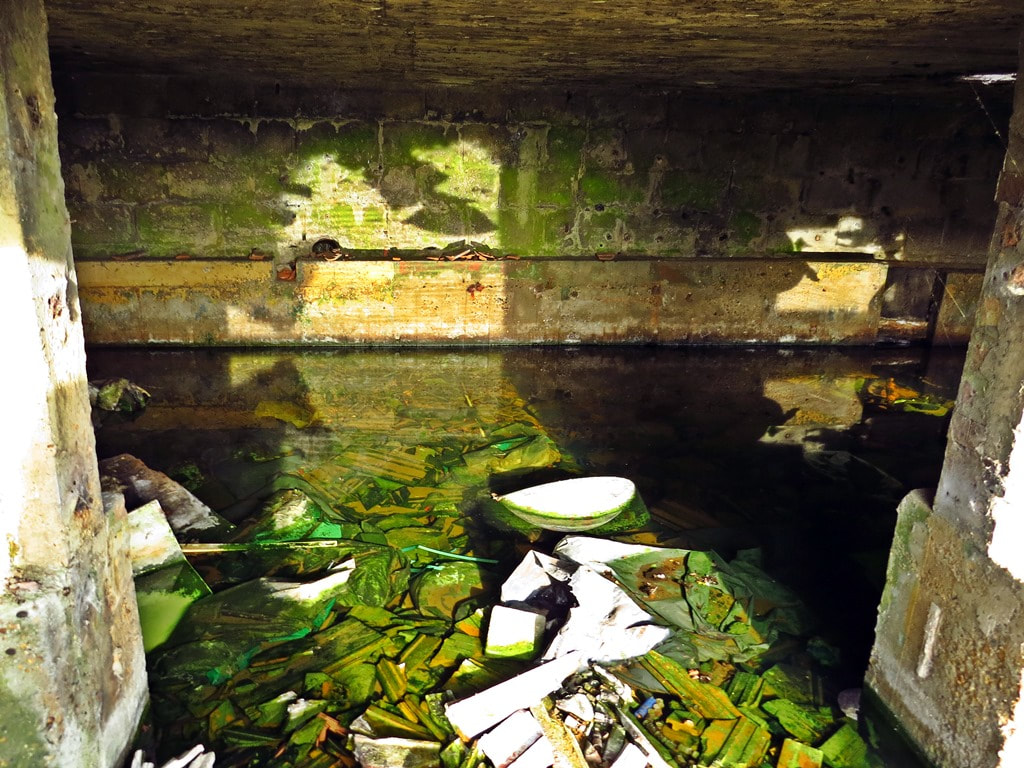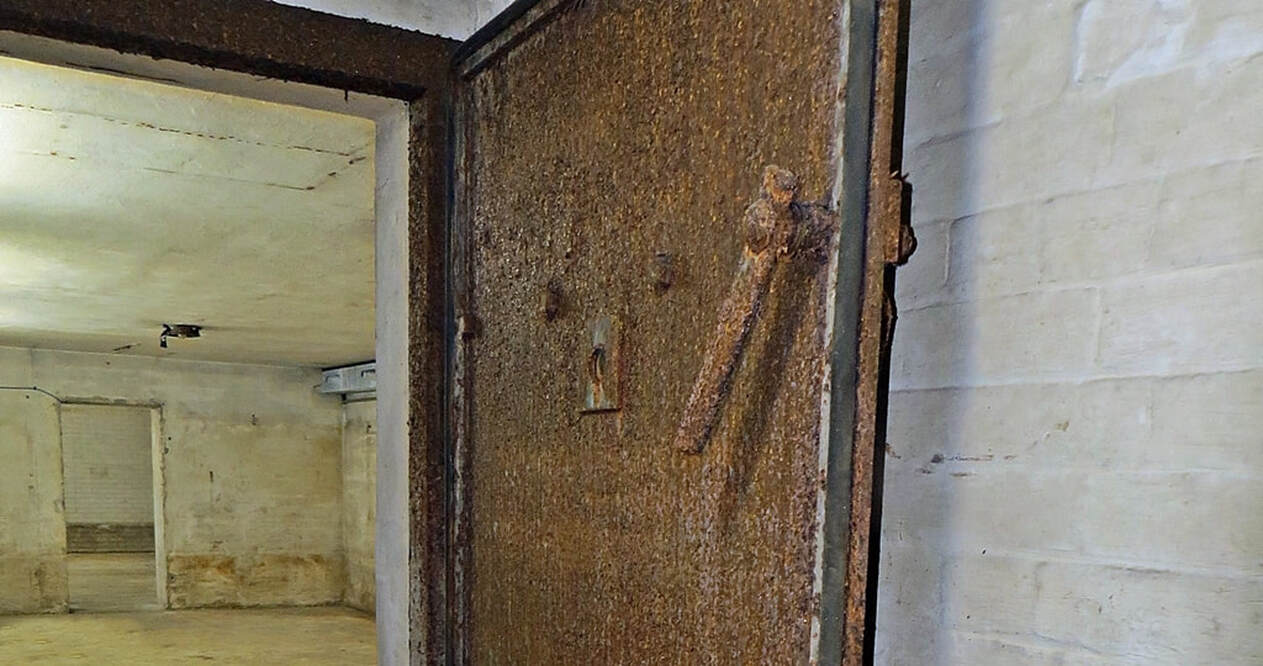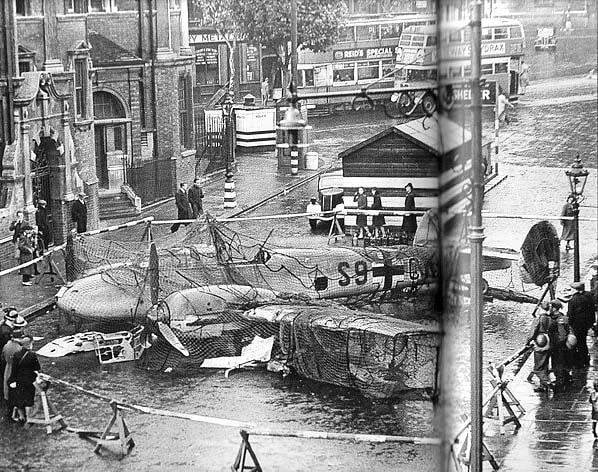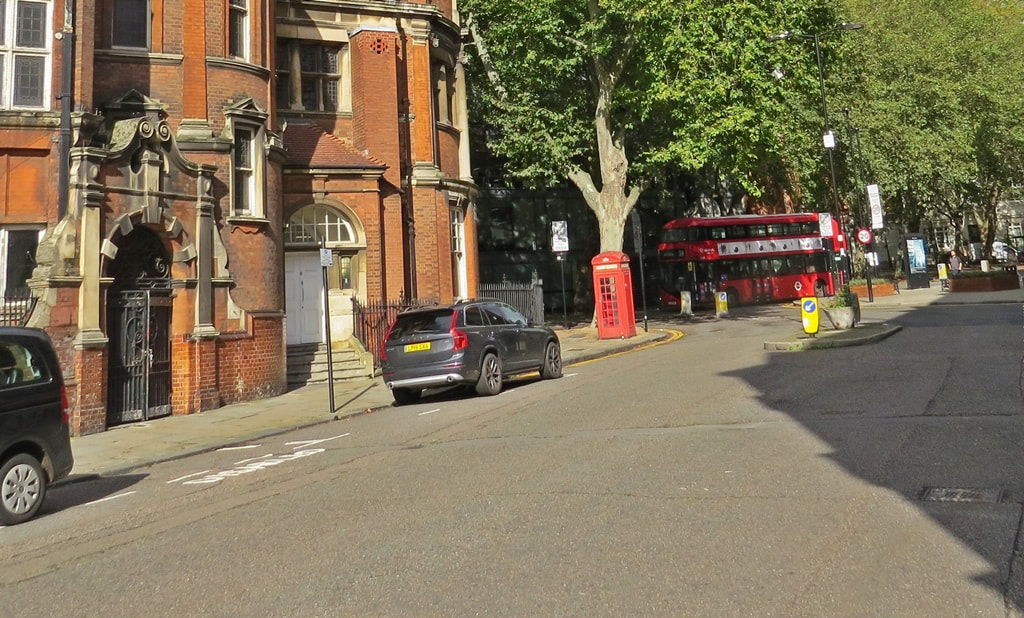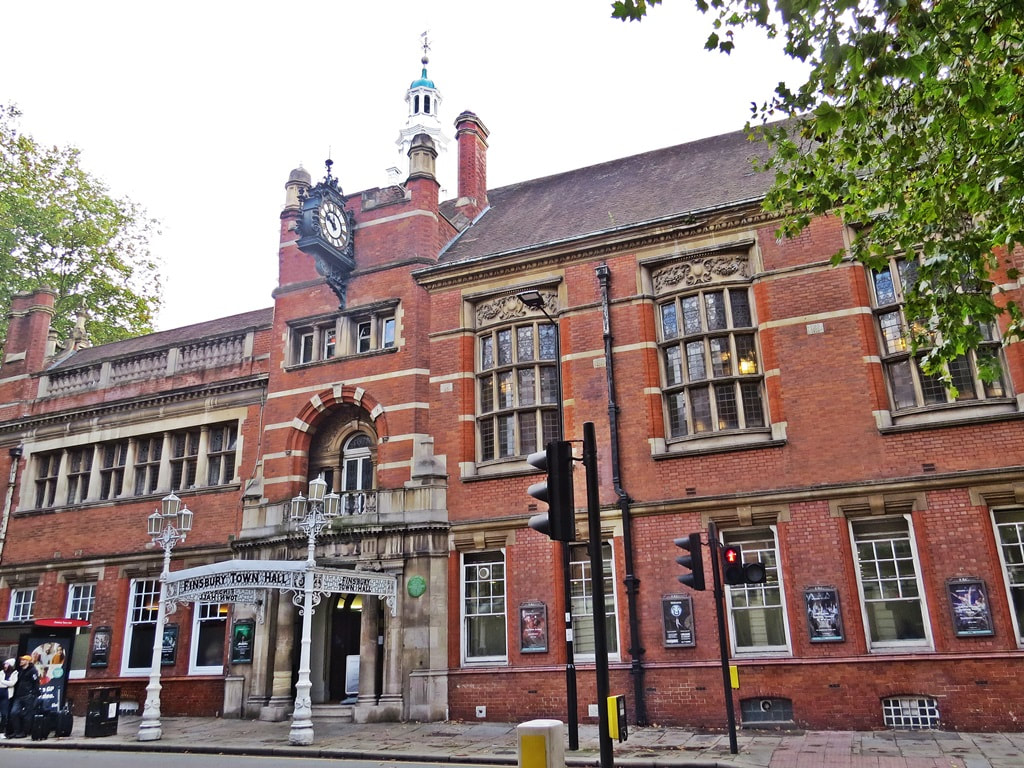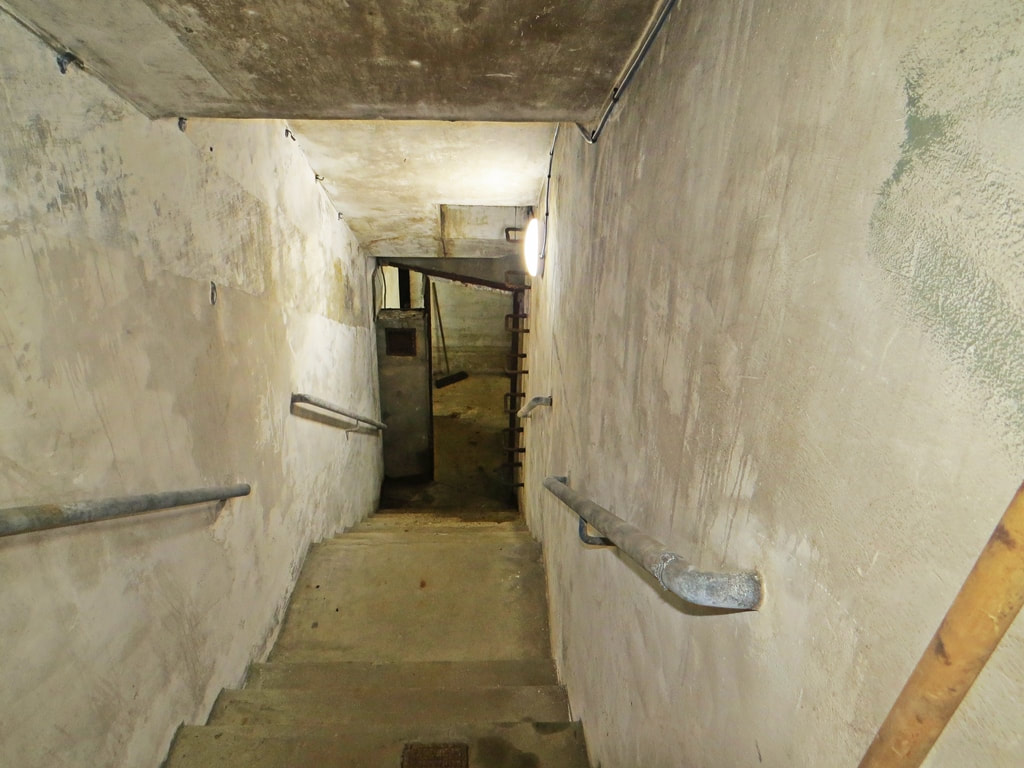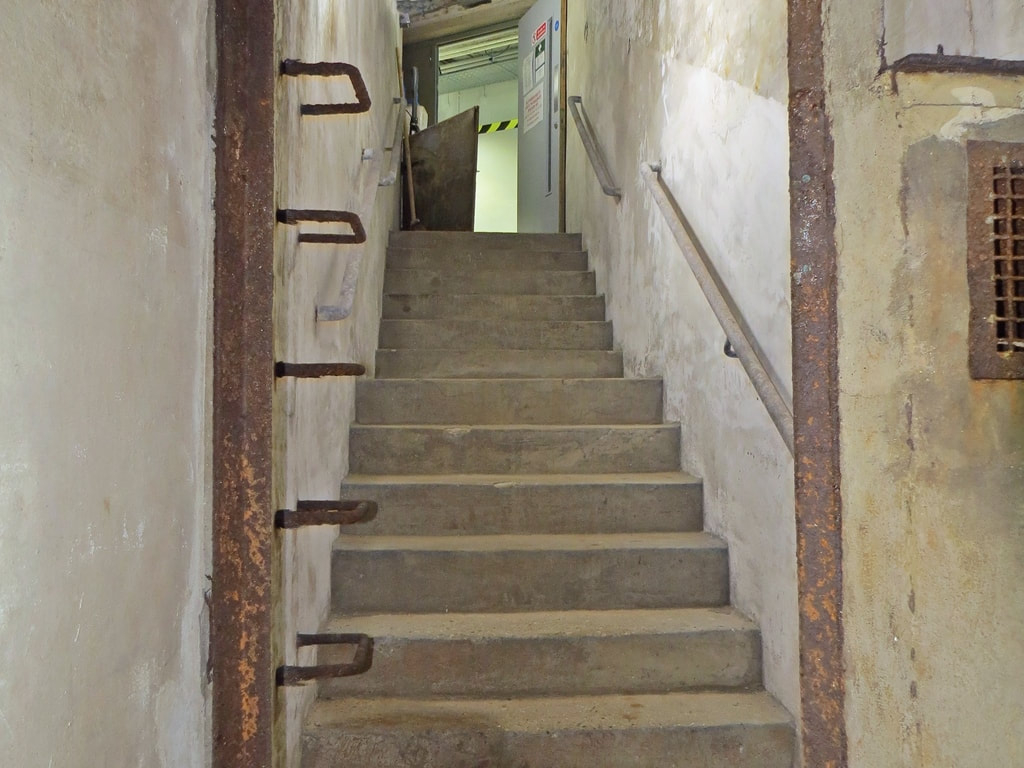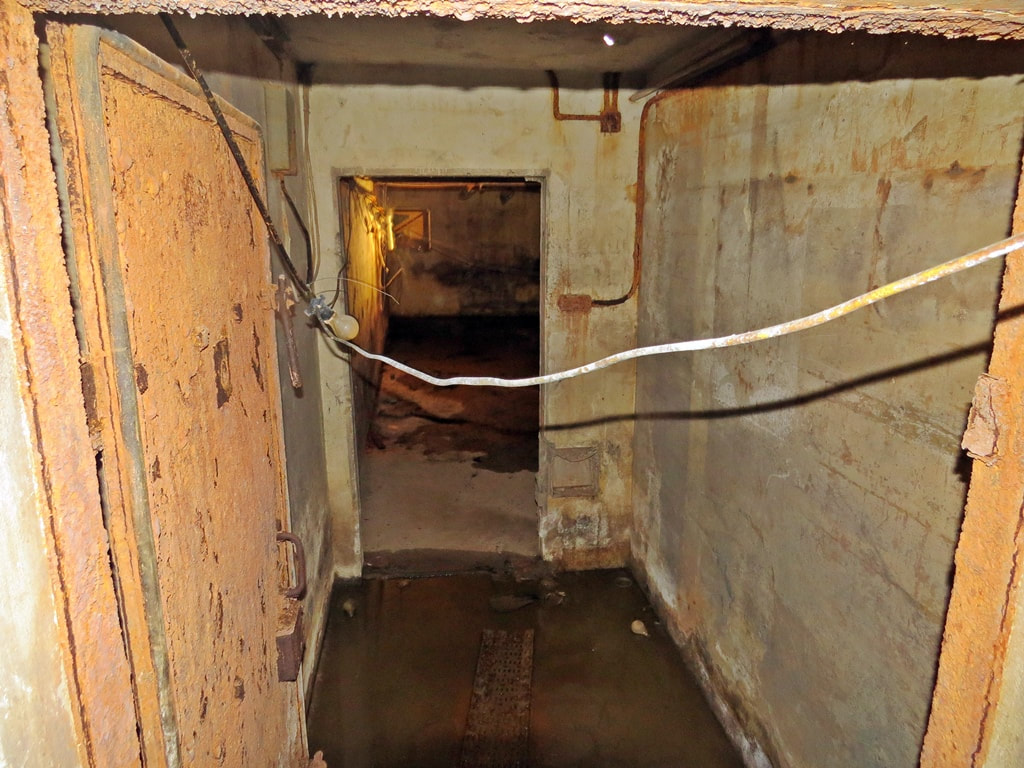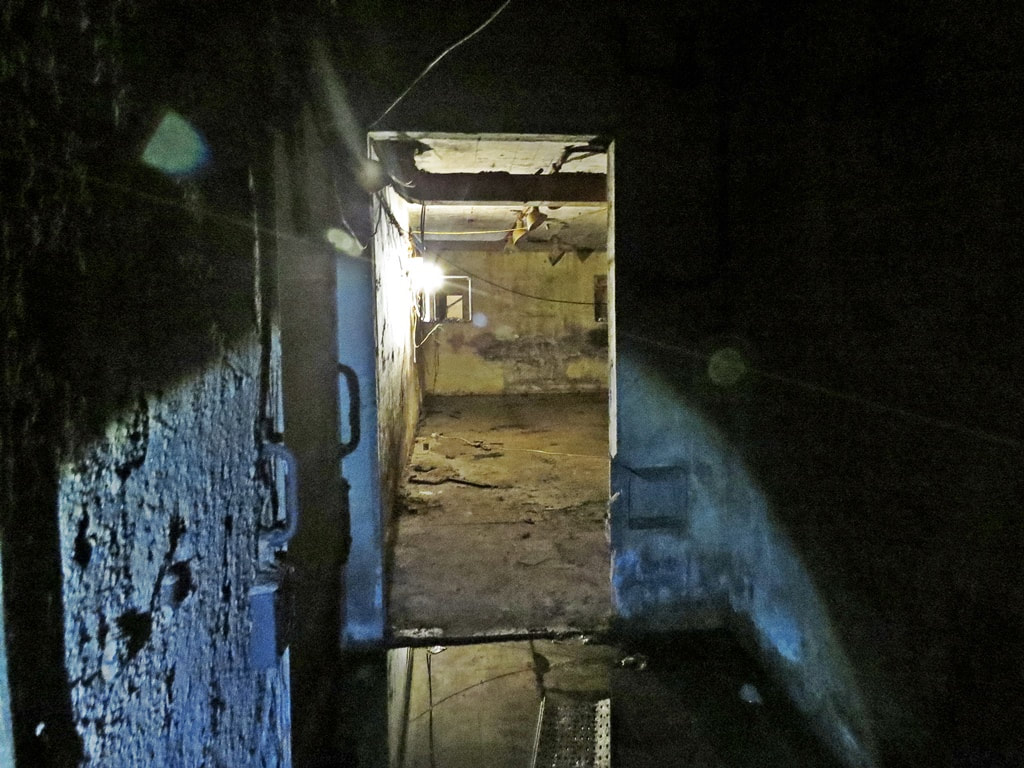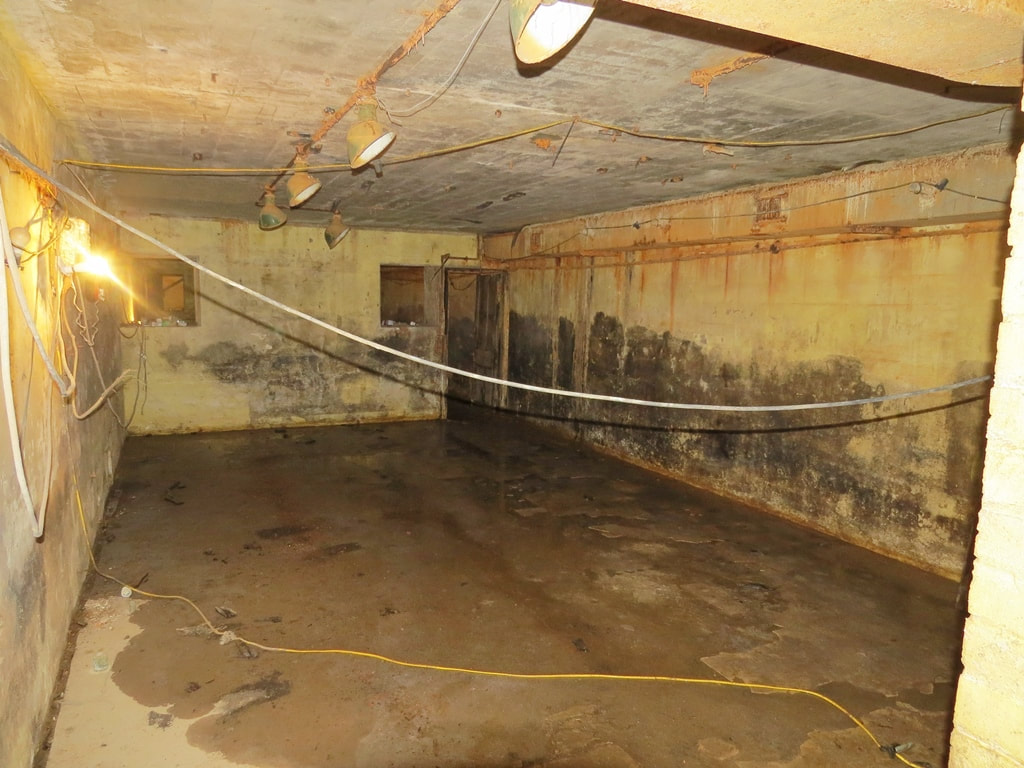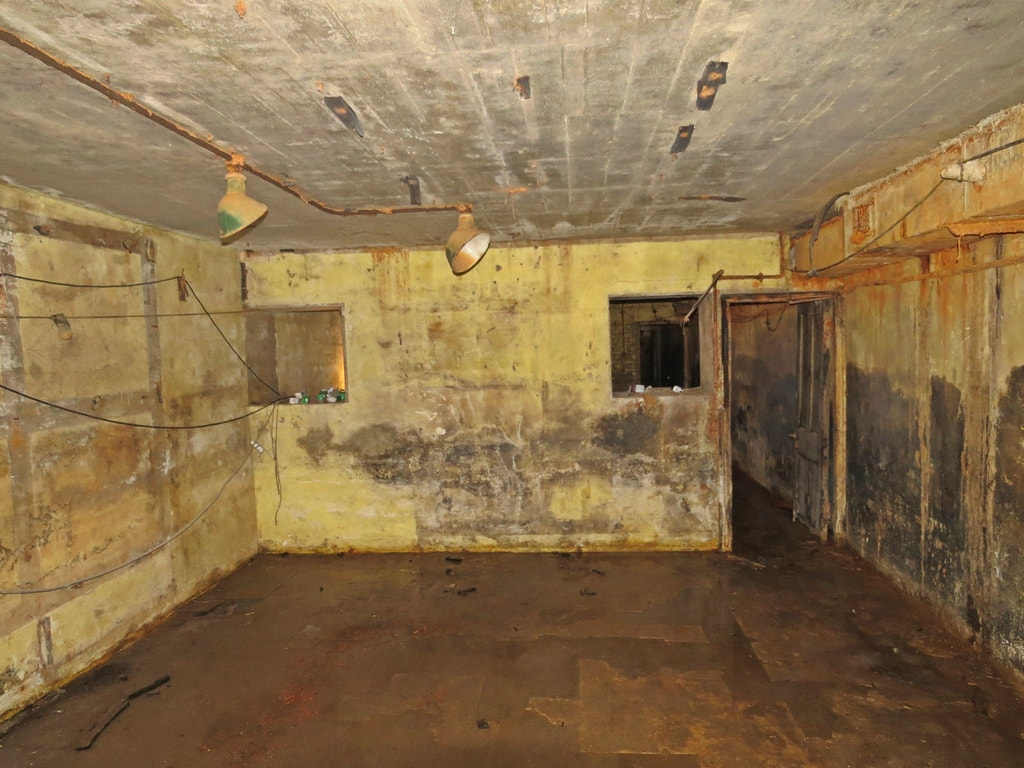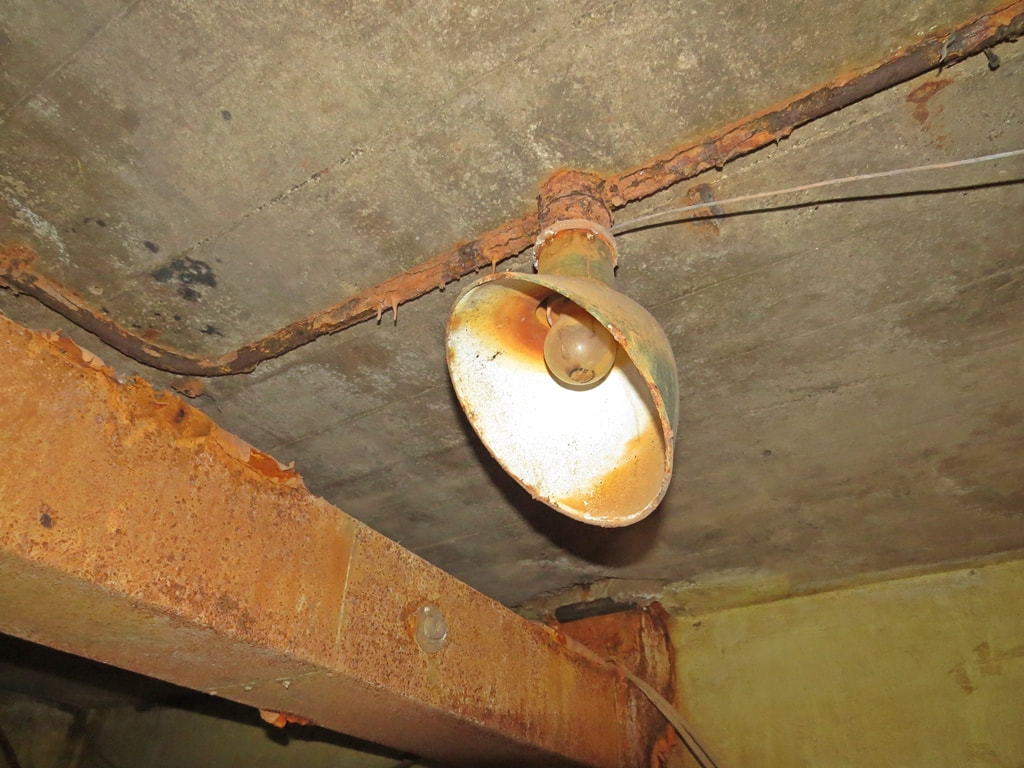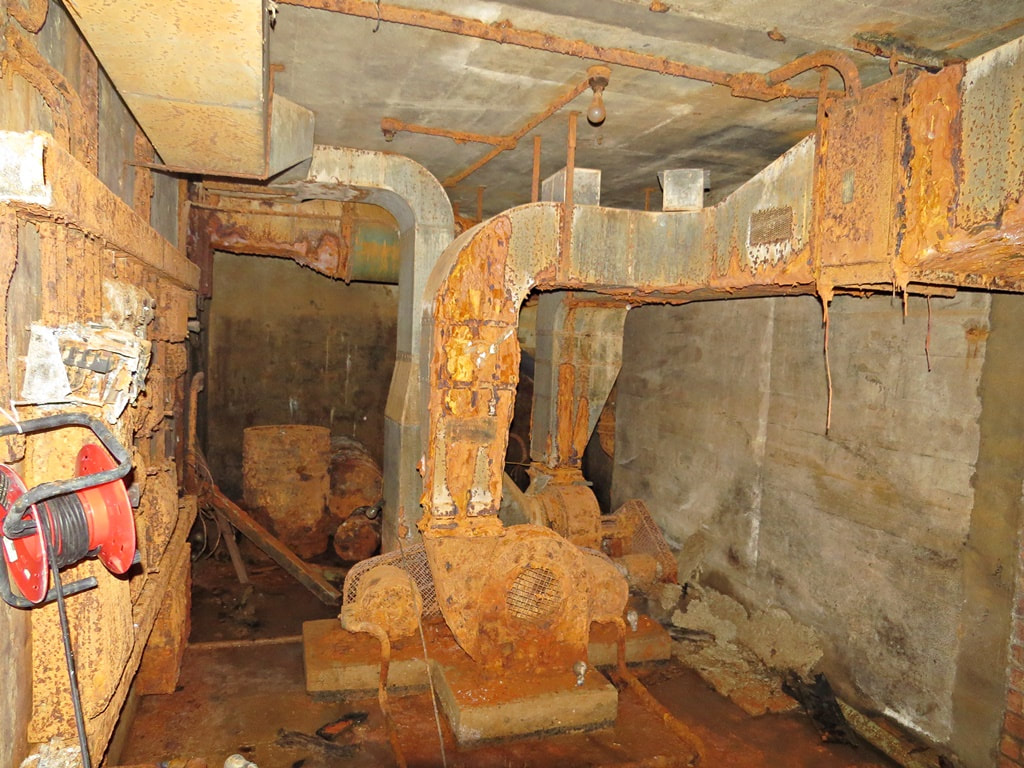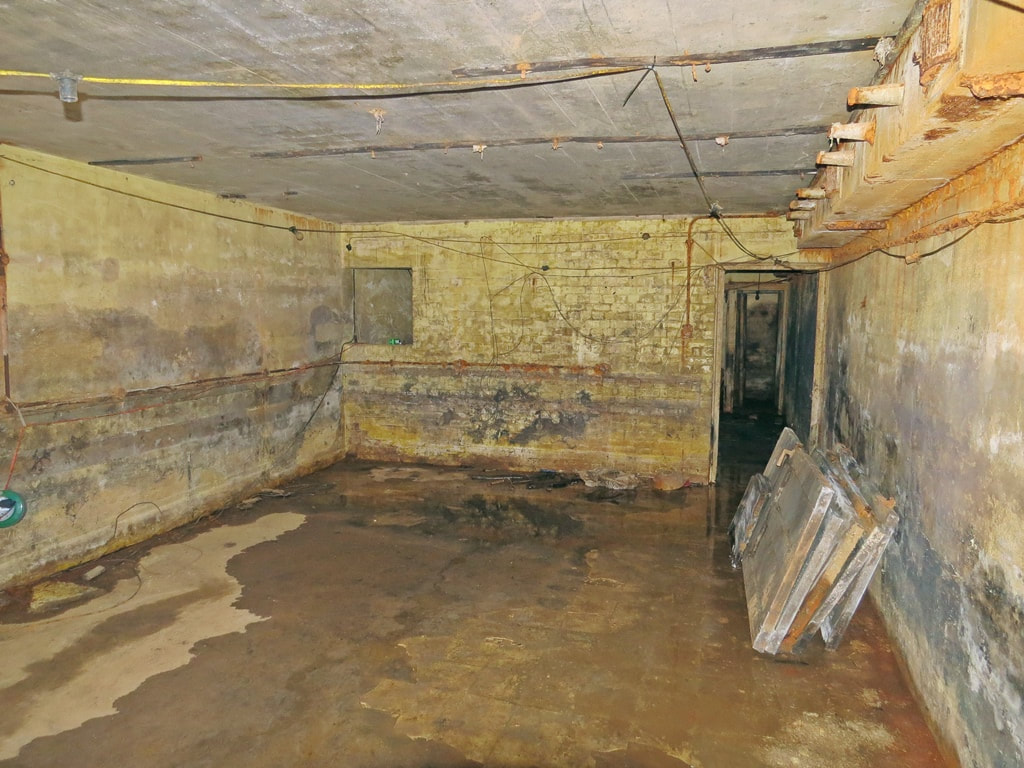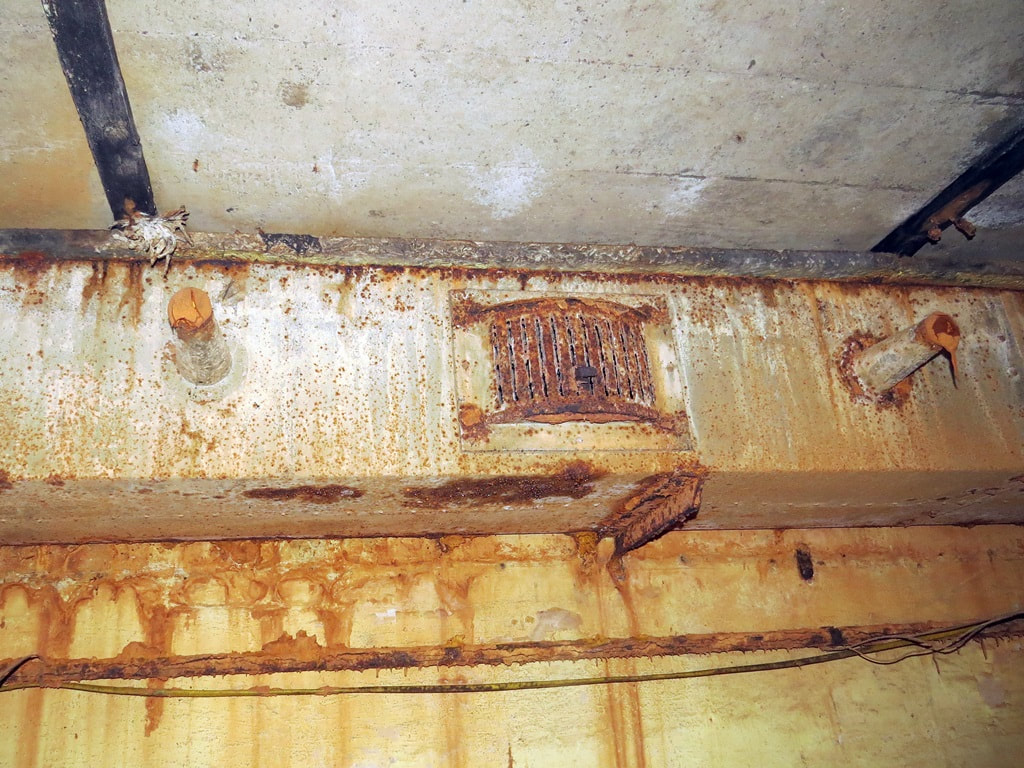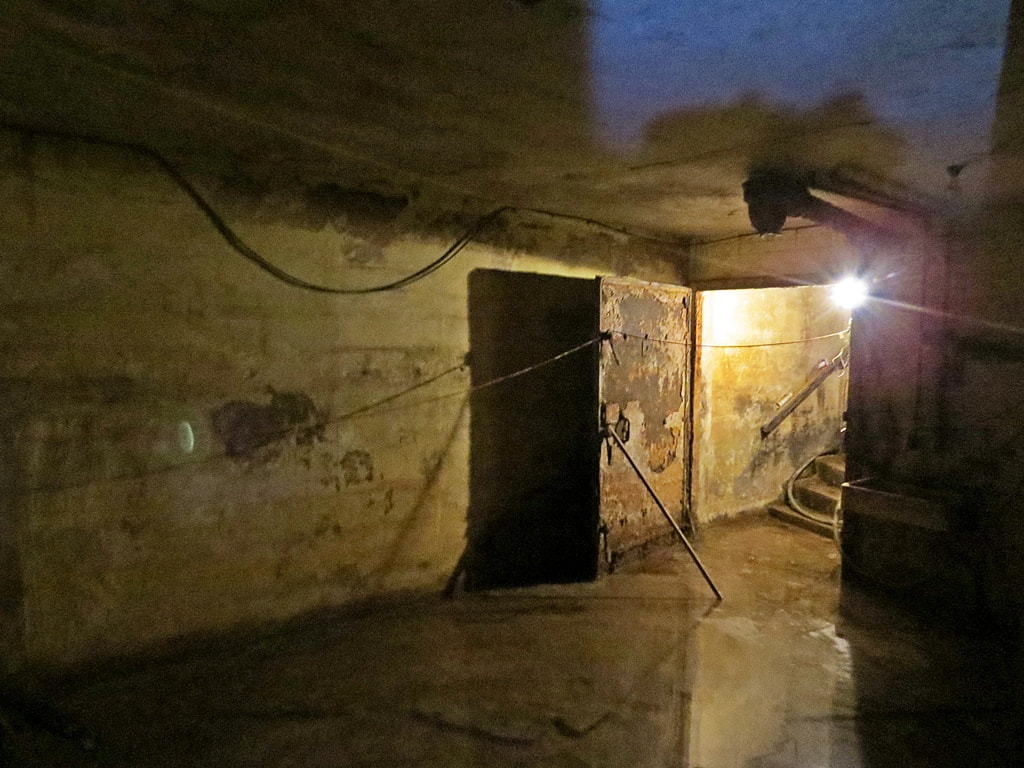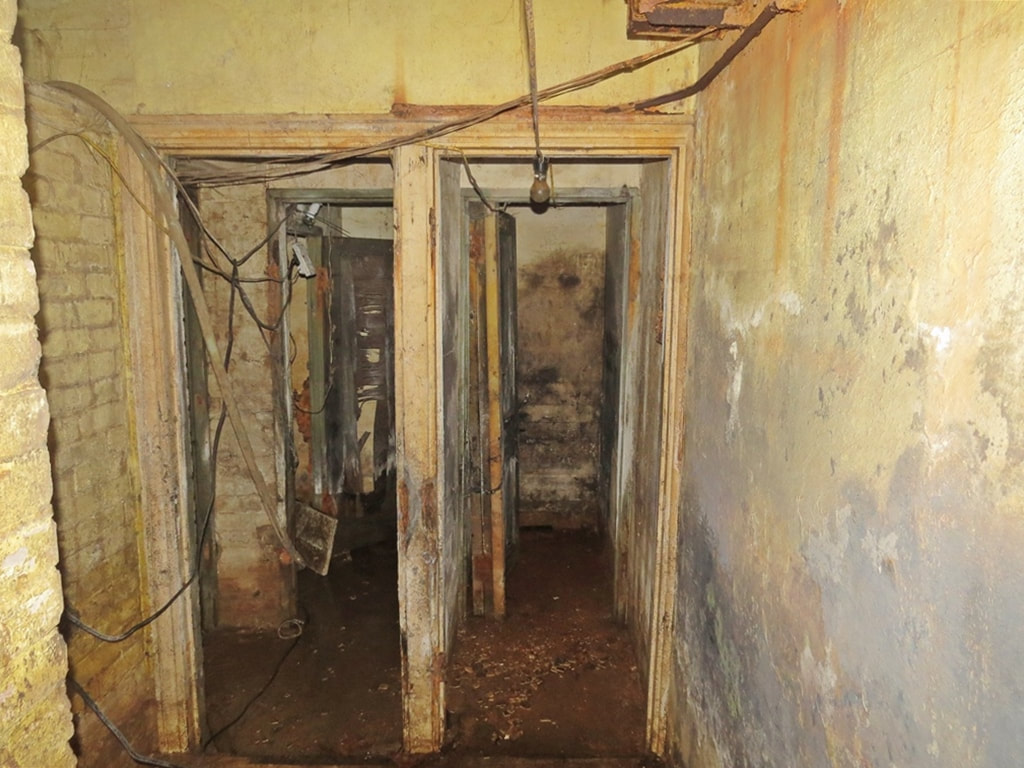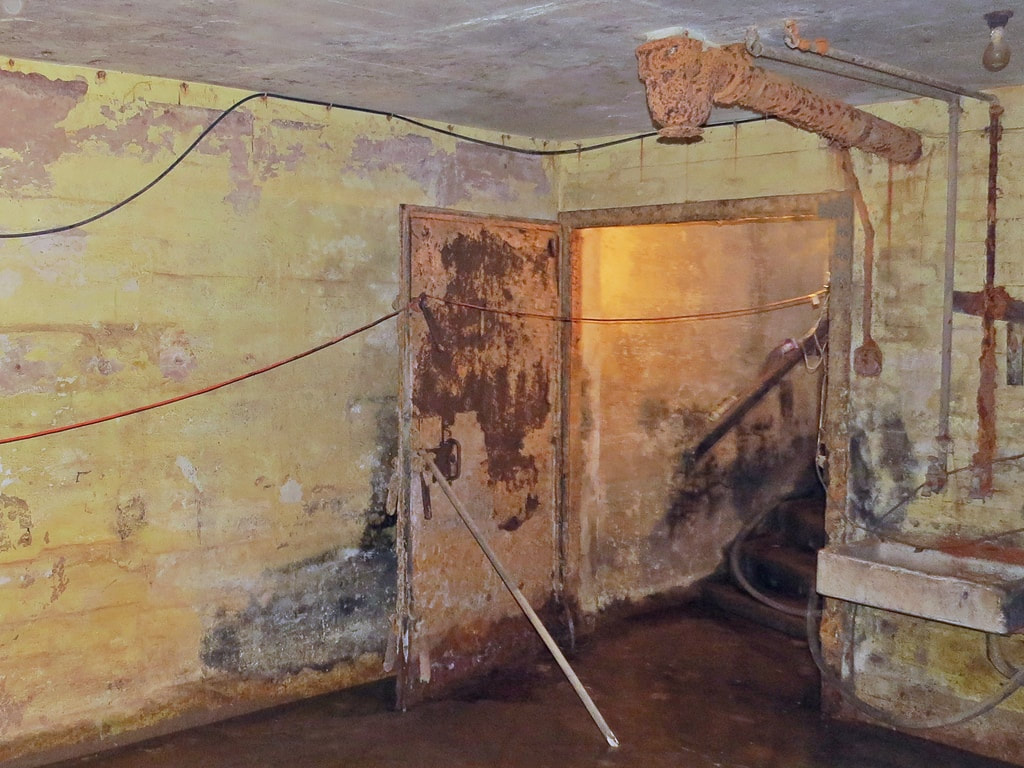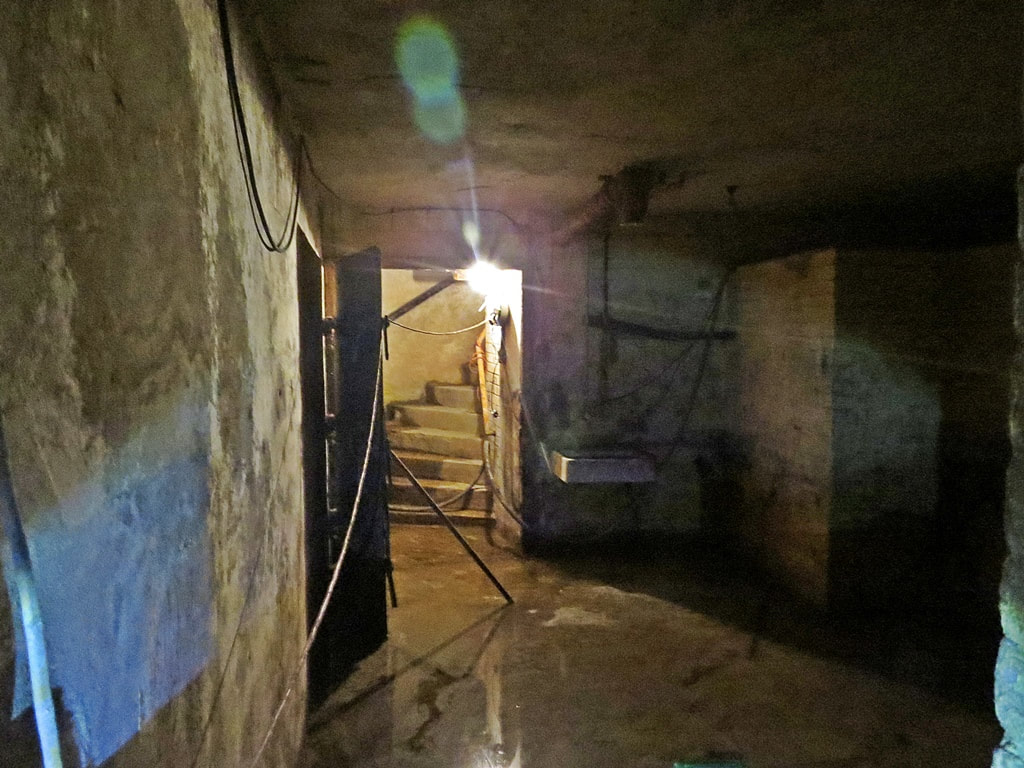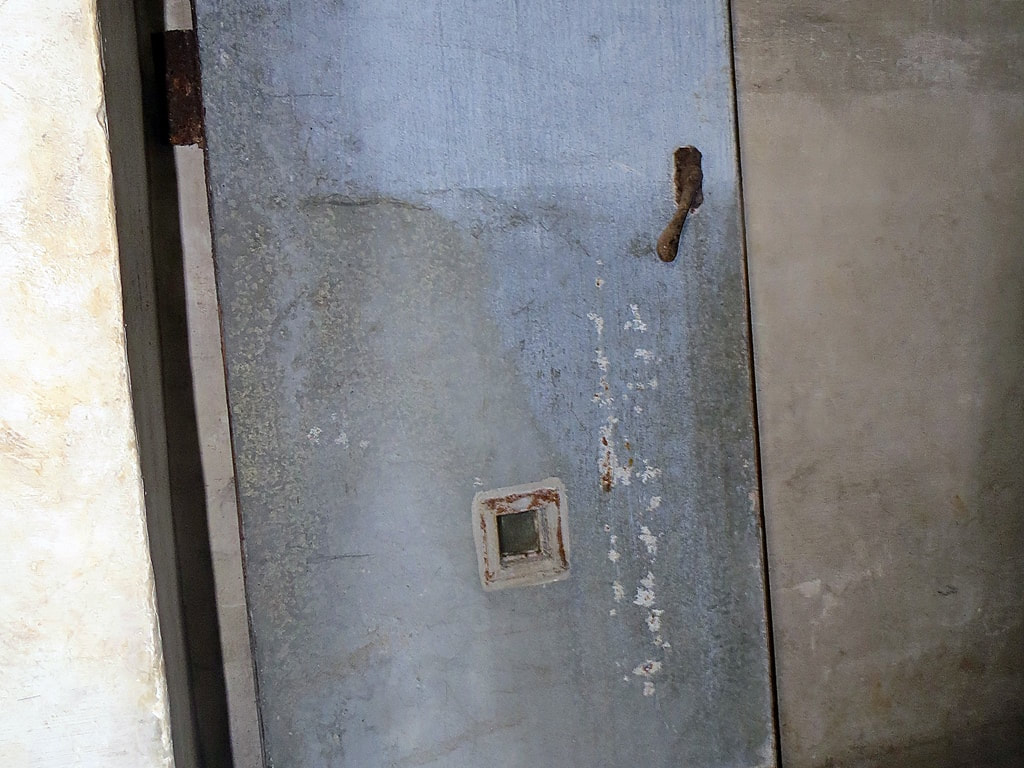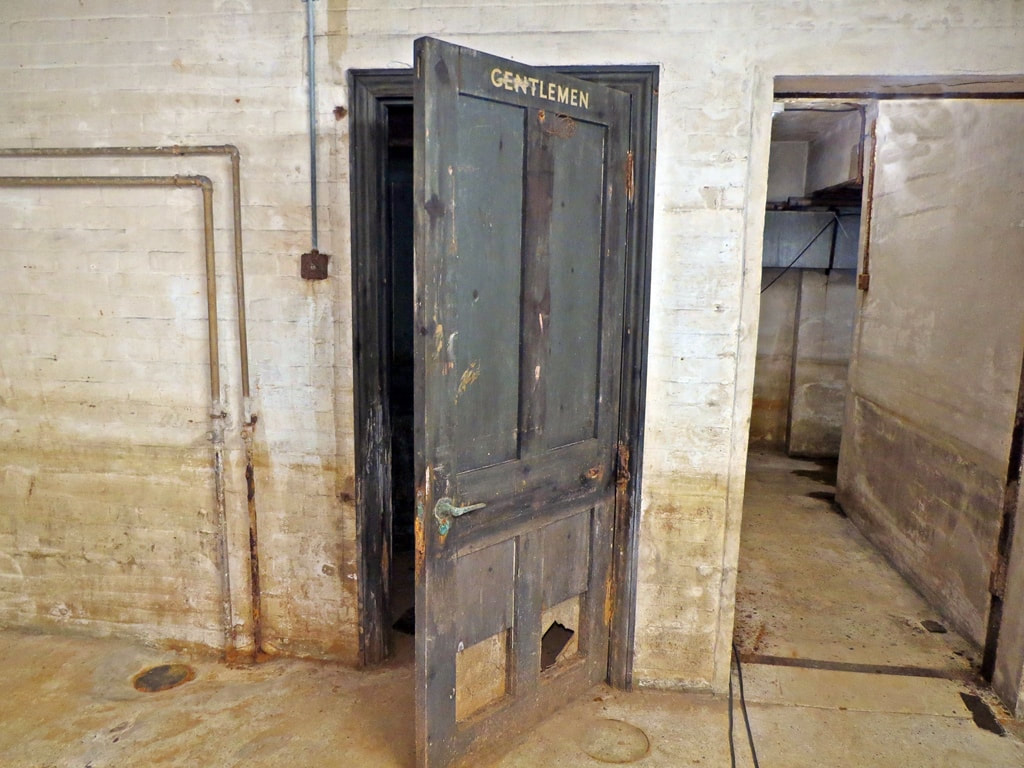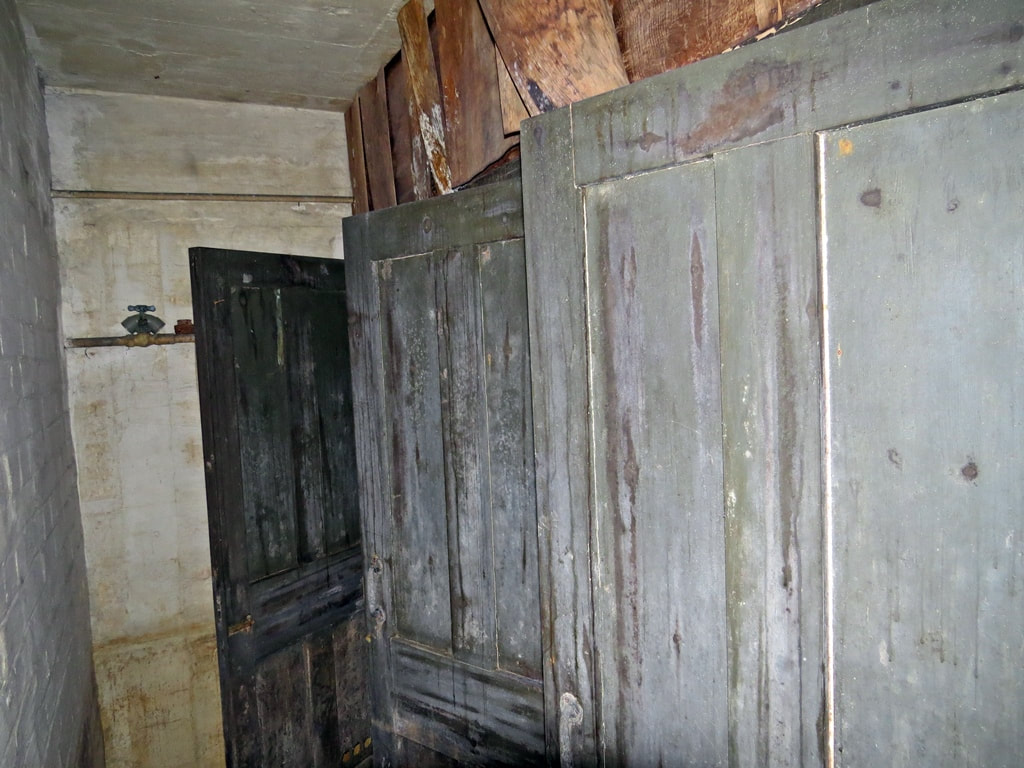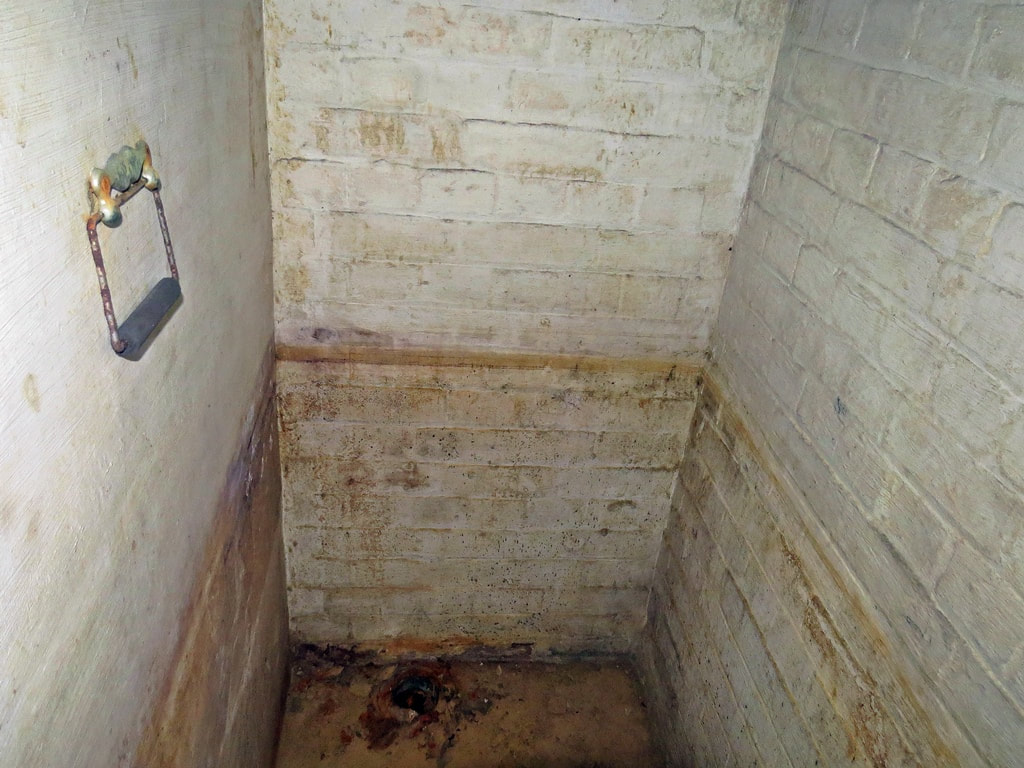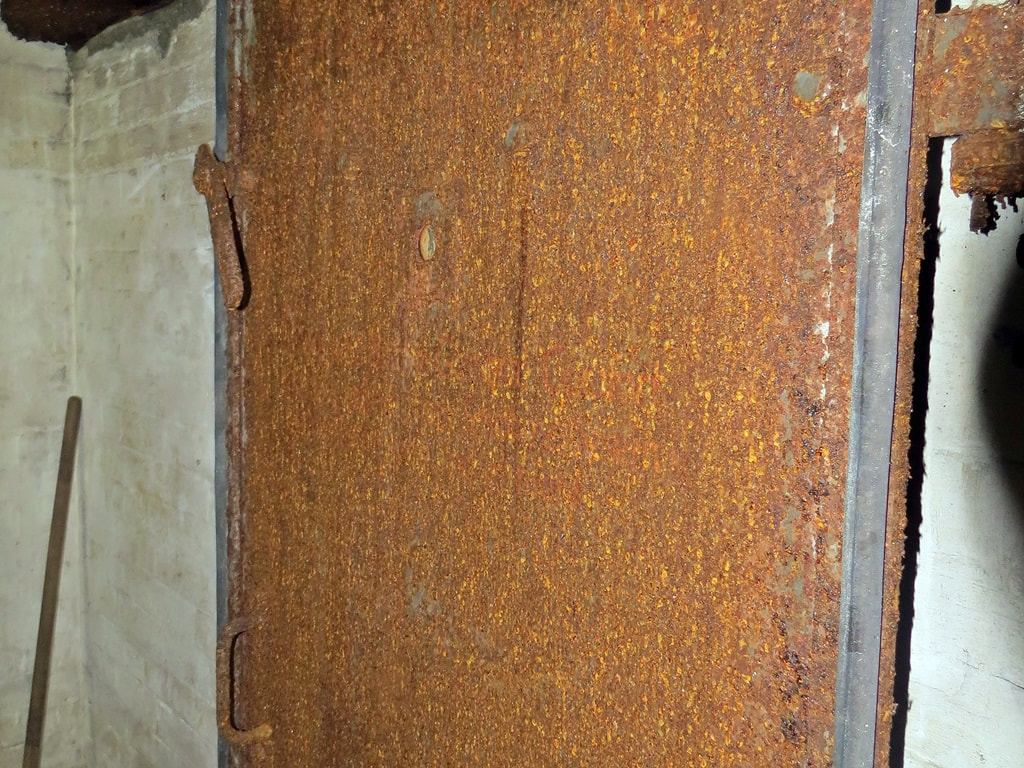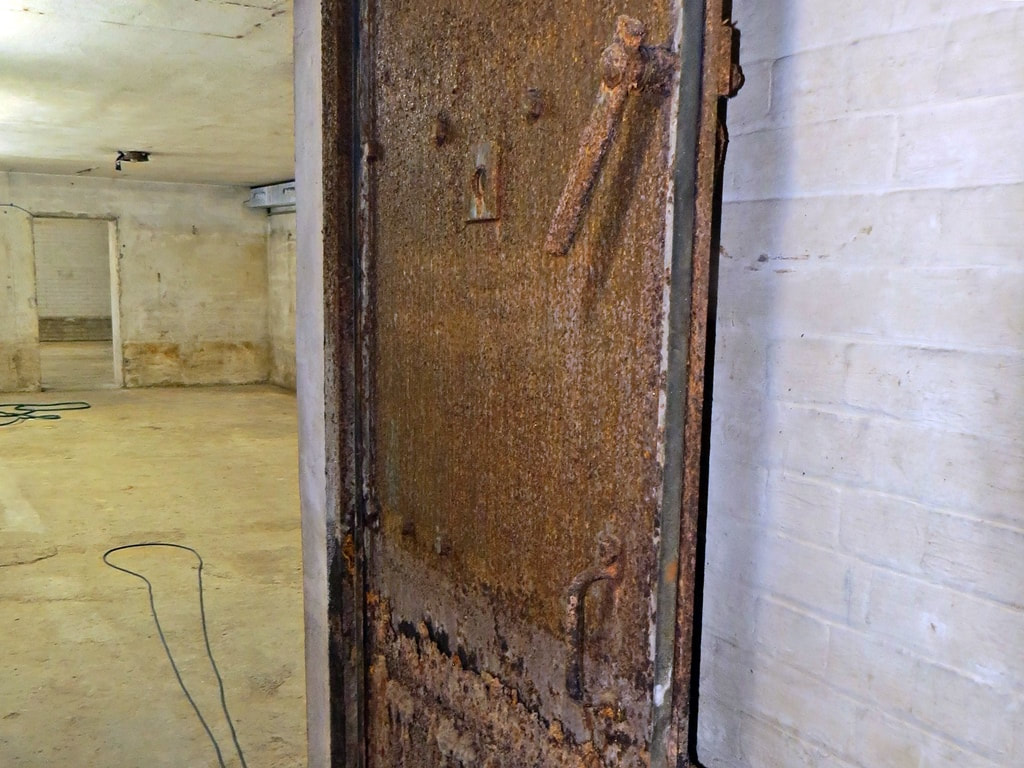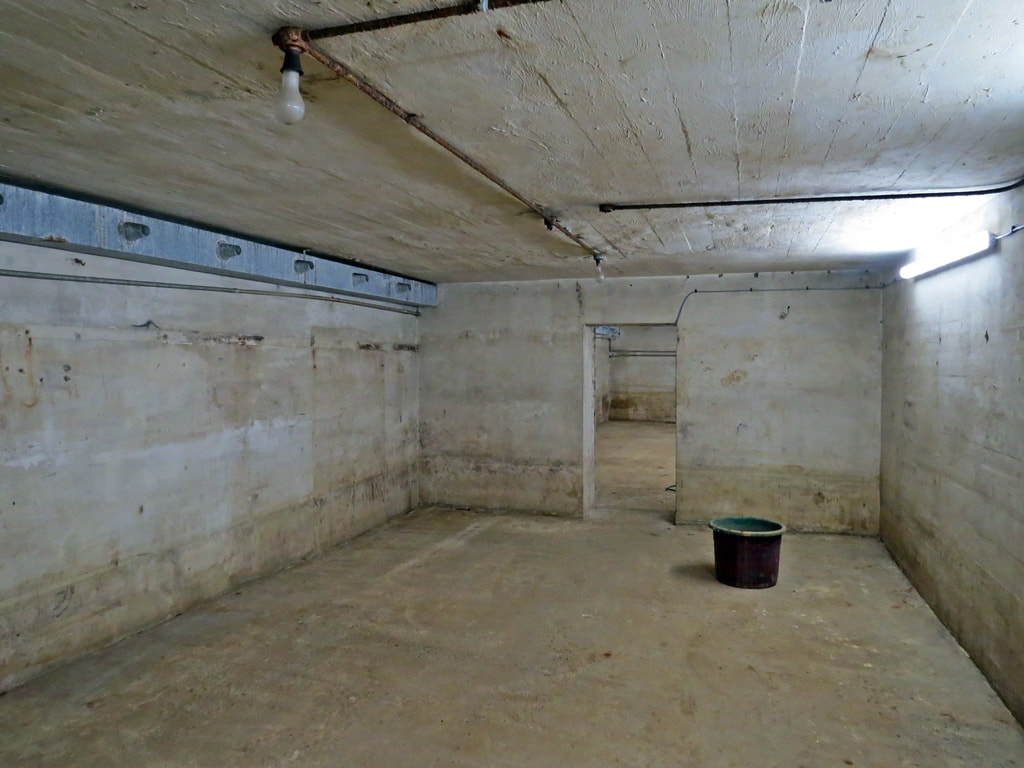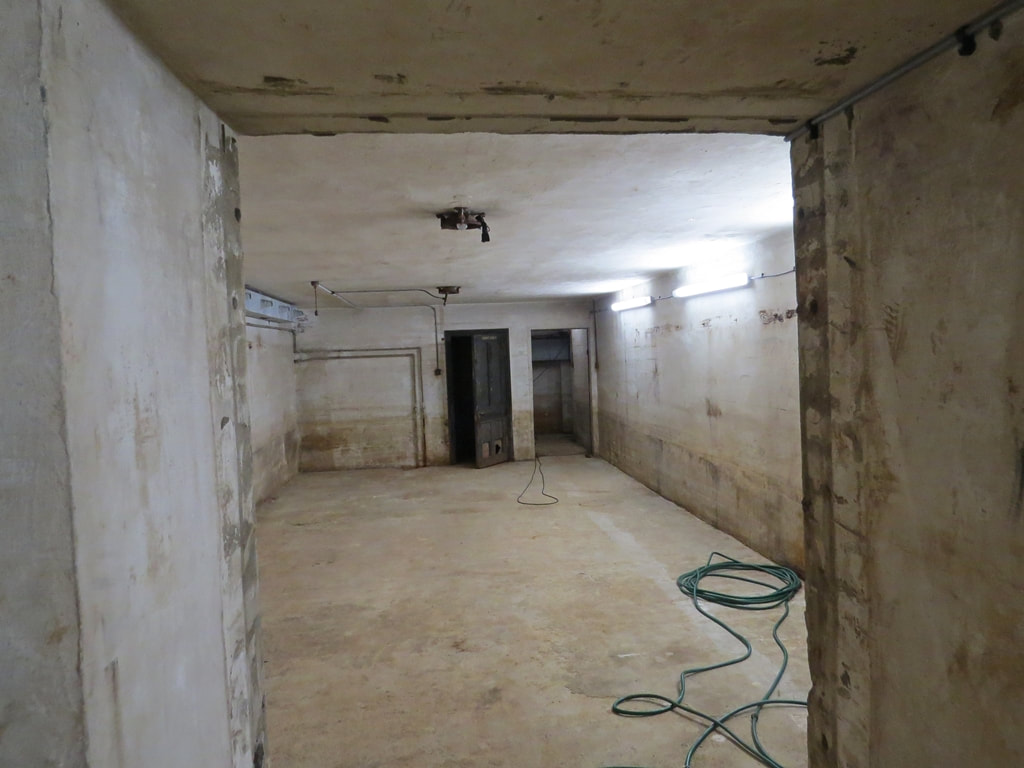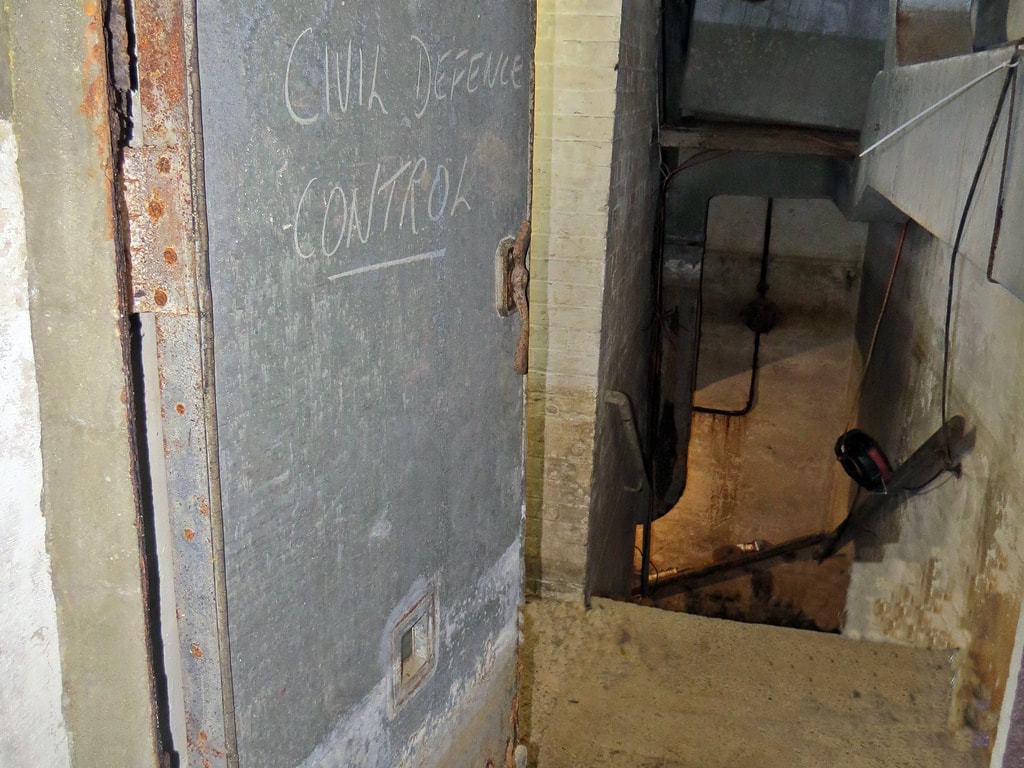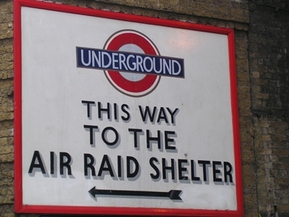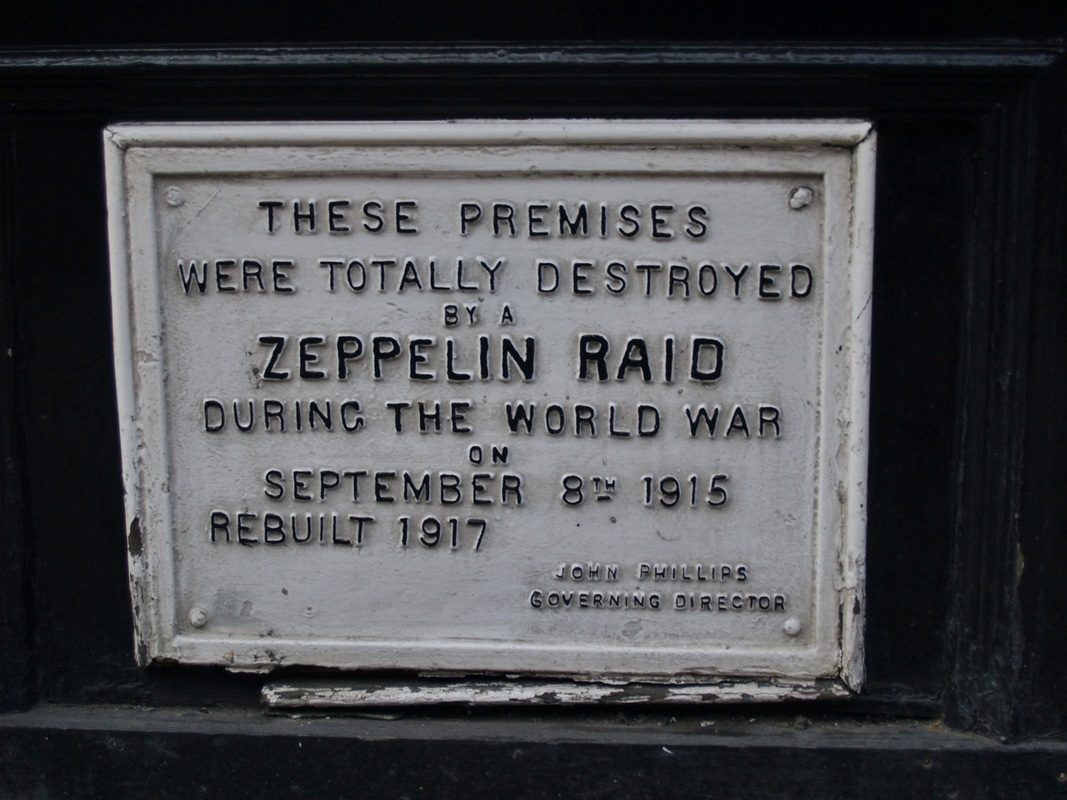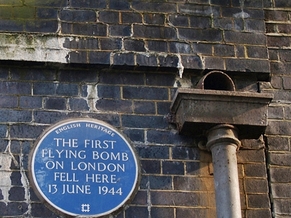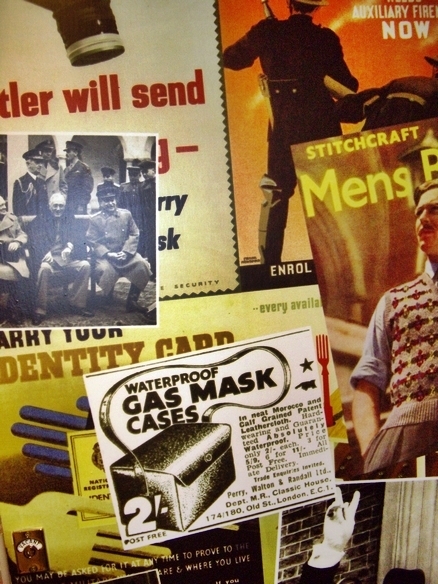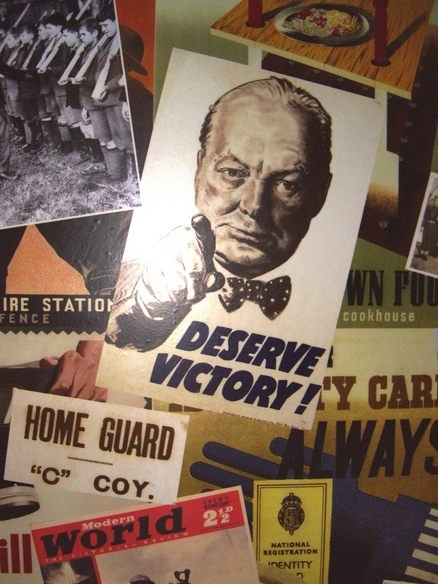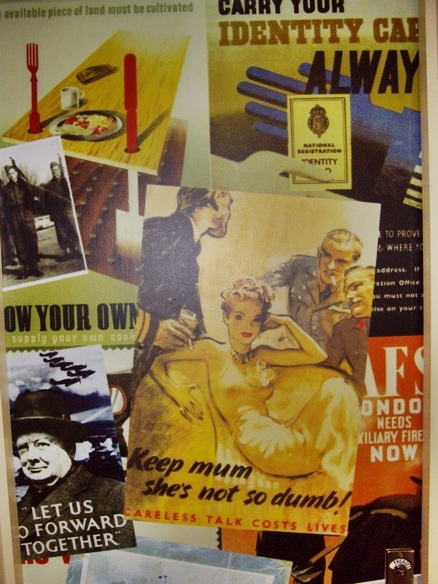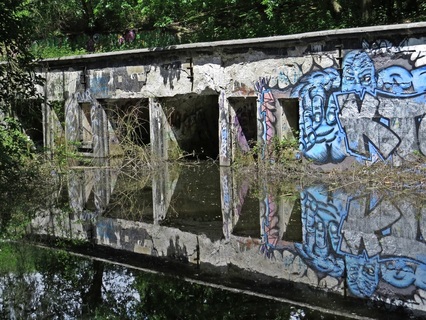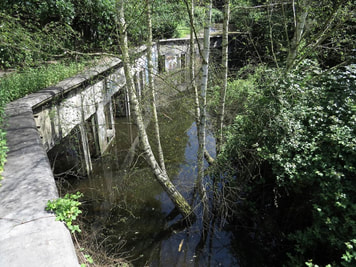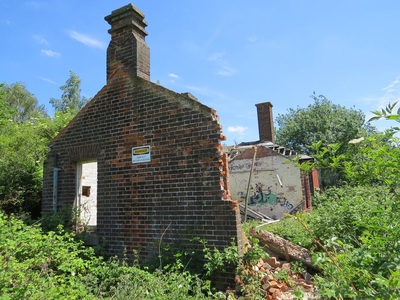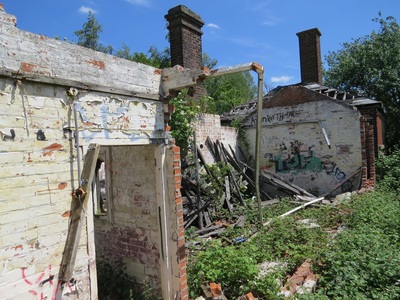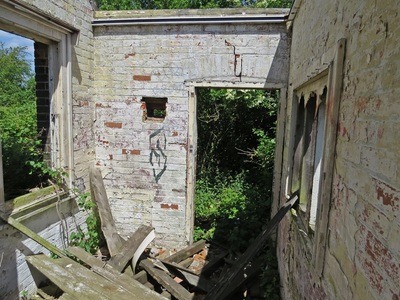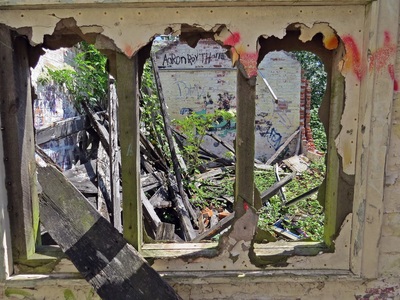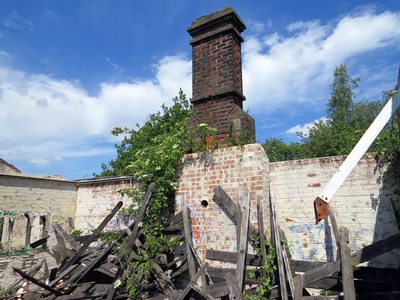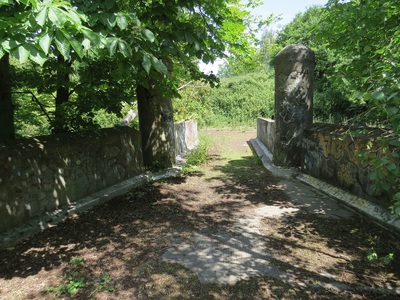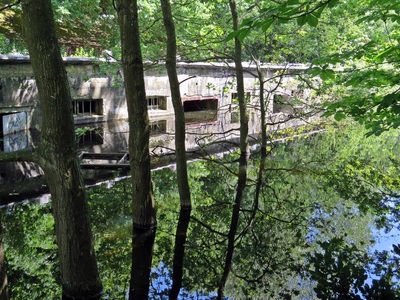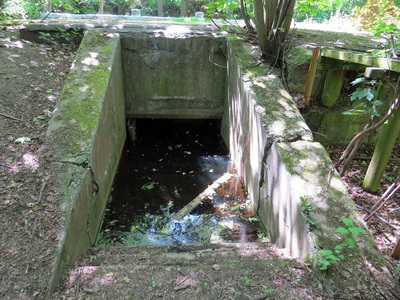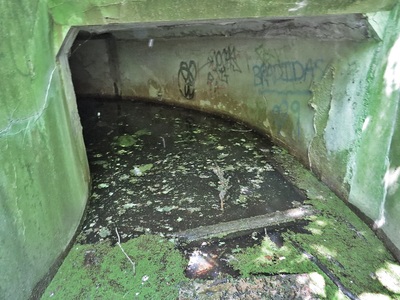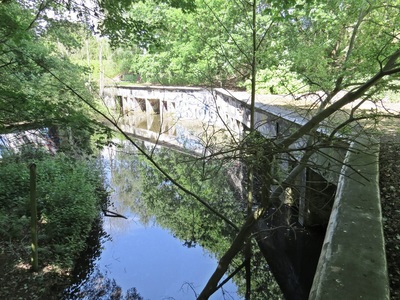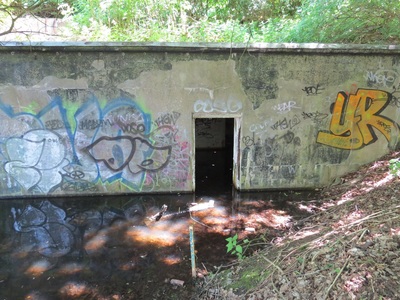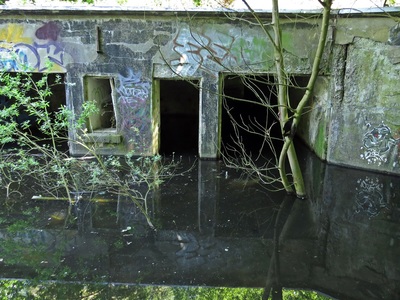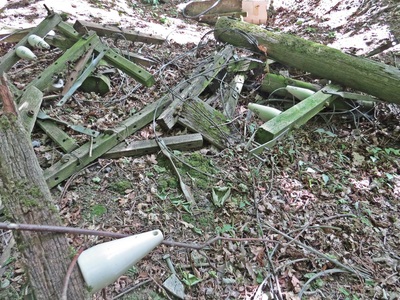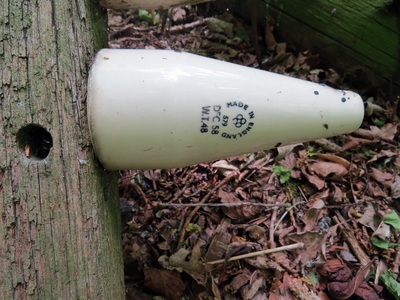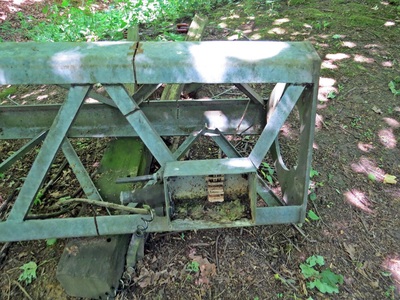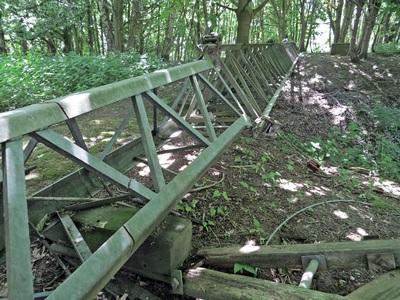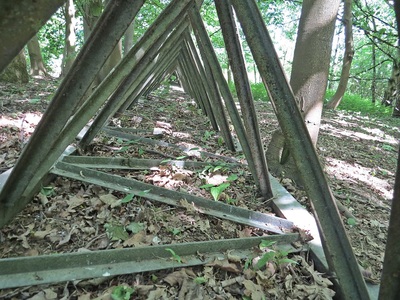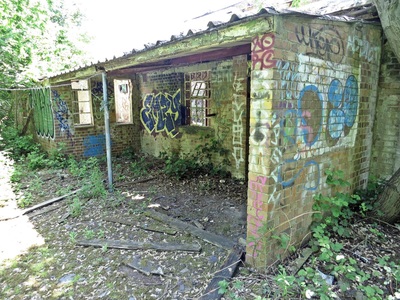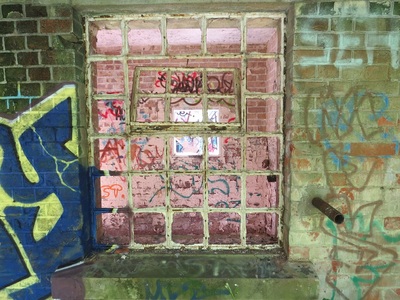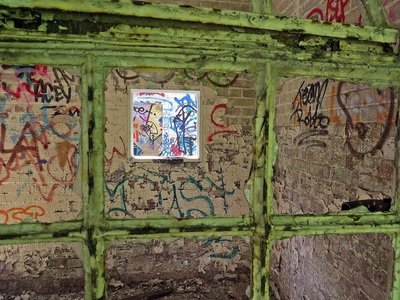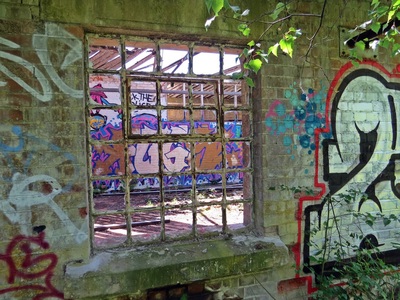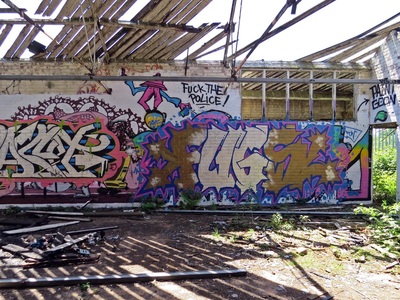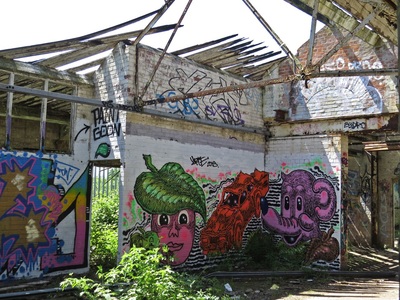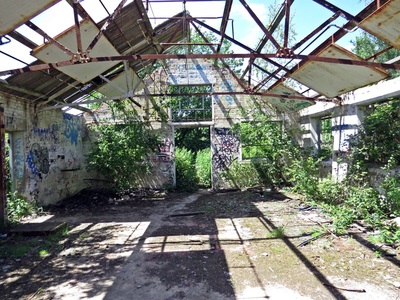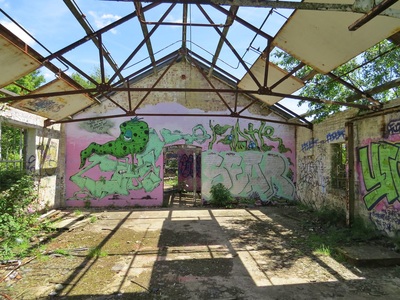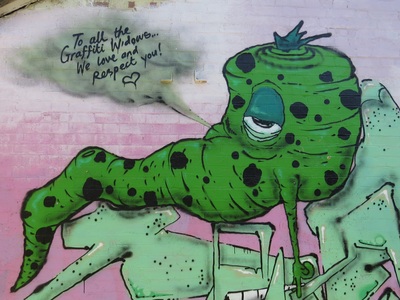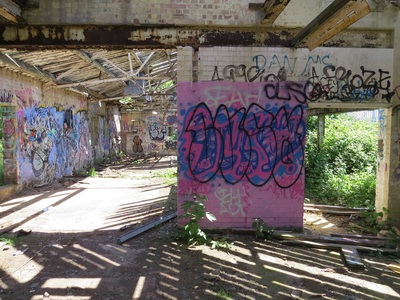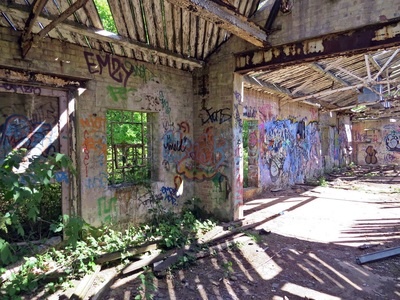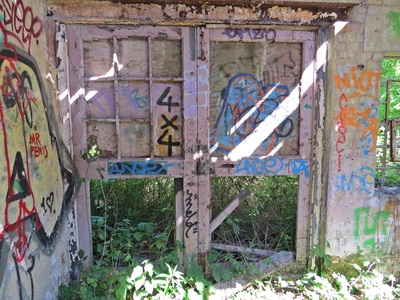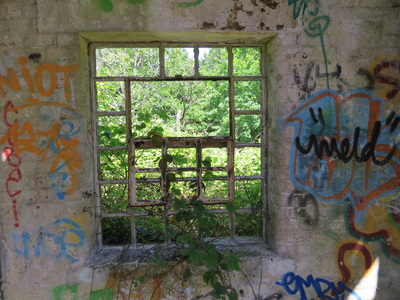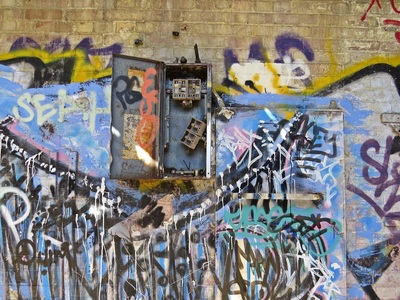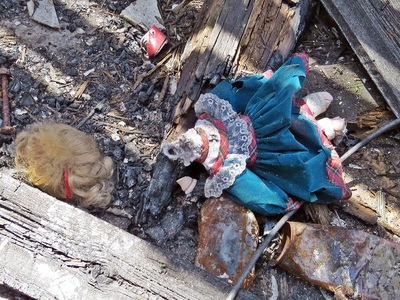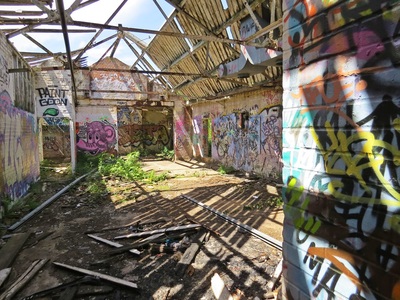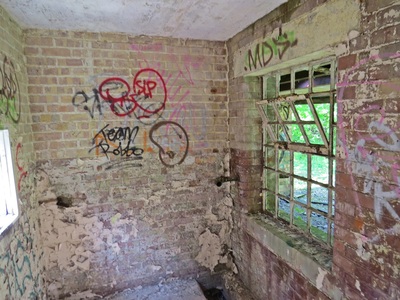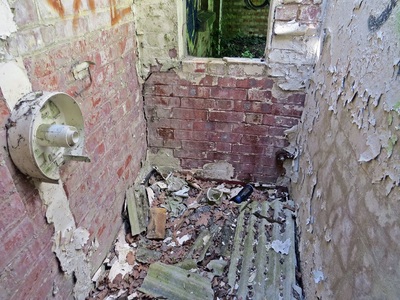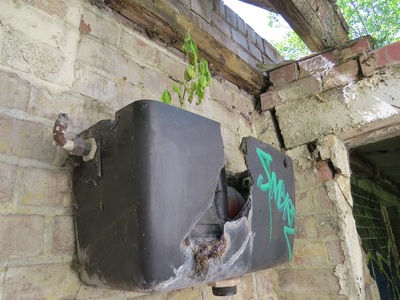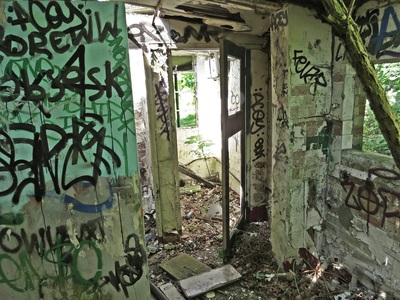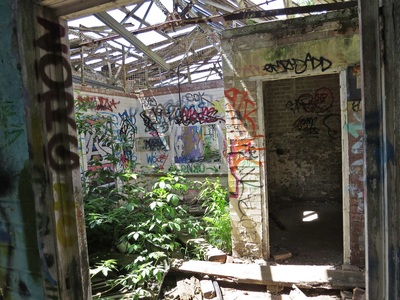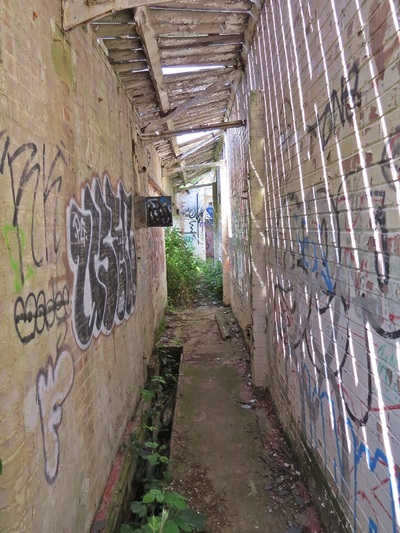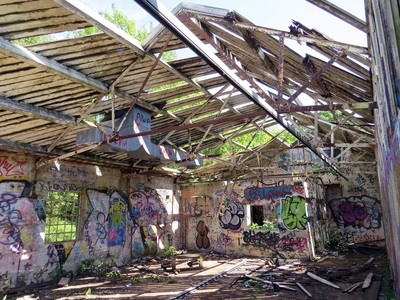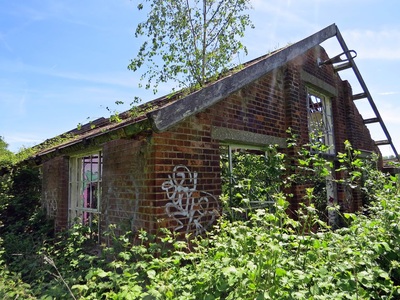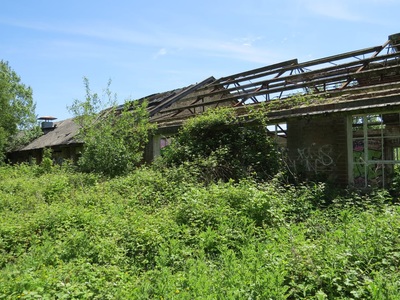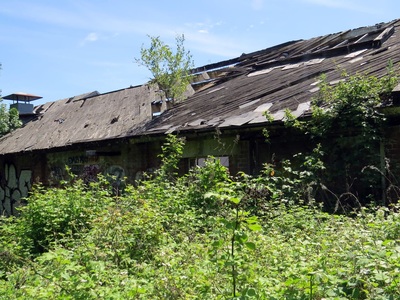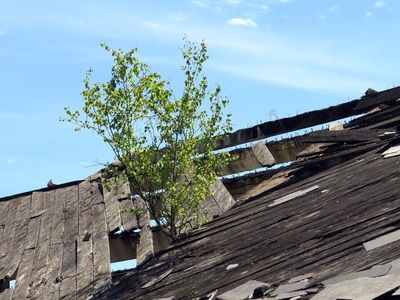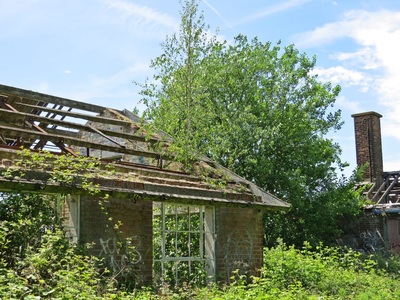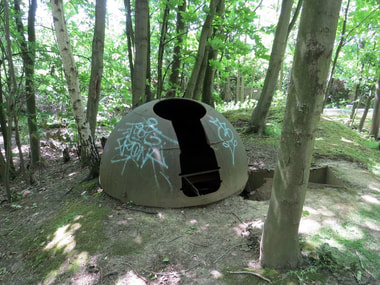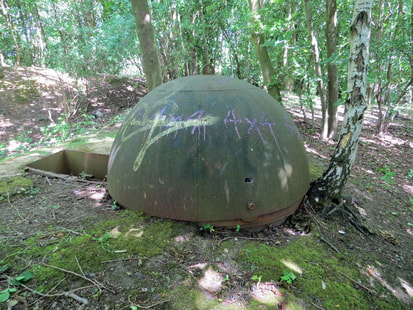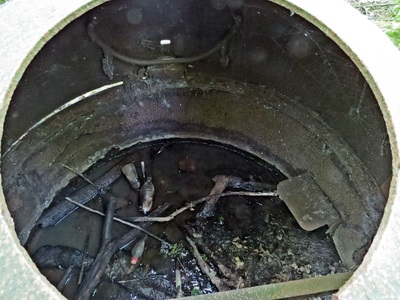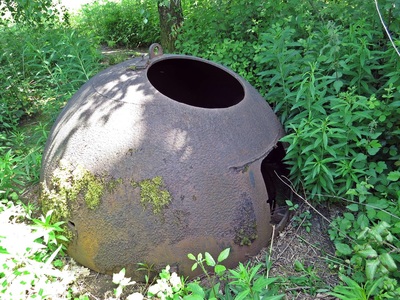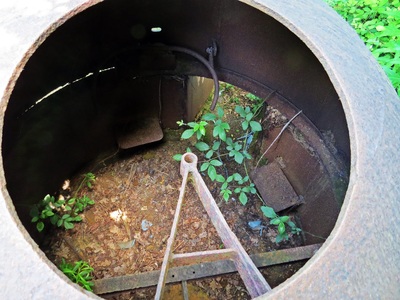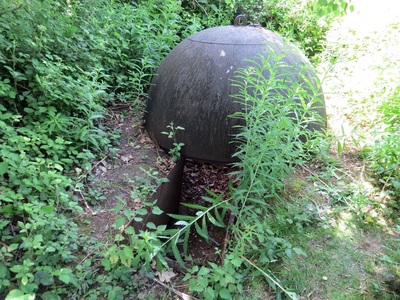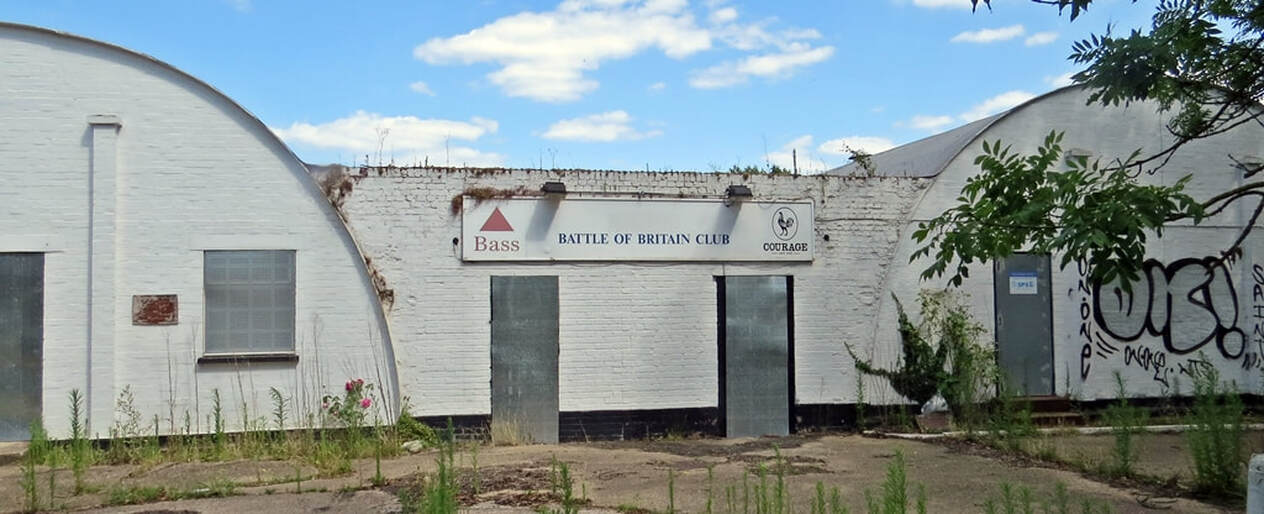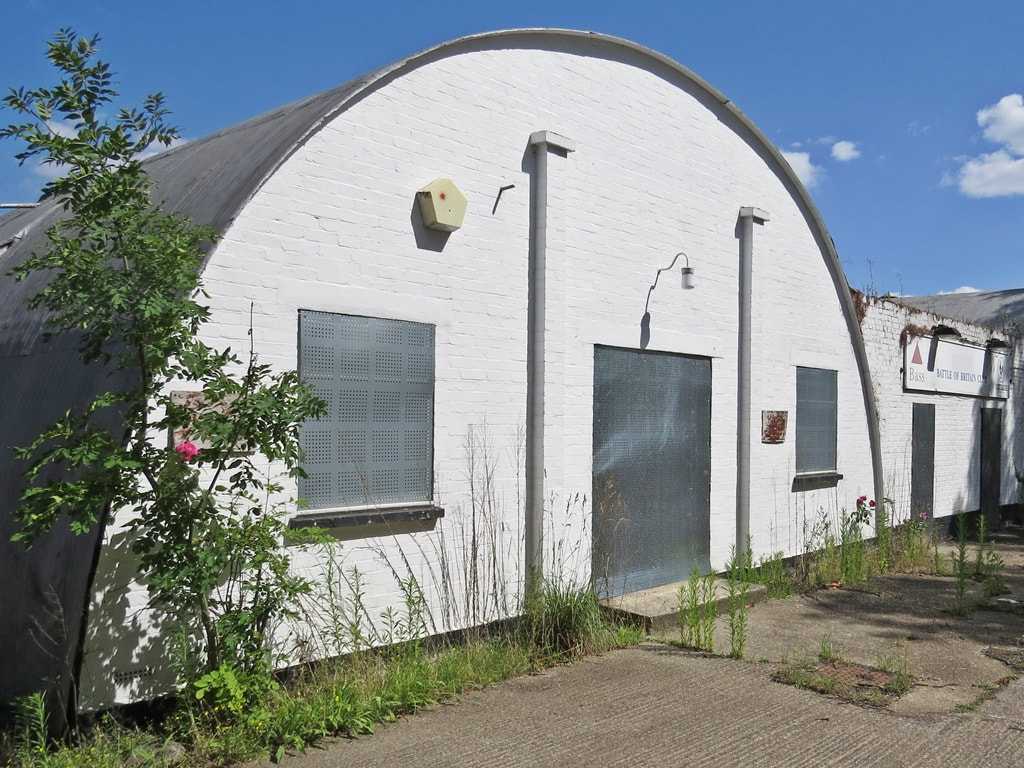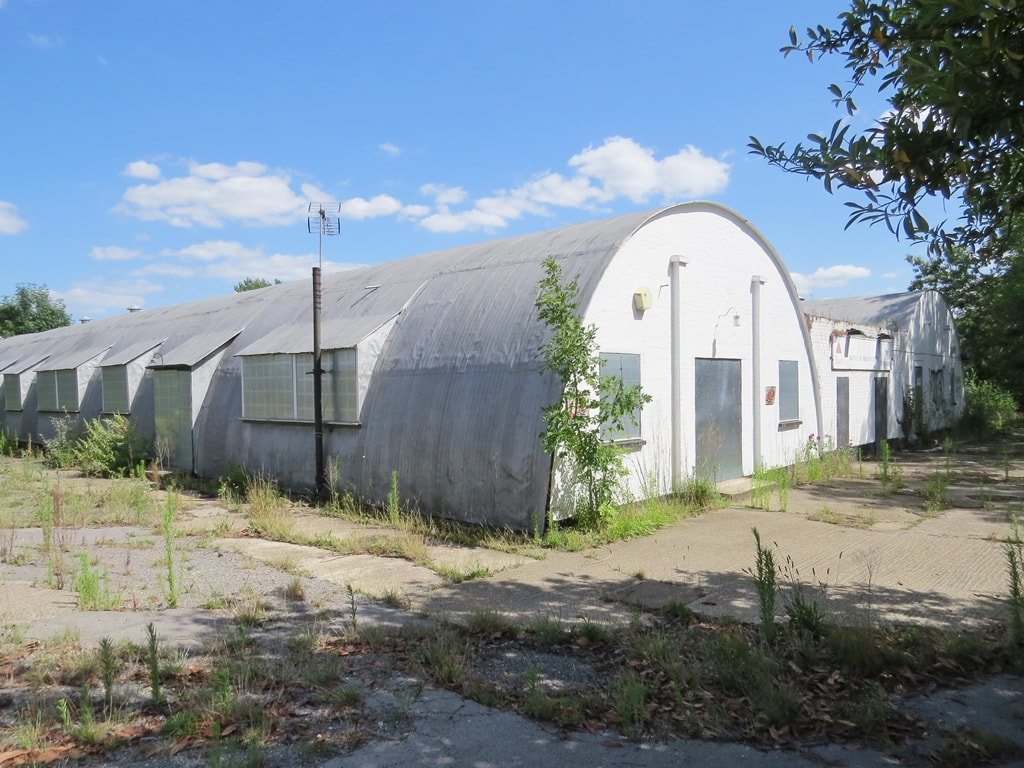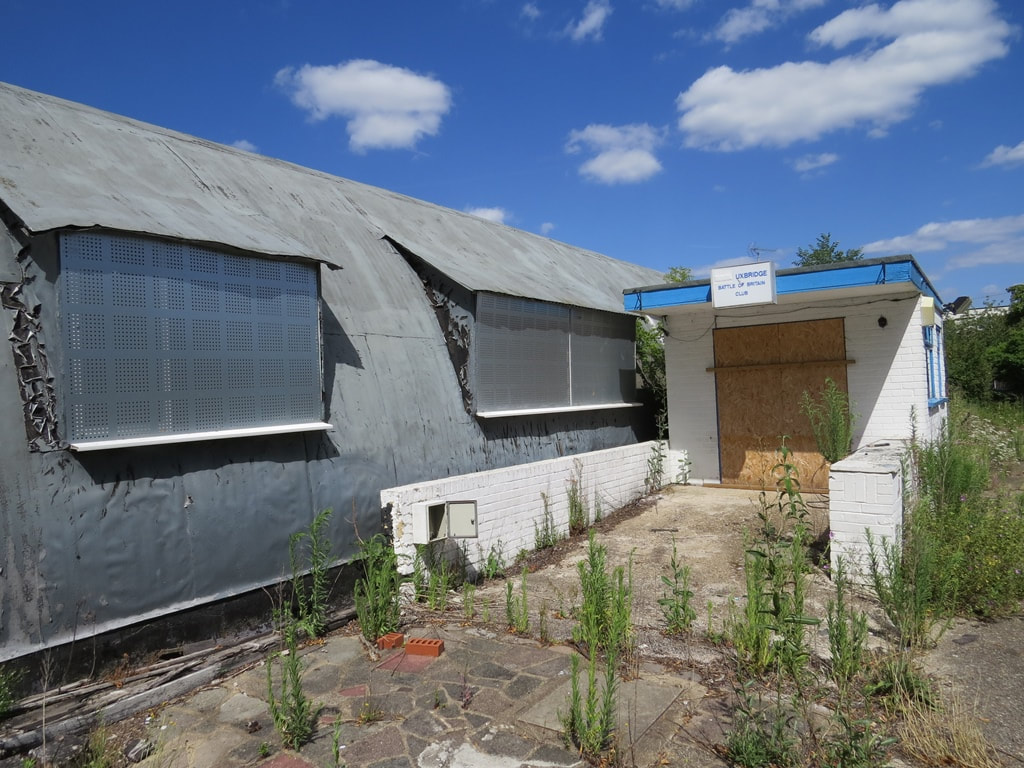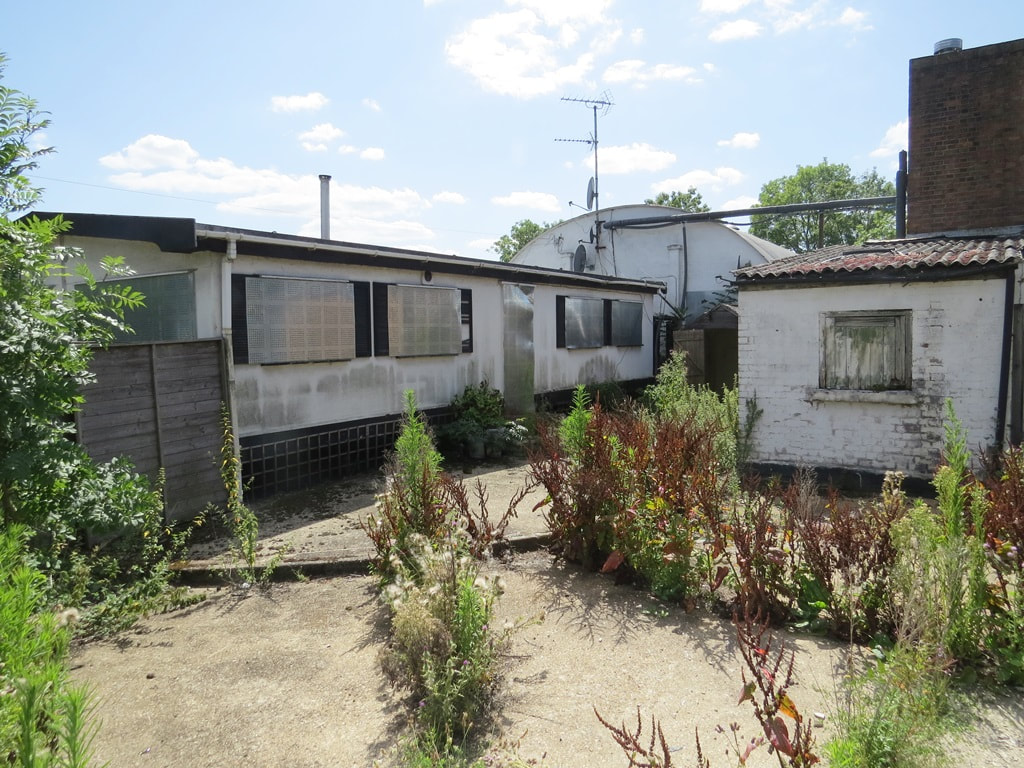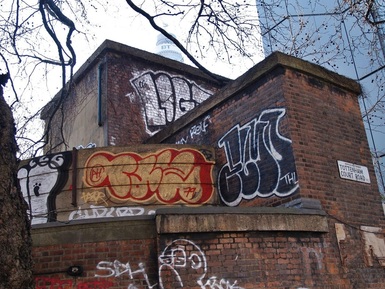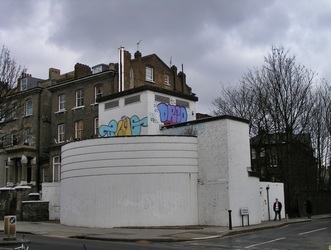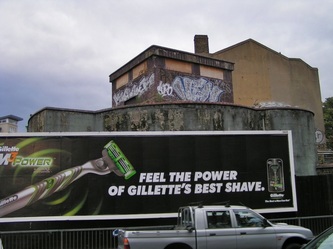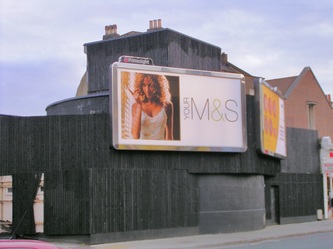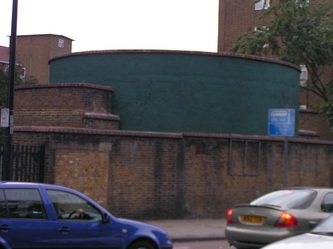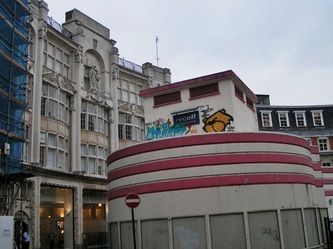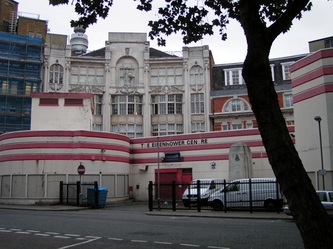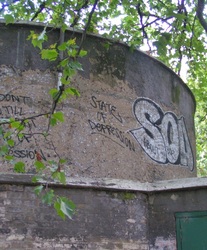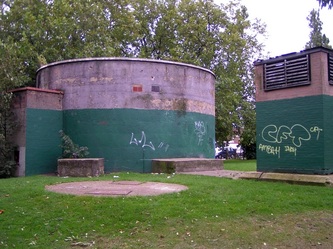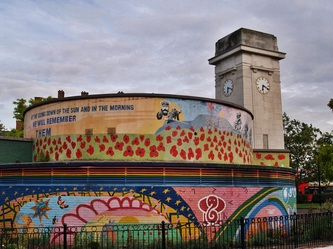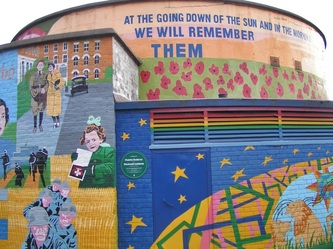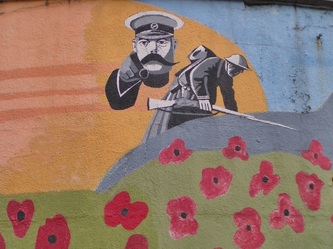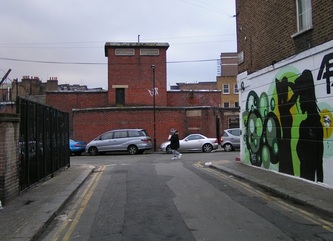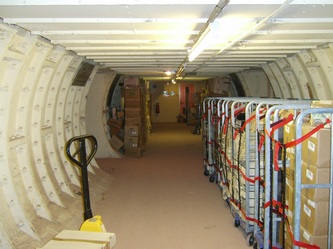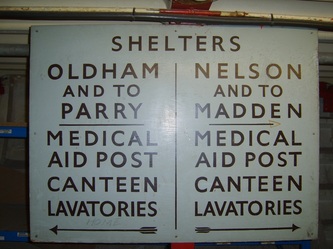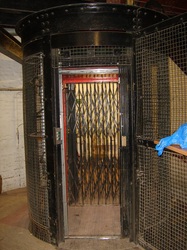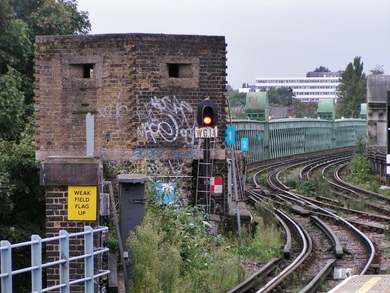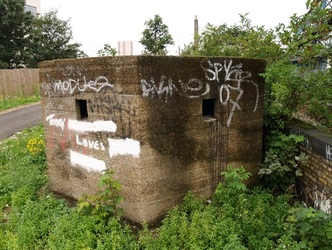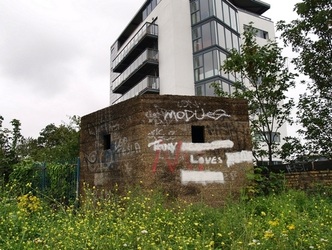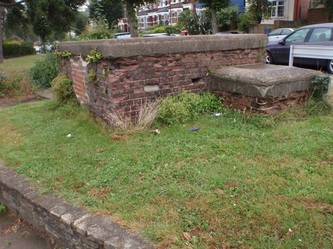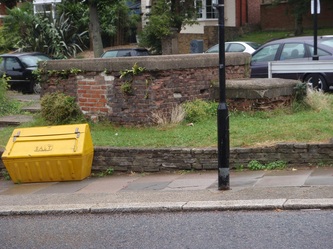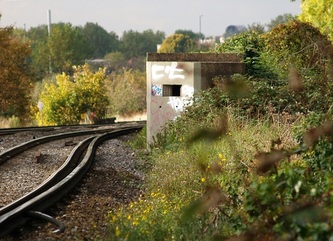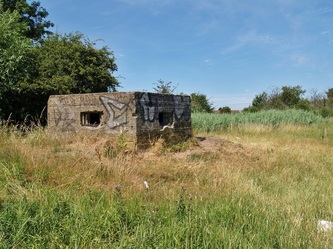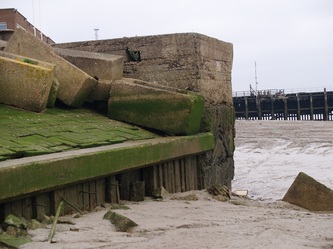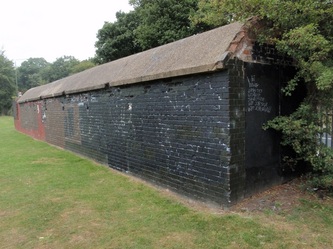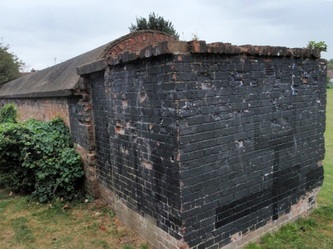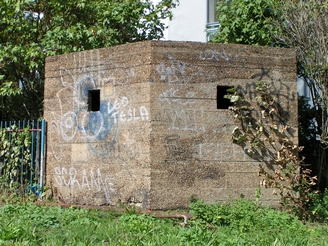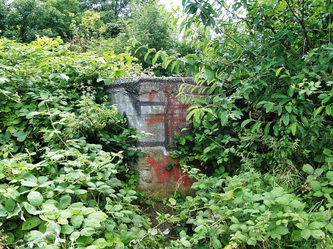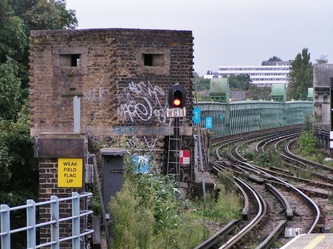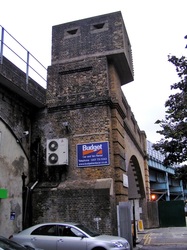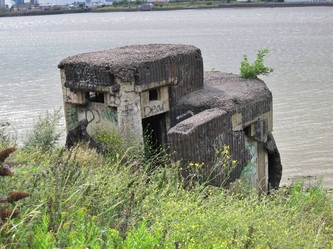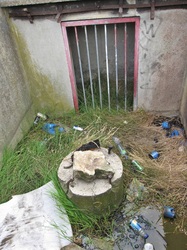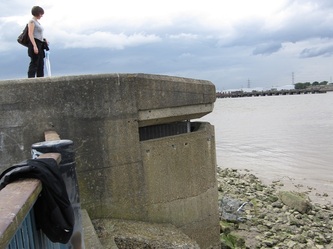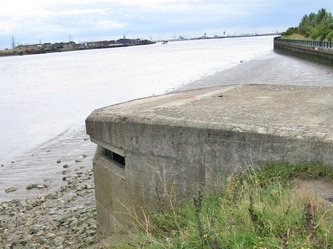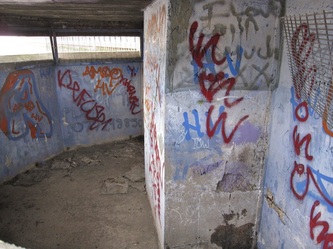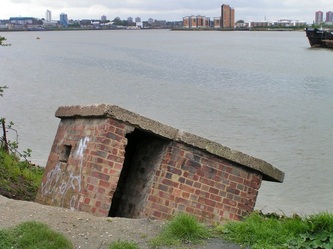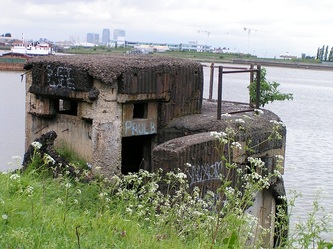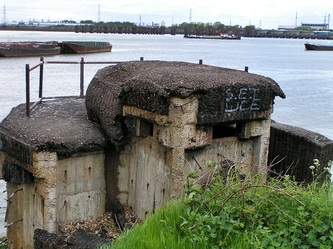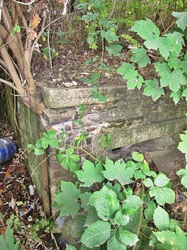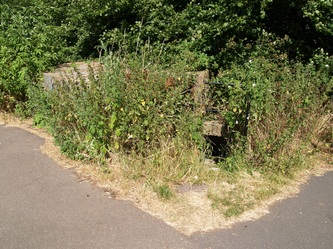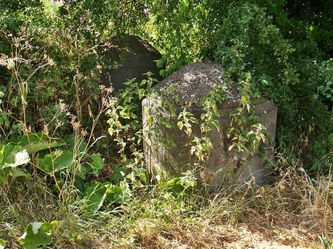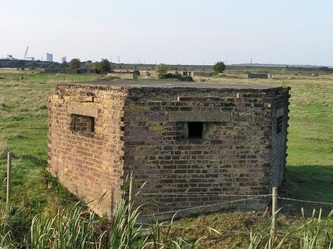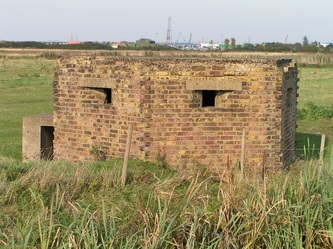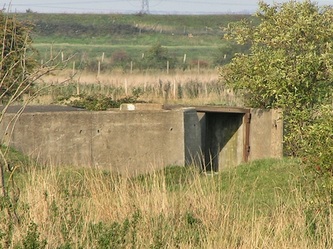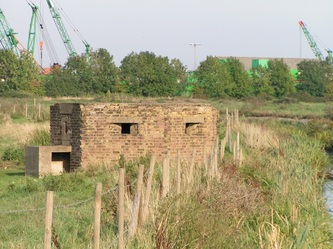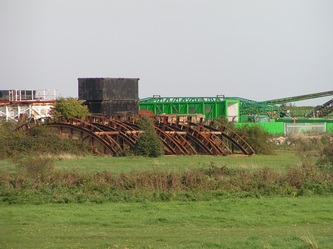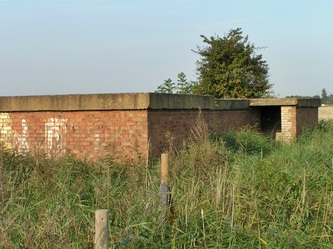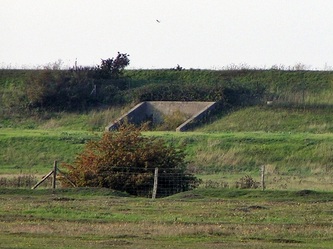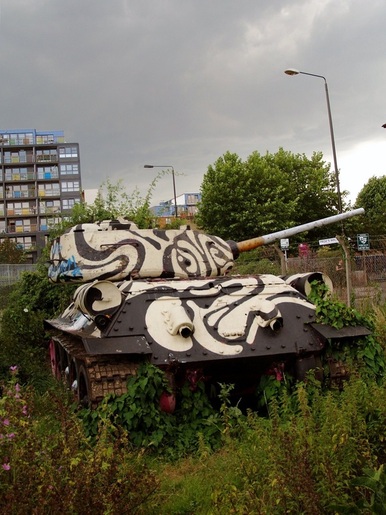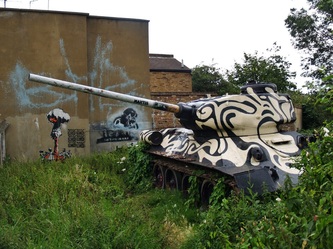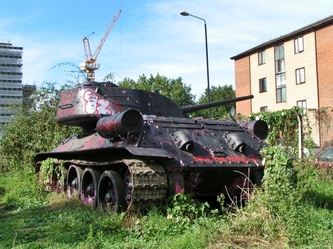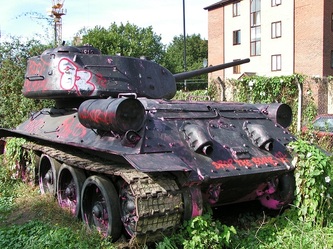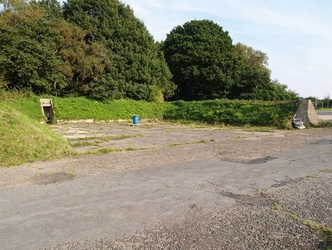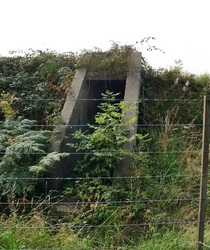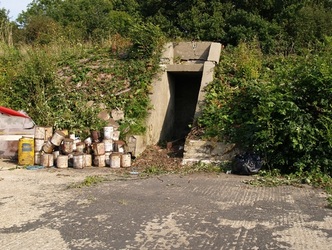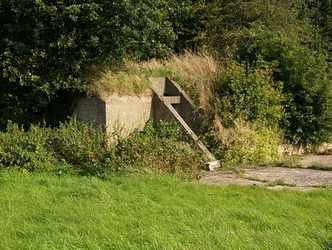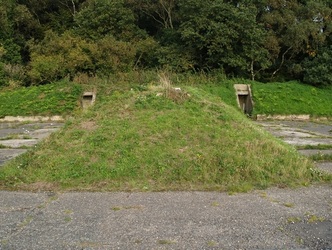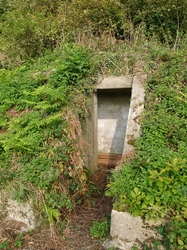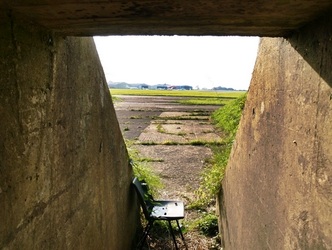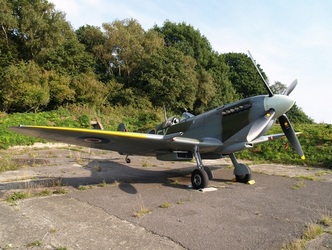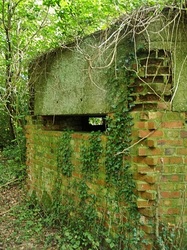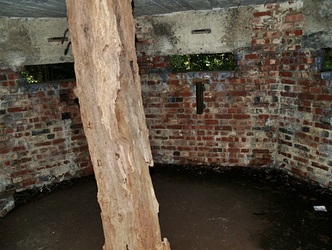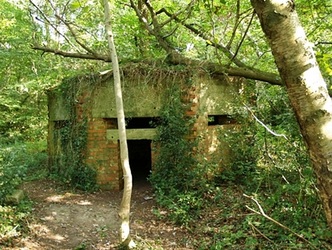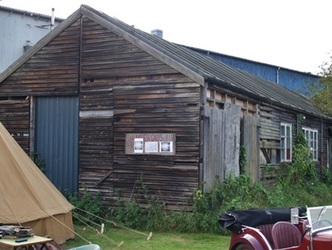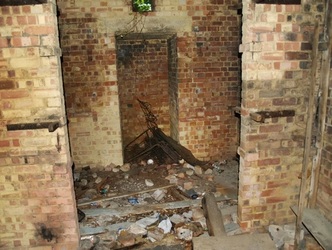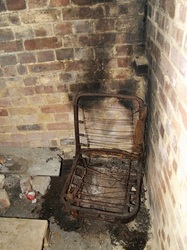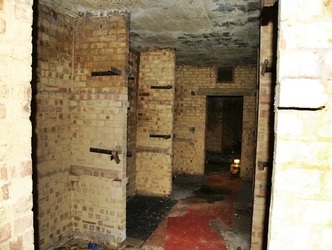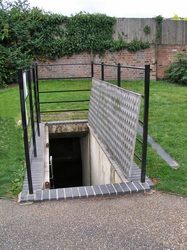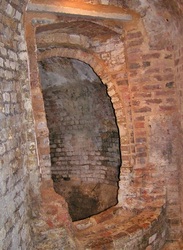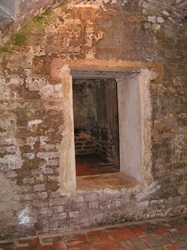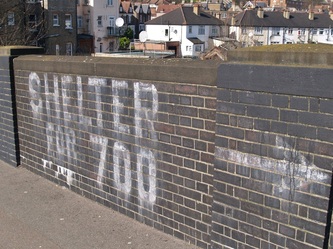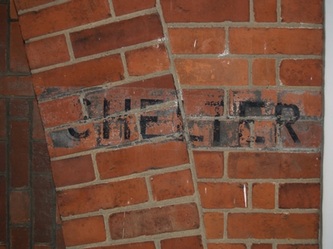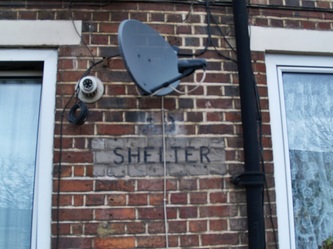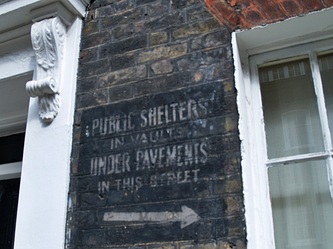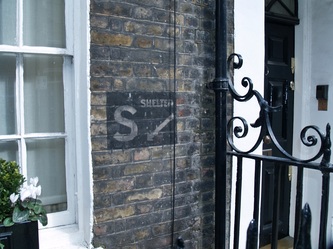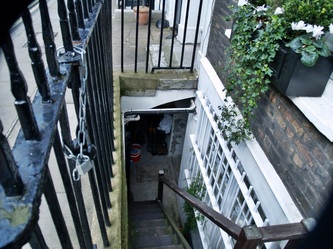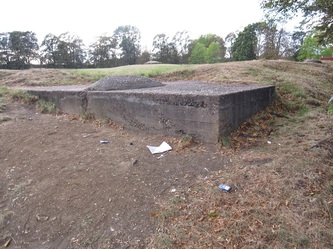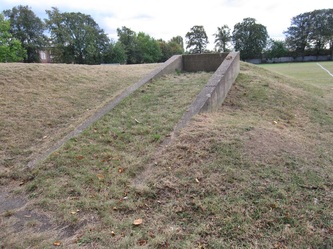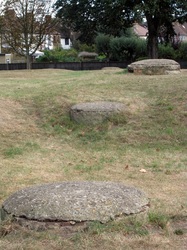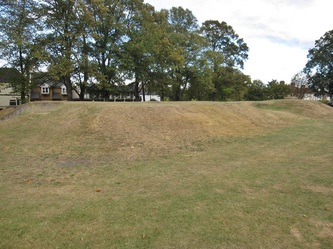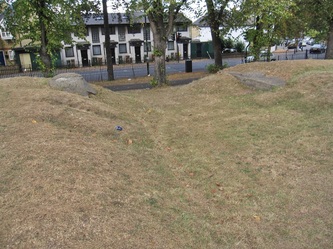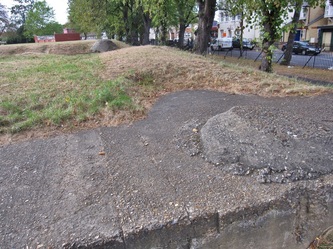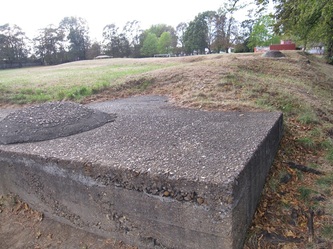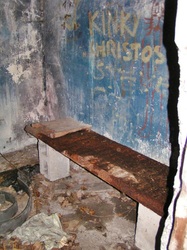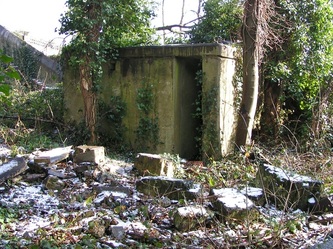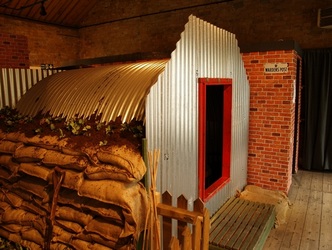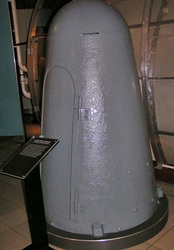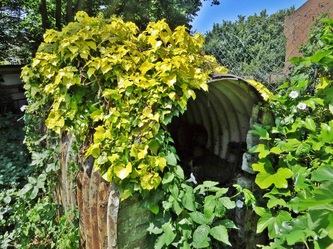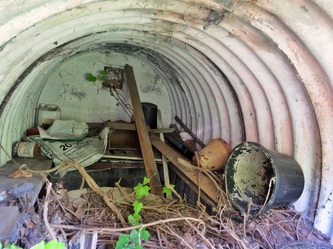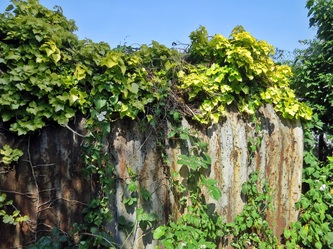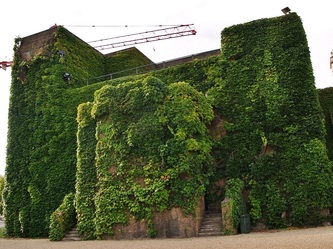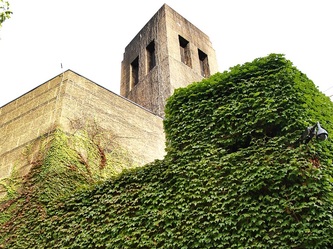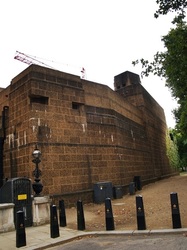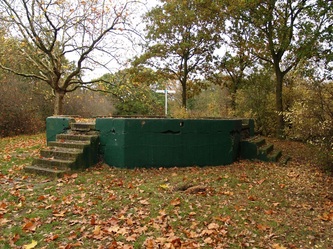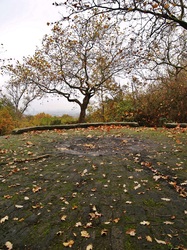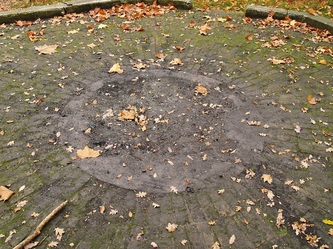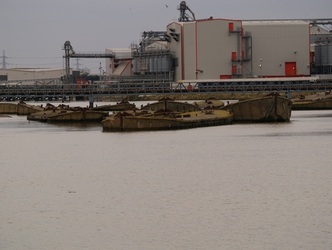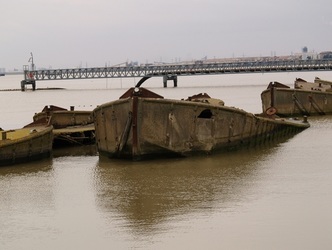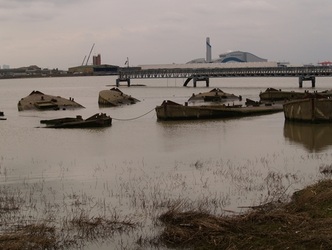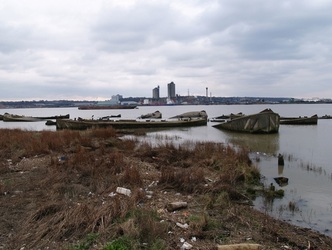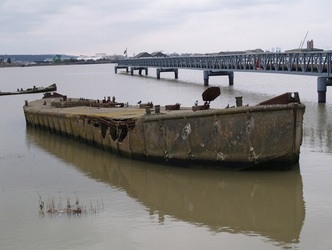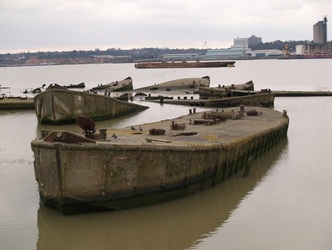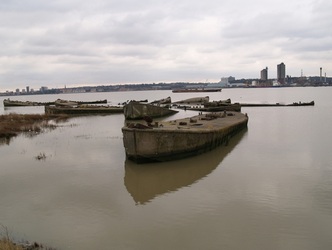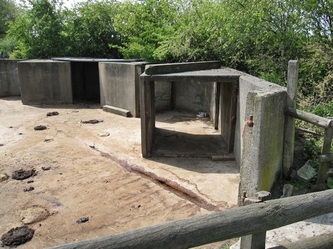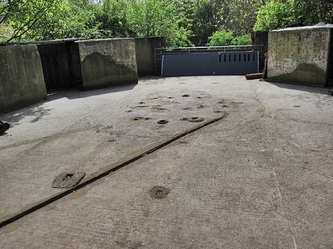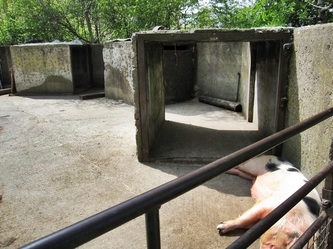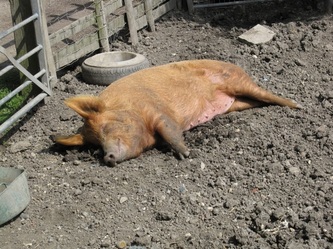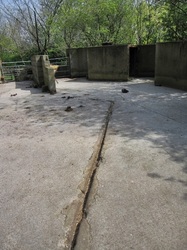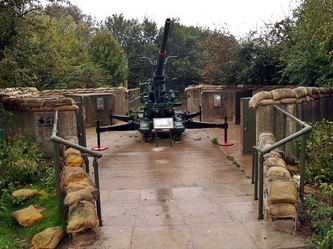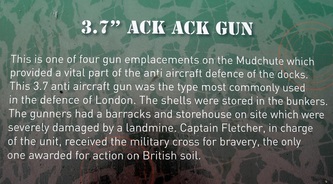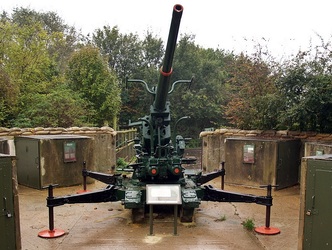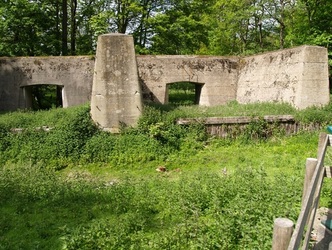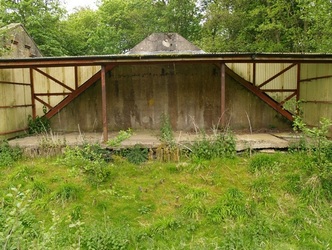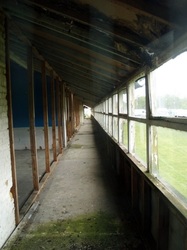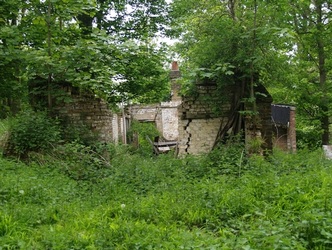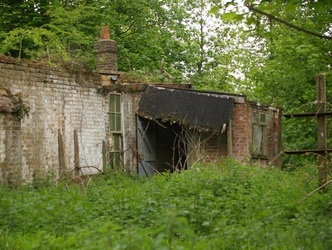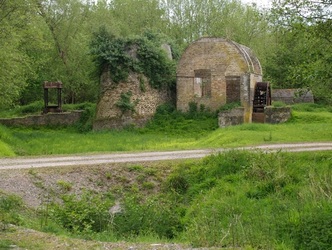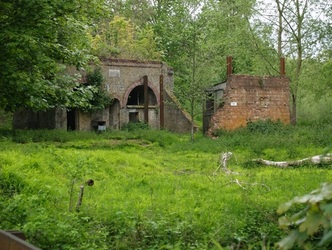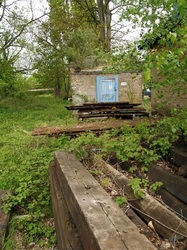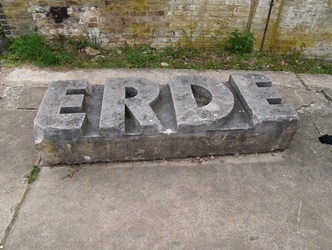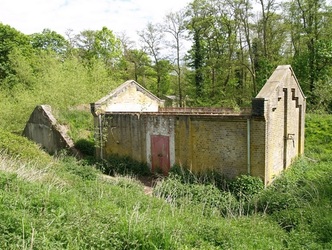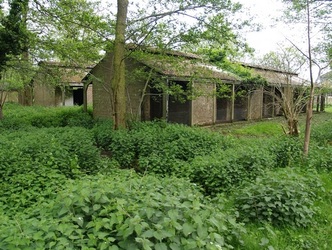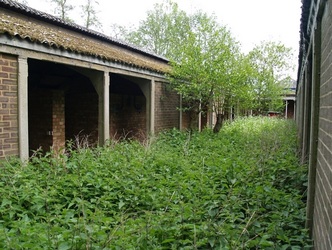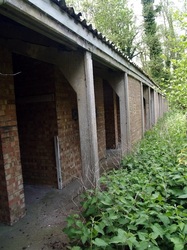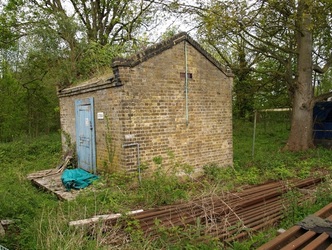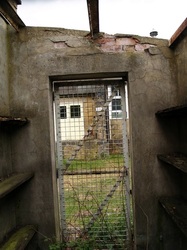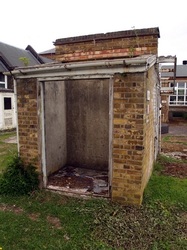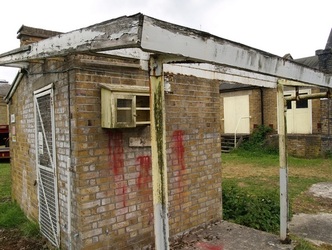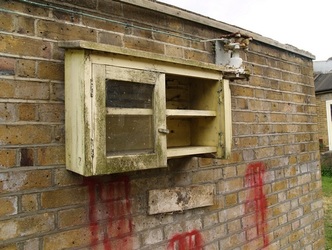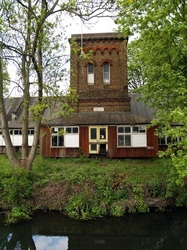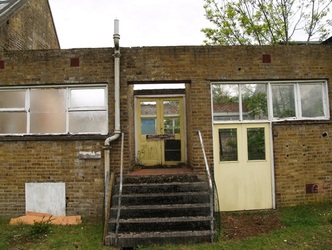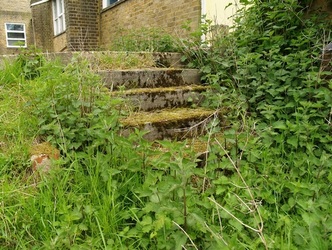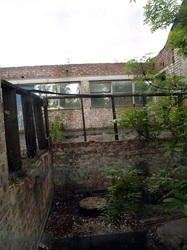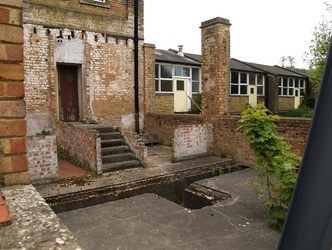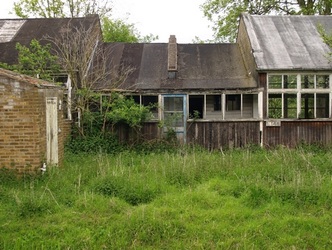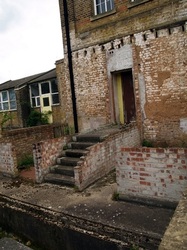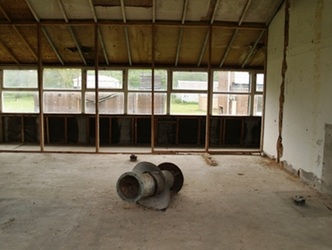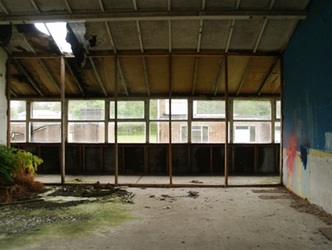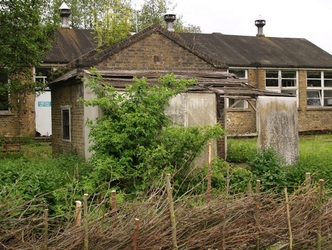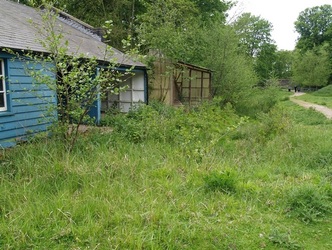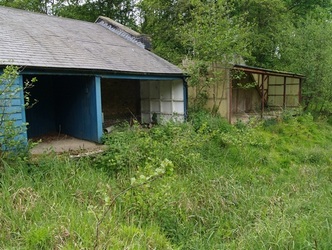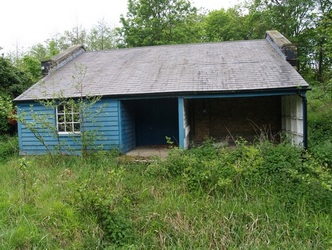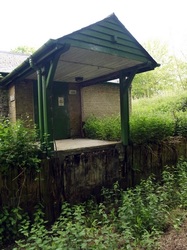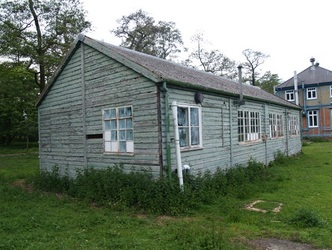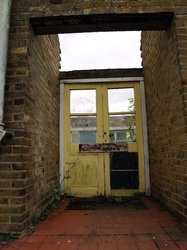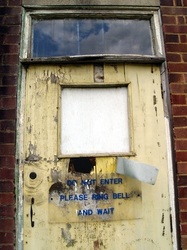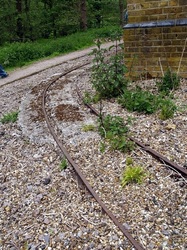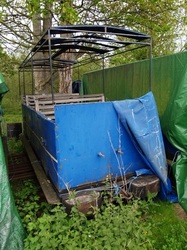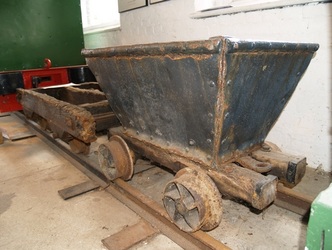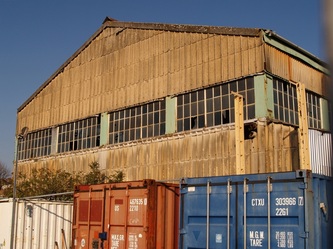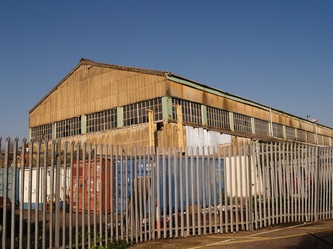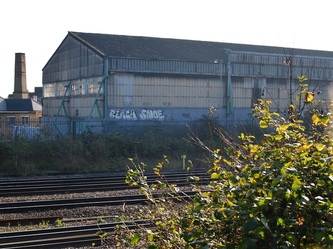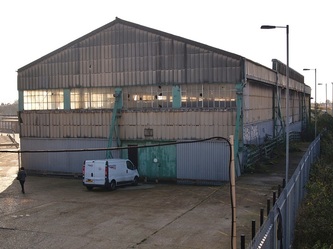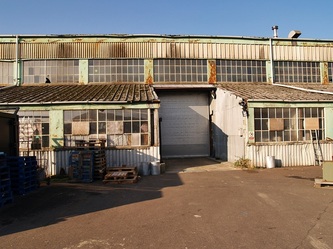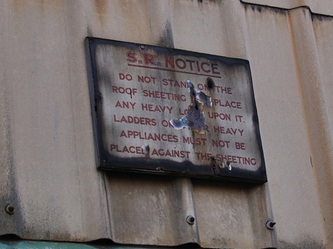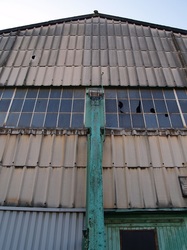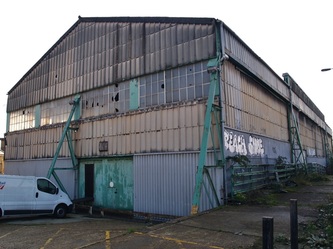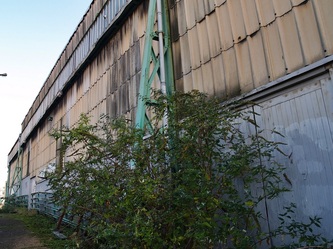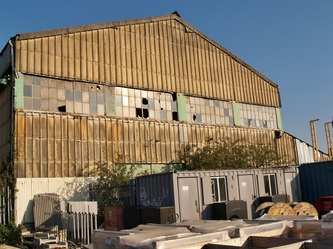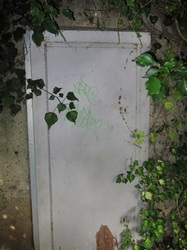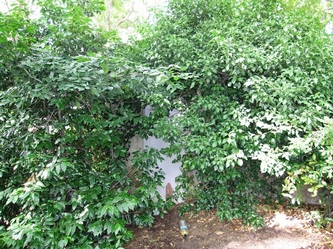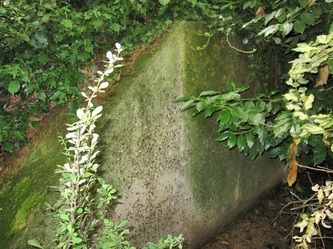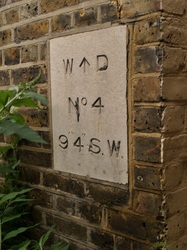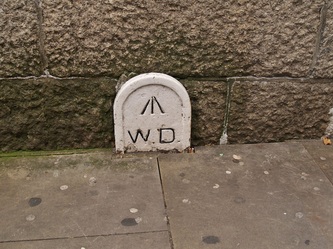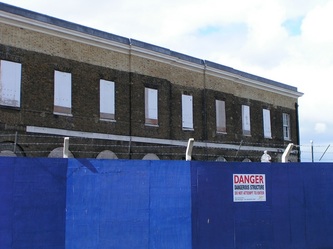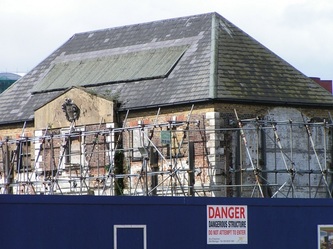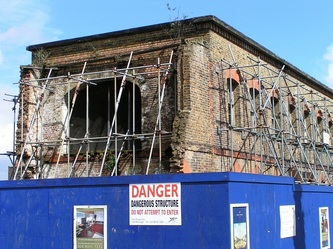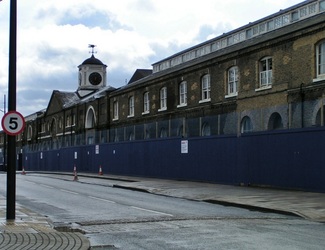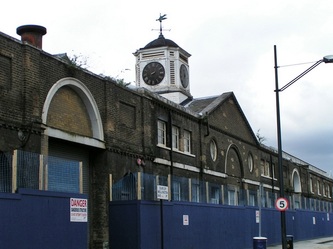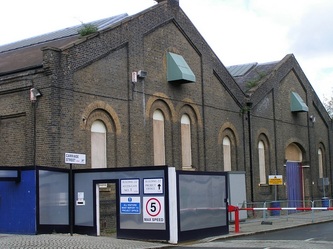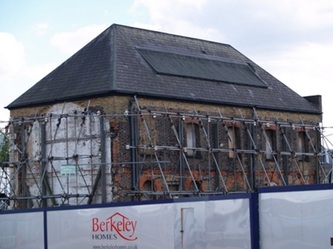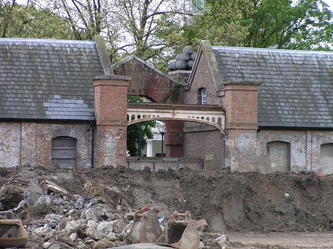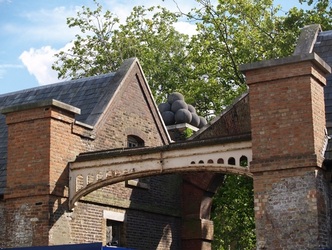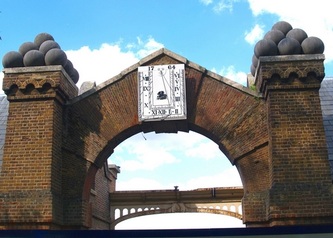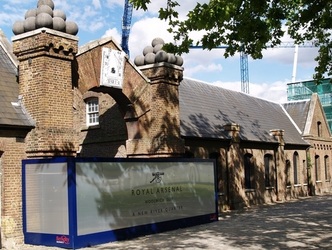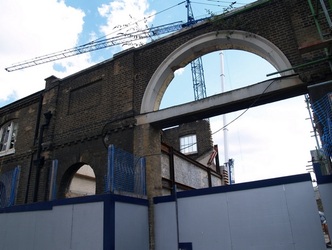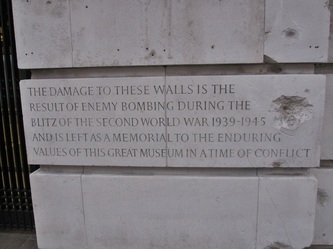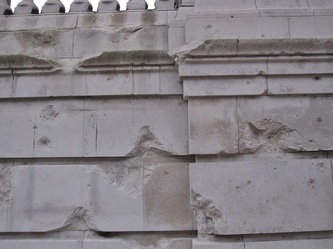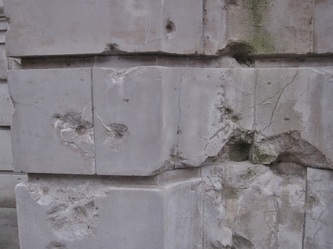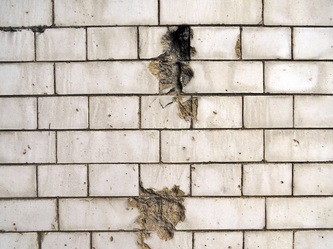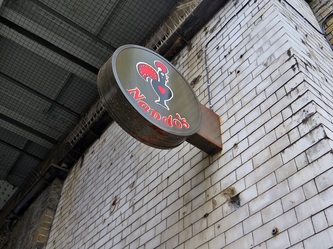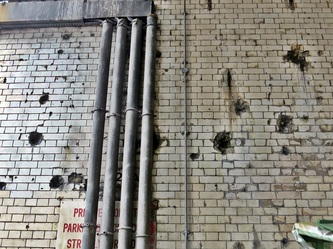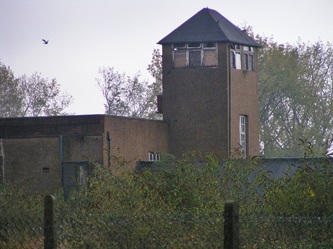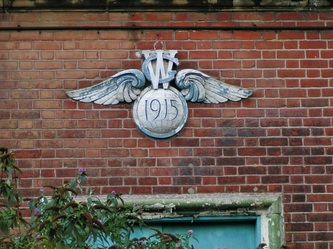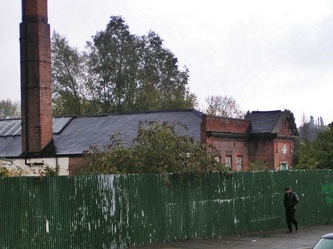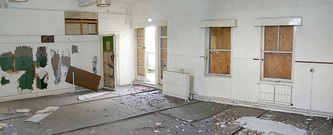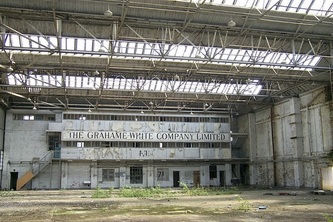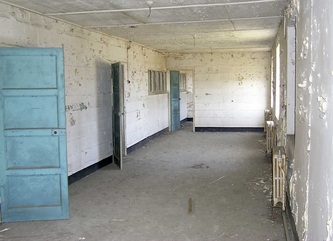DERELICT LONDON WARTIME DEFENCES, BUNKERS,SHELTERS & relics
Slade Green, DA8 - World War II Heavy Anti-aircraft Battery
Situated on Crayford Marshes in the London Borough of Bexley this Heavy Anti-aircraft (HAA) battery constructed in the late 1930s includes four gun emplacements, a fire command post, two pillboxes, air raid shelter and Bofors gun emplacement.
This was one of a number of HAAs designed to create a protective ring around London. All were allocated identifying codes as part of the London Inner Artillery Zone with the site code here being ZS1. It was the most easterly of the London IAZ HAA's thus playing an important role in the early stages of any attack on London from the east.
The site is Grade II Listed.
This was one of a number of HAAs designed to create a protective ring around London. All were allocated identifying codes as part of the London Inner Artillery Zone with the site code here being ZS1. It was the most easterly of the London IAZ HAA's thus playing an important role in the early stages of any attack on London from the east.
The site is Grade II Listed.
The Old Finsbury Town Hall, EC1 - Air-Raid Shelter/Nuclear Bunker/Control Centre
The building opened in 1895 and during the Second World War a two-storey bunker beneath Garnault Place, with access from the basement of the town hall. This was completed in 1940 and comprised, on the upper floor, two large air-raid shelters for male and female staff at the town hall, and on the lower a Control Centre for the borough, containing a control room, signals room and messengers' room. The external concrete walls are 6 ft 6 in thick.
Disused after the war, the bunker was returned to use from 1952 to 1965 as a local control centre in case of nuclear attack. Later it was used for civil-defence training and thereafter as storage. These days the bunker is disused and is often subject to flooding due to being in the close proximity of natural underground springs which feed the nearby Sadlers Well and the now subterranean River Fleet.
You may already be familiar with the wartime photograph below which is often floating around online forums. This is a German Messerschmitt Me110 fighter-bomber outside Finsbury Town Hall on Garnault Place. It was brought down during an attack on RAF Hawkinge, Kent in 1940 and put on display in London before being shipped to he US in 1941. In the old photo you see a shelter sign in the Traffic Island. Whilst the main entrance was under the Town Hall this was presumably an entrance accessed by step irons (seen in bunker pics further below) directly from the street.
Disused after the war, the bunker was returned to use from 1952 to 1965 as a local control centre in case of nuclear attack. Later it was used for civil-defence training and thereafter as storage. These days the bunker is disused and is often subject to flooding due to being in the close proximity of natural underground springs which feed the nearby Sadlers Well and the now subterranean River Fleet.
You may already be familiar with the wartime photograph below which is often floating around online forums. This is a German Messerschmitt Me110 fighter-bomber outside Finsbury Town Hall on Garnault Place. It was brought down during an attack on RAF Hawkinge, Kent in 1940 and put on display in London before being shipped to he US in 1941. In the old photo you see a shelter sign in the Traffic Island. Whilst the main entrance was under the Town Hall this was presumably an entrance accessed by step irons (seen in bunker pics further below) directly from the street.
The town hall ceased to be the local seat of government when the London Borough of Islington was formed in 1965. It subsequently served as a register office and also as a social services centre. Islington Council closed the building in 2003 and has since re-opened as the home of the performing arts college, Urdang Academy. Please note that this is a privately owned college and there is no public access to the building.
Here are some photographs of the shelter taken in Autumn 2020. Note the step irons in the wall (up to a locked manhole cover), gas tight doors and toilet cubicles stripped of any original fittings apart from a toilet roll holder!
Here are some photographs of the shelter taken in Autumn 2020. Note the step irons in the wall (up to a locked manhole cover), gas tight doors and toilet cubicles stripped of any original fittings apart from a toilet roll holder!
North Weald Mobilisation Centre (aka North Weald Redoubt)
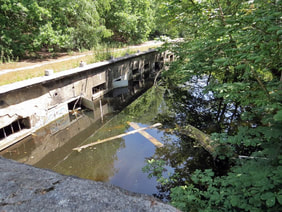
North Weald Bassett (aka North Weald) is a small village a couple of miles away from Epping best known for it's WW2 airfield and for being the birthplace of David Gahan of Depeche Mode.
A redoubt (the word means "a place of retreat") is traditionally a fort system meant to protect soldiers outside the main defensive line. Mobilisation Centres were built between 1889 and 1903 as part of the London Defence Scheme. Their main function was as a store for guns & ammunition required for the batteries and infantry allocated for the defence of the neighbourhood in the event of a foreign invasion.
The North Weald Redoubt was the first of 13 mobilisation centres to be constructed and the only fortified centre north of the Thames. When the London Defence Scheme was abandoned in 1906, the Redoubt was retained as an ammunition store. In World War I the line of the London Defence Positions was reactivated as the inner stop line to resist a German invasion.
During World War II, because of the importance of the radio station, it was classed as a Vulnerable Point. Special VP Troops were stationed there to protect it and two Allen Williams Turrets (see further down page) were installed, one on each flank.
Marconi brought the site and the surrounding land in 1920 and set up the Ongar Radio Station and eventually passed on to British Telecom in 1995 who sold the land property developers and the site remains derelict and now partially waterlogged.
A redoubt (the word means "a place of retreat") is traditionally a fort system meant to protect soldiers outside the main defensive line. Mobilisation Centres were built between 1889 and 1903 as part of the London Defence Scheme. Their main function was as a store for guns & ammunition required for the batteries and infantry allocated for the defence of the neighbourhood in the event of a foreign invasion.
The North Weald Redoubt was the first of 13 mobilisation centres to be constructed and the only fortified centre north of the Thames. When the London Defence Scheme was abandoned in 1906, the Redoubt was retained as an ammunition store. In World War I the line of the London Defence Positions was reactivated as the inner stop line to resist a German invasion.
During World War II, because of the importance of the radio station, it was classed as a Vulnerable Point. Special VP Troops were stationed there to protect it and two Allen Williams Turrets (see further down page) were installed, one on each flank.
Marconi brought the site and the surrounding land in 1920 and set up the Ongar Radio Station and eventually passed on to British Telecom in 1995 who sold the land property developers and the site remains derelict and now partially waterlogged.
Relics from the radio station including the old mast:
Other buildings on the North Weald Redoubt site:
North Weald Mobilisation Centre (aka North Weald Redoubt) Allan Williams Turrets
There are two Allan Williams Turrets on the North Weald Redout. The metal turret, which could be rotated through a full 360 degrees, set above a steel and brick-lined pit. Williams was the Managing Director of Rustproof Metal Windows Company in Chester where the turrets were produced. It was designed for a machine gun to be fired either through the front loophole which was further protected by shutters, or through the circular opening in the roof in a light anti-aircraft role. According to the manufacturer, it was suitable for Vickers, Bren, Hotchkiss or Lewis machine guns in either a ground defence or anti-aircraft role, or a Boys anti-tank rifle or rifle grenade for ground defence.
The turret had a garrison of two men or, if necessary three men, for whom there were folding seats inside.
Nearly 200 Allan Williams Turrets were made and installed around the country, but salvaging of the metal after the war means that only a few still remain.
Battle of Britain RAF Club - Uxbridge, UB10
The Battle of Britain RAF Club consists of two prefabricated Nissen huts which were once part of a US Air Force field hospital in Prestwick, Scotland. The club was officially opened in 1951. The Battle of Britain was marshalled from the nearby RAF Uxbridge.
The Club closed in 2018 when its lease was surrendered to the Ministry of Defence (MOD) due to insurmountable debts and the dilapidated condition of the building. A BBC article states that the club had not been billed for its rent for 16 years and so had not paid. The MOD then billed the club in early 2018 for the outstanding £160,000 but was only able to demand £60,000 as it can only claim debts going back six years. But as the club was operating at a loss it could not afford to pay.
The Club closed in 2018 when its lease was surrendered to the Ministry of Defence (MOD) due to insurmountable debts and the dilapidated condition of the building. A BBC article states that the club had not been billed for its rent for 16 years and so had not paid. The MOD then billed the club in early 2018 for the outstanding £160,000 but was only able to demand £60,000 as it can only claim debts going back six years. But as the club was operating at a loss it could not afford to pay.
DEEP LEVEL SHELTERS
After the heavy bombing of mid-1940, in the October of that year it was decided to build these shelters.Eight shelters were completed in 1942 around London all beneath existing underground stations and seven on the Northern Line. Each consisted of two parallel tunnels 1200 feet long and divided into two floors.
Each 100ft underground and contained 8000 bunks, canteen and hospital facilities.In order to avoid a repetition of the devastating effects of the direct hits at tube stations such as Bank, the heads of the staircases were protected by heavy concrete blockhouses. (The bomb at Bank bounced down the escalator and exploded on the platform killing 117 people).
Each 100ft underground and contained 8000 bunks, canteen and hospital facilities.In order to avoid a repetition of the devastating effects of the direct hits at tube stations such as Bank, the heads of the staircases were protected by heavy concrete blockhouses. (The bomb at Bank bounced down the escalator and exploded on the platform killing 117 people).
By Clicking on the Amazon link Derelict London receives a small % of anything that you spend! hint hint....
PILL BOXES
Pillboxes are among the most easily recognizable survivors of the 1940 defences hastily built all over the British Isles to deal with an anticipated German invasion. They were designed to serve as local strongpoints, manned by a garrison of one to ten men armed with rifles and light or heavy machine guns, which were fired through narrow slits in the wall. Some pillboxes were equipped with a mounting to support one or more machine guns in an anti-aircraft role.
Over 18,000 concrete pillboxes were constructed, and quite a large number still survive. Their walls are usually so thick that demolition is deemed to be more trouble than it is worth.
Over 18,000 concrete pillboxes were constructed, and quite a large number still survive. Their walls are usually so thick that demolition is deemed to be more trouble than it is worth.
SLADE GREEN/ ERITH - (NEAR THE SITE OF) THAMES AMMUNITION WORKS
(Near the site of) Thames Ammunition Works - Slade Green/Erith.These pics were taken on the marshes just west of the Dartford bridge - this is the site of the Joyce Green Aerodrome in World War 1 and the Thames Ammunition Works in World War 11
The Dartford Area was the most heavily bombed area per acre in Britain. Dartford was the front line for the German bombardment of Britain. Planes which could not make it to London often dumped their bombs on Dartford before returning home. Flying bombs (V1 Doodlebugs and V2 rockets) fell short of London on many occasions. Over 13,000 houses were damaged by bombing and some 150 people were killed. Local A.R.P. (Air Raid Precautions) officials kept records of incidents, and records kept by Fire Watchers and Home Guard gave an idea of how many bombs fell. An estimated 2 million incendiary bombs were dropped in the Dartford Rural area.
Matthew England writes: "The site is a heavy anti aircraft battery with two defending pillboxs and other various buildings, I think one is a shelter and one a plotting room. This site can be viewedon google earth at 51 28' 29.57" N 0 12'10.29" E. There are also records about this site in the Archaeology Data Service web site ADS record ID - CBA -DOBNAI-3073 is one and another on the Defence of Britain database record no 3073."
CHADWELL HEATH ANTI AIRCRAFT GUN SITE
During the London Blitz, the 274 Battery of the 86th Heavy Anti-Aircraft Regiment (Honourable Artillery Company) formed part of the defences of the capital. It was deployed mainly around the north-eastern edges, near Chingford, Loughton and Chadwell Heath
There are the substantial remains of a World War II Anti-Aircraft Battery with pits for eight guns in two groups of four and associated structures. The buildings are subject to vandalism and are in an isolated spot, surrounded by a quarry, increasing their chances of further deterioration.From here there are views towards the Thames valley, Dagenham Dock and Fords. The site formed part of the Inner Artillery Zone which surrounded London. It is a purpose built 8-gun site (most sites had 4 guns), seeing a considerable amount of action between 1940-41. Locals recall an anti-aircraft gun called Whalebone Winnie, which was deafening during firing.
In Summer 2008 bomb squad officers rushed to the area after the discovery of a World War Two bomb. The WW2 250lb bomb was uncovered by a digger during excavation works at the adjacent gravel pits. The bomb was obviously intended by the Germans to destroy the gun site.
BERMONDSEY - T-34 TANK
A man bought this 32 ton Russian T-34 tank for his 7 year old son as a birthday present several years ago (he lived on Pages Walk, which the tank sits at the end of). The council once tried to have it removed from the wasteland it sits on, believing it had been dumped, but then found out the son also owned the rights to the land it sits on. The tank is named Stompie by its owner.
The T-34 is widely regarded to have been the world's best tank when the Soviet Union entered World War II. The appearance of the T-34 in the summer of 1941 was a psychological shock to German soldiers, who had been prepared to face an inferior Soviet enemy .Over 80,000 are estimated to have been built.
Local legend says that the tank's gun is pointed towards Southwark Council's planning offices. Over the years people have given the tank a new paint job. Once it was even painted pink.
The T-34 is widely regarded to have been the world's best tank when the Soviet Union entered World War II. The appearance of the T-34 in the summer of 1941 was a psychological shock to German soldiers, who had been prepared to face an inferior Soviet enemy .Over 80,000 are estimated to have been built.
Local legend says that the tank's gun is pointed towards Southwark Council's planning offices. Over the years people have given the tank a new paint job. Once it was even painted pink.
RAF BIGGIN HILL
Biggin Hill is one of the most famous names to be part of the proud history of the Royal Air Force. Alongside the names of such famous aircraft as theSpitfire and Hurricane and airmen such as Douglas Bader, Biggin Hill is one of the most remembered and recognised fighter stations anywhere in the world. It is best known for its role during the Battle of Britain in the Second World War, when it served as one of the principal fighter bases protecting London and South East England from attack by enemy bombers. Over the course of the war, fighters based at Biggin Hill claimed 1,400 enemy aircraft, at the cost of the lives of 453 Biggin Hill based aircrew.
AIR RAID SHELTERS
In 1935 British prime minister Stanley Baldwin published a circular entitled Air Raid Precautions, inviting local authorities to make plans to provide air raid protection in the event of war. The result was the building of a number of public air raid shelters, but because they were often cold, damp and dark, they proved unpopular, and householders were soon being encouraged to make their own arrangements and to build private shelters on their properties (for instance, Anderson shelters), or within their houses (Morrison shelters), with materials supplied by the government.
In the grounds of one of a derelict post war prefab bungalows in East Dulwich is this overgrown hut which looks like an old (unburied) Anderson air raid shelter. At the end of the war, households who had received an Anderson shelter were expected to remove their shelters and local authorities began the task of reclaiming the corrugated iron. Householders who wished to keep their Anderson shelter could pay a nominal fee.Because of the large number made and their robustness, many Anderson shelters still survive. Many were dug up after the war and converted into storage sheds for use in gardens and allotments.
NEASDEN - THE PADDOCK BUNKER
The British government decided after the first world war that should a similar war happen again, it would be prudent to have a second secure location for the most senior ministers to escape to and continue running a war. Why Neasden? This part of Neasden was home to a very secret Post Office research centre created in the late 1920s and early 1930s. This was where Tommy Flowers carried out the research that led to the design and construction of the first electronic computer, Colossus, at Bletchley Park. His computers played an essential part in cracking the most challenging of the German military codes.
Winston Churchill's secret bunker was really secret throughout World War Two (1939-1945). There are War Rooms under Whitehall, where Churchill held cabinet meetings and slept but he also had another bunker, 40 ft below ground in sleepy Brook Road, Neasden, NW London. The bunker, codenamed Paddock, was an alternative to the Cabinet War Rooms at Whitehall, which would not have survived a direct hit. This bunker was deep enough to be completely bombproof. Paddock was meant to be Churchill's last refuge if the World War 2 Battle of Britain had been lost. It was designed to accommodate the entire war cabinet and 200 staff. It cost £250,000 to build the bunker in 1938 - that would be about £80 million now. Paddock was so secret, that Churchill only described it as "near Hampstead" in his memoirs. But he used it just once for a war cabinet meeting because he thought it was too far away from the city and he found it rather damp. Churchill held just one meeting here on 3 October 1940 with twelve other ministers and three chiefs of staff. He is believed to have slept in the room where a rotting bed was found in one corner.
A steel clad door is the only clue to Churchill's secret wartime bunker . Families live next door in homes built by Stadium Housing Association. In 1997, a housing development company bought the land.They spent £15,000 on the bunker including pumping out two feet of water that had settled in the sub-basement when the fabric of the structure was damaged during the construction of the new houses above. Pumps were fitted and lighting installed on both levels and in many of the rooms.
The Post Office workers used parts of the upper floor for a social club in the 1960's. This area was also used as a recording studio. It was built to withstand the biggest bombs of the day, but water leaks in everywhere. There are no toilets underground & the kitchen is tiny. Yet it has a large map room, cabinet room, sleeping quarters for Churchill, separate areas for Army, Navy, and Air force. A room was dedicated for BBC broadcasts.
HORSE GUARDS PARADE SW1 - THE CITADEL
The Citadel was built in 1940 as an operations centre for the Navy and was linked to government buildings in Whitehall and beyond by a deep-level tunnel. The concrete roof and walls are 12 feet thick and designed to withstand the impact of a 500lb bomb. In the event of a German invasion, it was intended that the building would become a fortress, with firing positions provided to fend off attackers. Several thousand government officials could be accommodated for up to three months at a time.
Sir Winston Churchill described the Citadel in his memoirs as a ‘vast monstrosity which weighs upon the Horse Guards Parade’. In an attempt to disguise the original function of the building, it is now covered with Russian vine.
HONOR OAK - GUN EMPLACEMENT
This polygonal structure on One Tree Hill is a gun emplacement which was erected on the hill in 1915 to counter the threat of raids by Zeppelin airships. Evidence of where the gun originally stood can be seen in the middle of the polygon
RAINHAM MARSHES - Concrete Barges |
Some sections of the floating pontoons/concrete barges that were made to construct the artificial harbours off the coast of Normandy just after D-Day in June 1944.
A Mulberry harbour was a type of temporary harbour developed in World War II to offload cargo on the beaches during the Allied invasion of Normandy as part of the D-Day invasion in 1944. "During the Second World War, steel was in short supply. Governments in the UK and the US ordered the construction of barges made of reinforced concrete. The barges now abandoned on the Thames mud at Rainham were towed across the channel as part of the immense project to create artificial harbours for the Normandy landings on D-Day. They formed part of one of the Mulberry harbours. Then in 1953 they came to the rescue a second time when they were used to shore up the flood defences of the estuary which were damaged by a huge storm and surge tide. Towns along the river estuary were inundated and devastated by the worst Thames floods in living memory." Description From "Abandoned Relics of War" |
ISLE OF DOGS - MUDCHUTE FARM ANTI AIRCRAFT BATTERY
During World War II, the docks were a key target for the German Luftwaffe and were heavily bombed. A significant number of local civilians were killed in the bombing and extensive destruction was caused on the ground, with many warehouses being totally destroyed and much of the dock system being put out of action for an extended period. Anti-aircraft Batteries were based on the Isle of Dogs and their concrete bases can still be seen on Mudchute farm now used to house animals. A memorial to the anti-aircraft “Ack Ack” guns has created thanks to a £50,000 Lottery Grant to restore one of its guns on the site.
The blitz started on September 7th 1940 with heavy bombing of the docks. A new bunch of recruits had arrived at the Mudchute and that same night in the early hours of the morning landmines were dropped on the site, after the "all clear" signal had been
given. The command post, the canteen and stores were all destroyed & the guns could no longer be fired by remote control.The access road to the gun sites was also badly damaged making it difficult to get in fresh supplies. The gunners had to bring in replacement ammunition by hand. Miraculously noone was killed.
The blitz started on September 7th 1940 with heavy bombing of the docks. A new bunch of recruits had arrived at the Mudchute and that same night in the early hours of the morning landmines were dropped on the site, after the "all clear" signal had been
given. The command post, the canteen and stores were all destroyed & the guns could no longer be fired by remote control.The access road to the gun sites was also badly damaged making it difficult to get in fresh supplies. The gunners had to bring in replacement ammunition by hand. Miraculously noone was killed.
WALTHAM ABBEY ROYAL GUNPOWDER MILLS
The Royal Gunpowder Mills, Waltham Abbey was one of three Royal Gunpowder Mills in the UK and Ireland but is the only site to have survived virtually intact. Gunpowder was produced in the Waltham Abbey area from at least the 17th Century.
In 1787 the Crown took over ownership of the site and soon obtained a reputation for developing some of the finest gunpowder in the world. The Crown remained the owners for over next 200 years, until 1991 when the site was closed for operations and sold. The area was cut off from its surroundings by river boundaries and the highly secret nature of its work.
The sites primary use was for military, with the gunpowder used to fire in guns or for demolition. The gunpowder also had its uses outside of the military, where it would be sold for use in engineering, construction, quarrying and mining. The demand for gunpowder in the 1900s was huge, expanding the staff numbers initially to 3000 staff and then during the years of WW1swelling to 6230. As the war was surging most of the employees at the mill were female, most recruited from the local area of Waltham Abbey.
During WW11, the government called for new factories to be opened to produce gunpowder. The staff from Waltham Abbey, were taken to train throughout the UK. In 1943, the mill was closed. By this time the site had developed to include an intricate series of locks and canals, which were used to move gunpowder from the production area to the River Lea. (There is alot more about these canals in the London's Lost Rivers Book by Paul Talling)
In 1945, the mill was re-opened, but this time as a research centre where military propellant, explosives and rocket propellants could be developed and tested. The testing was possible due to the expanse of the site, and the canals that had previously been used to move the gunpowder to the River Lea. Concrete testing booths were also erected on the site, along with a series of outbuildings to enable testing to be carried out in a safe area within the grounds, but far enough away from the mass of the main buildings.
The Mill continued as a testing and research centre until 1991. Now much of the site the site is open for the public to visit. Many buildings are used to house a collection of guns, war memorabilia and historic documentation of the buildings original use, However there is still alot of dereliction to be found
WIMBLEDON - SEAPLANE HANGAR
This large building was originally a seaplane hangar at Newhaven in Sussex during the First World War.
The Royal Naval Airstation Newhaven was built in 1917 the base was used by seaplanes to carry out anti U-boat patrols and escort convoys moving in the Channel. Newhaven and Littlehampton were the main ports for stores and munitions. This metal hangar was transported to the Railway yard at Wimbledon around 1923. Prior to being resited it was used as a factory to make concrete, hexagonal piles to repair Newhaven Pier.
Frank says: "Often seen this from the train as do hundreds of thousands of other people every week going into Waterloo. Thanks for the gen, as they used to say"
The Royal Naval Airstation Newhaven was built in 1917 the base was used by seaplanes to carry out anti U-boat patrols and escort convoys moving in the Channel. Newhaven and Littlehampton were the main ports for stores and munitions. This metal hangar was transported to the Railway yard at Wimbledon around 1923. Prior to being resited it was used as a factory to make concrete, hexagonal piles to repair Newhaven Pier.
Frank says: "Often seen this from the train as do hundreds of thousands of other people every week going into Waterloo. Thanks for the gen, as they used to say"
PADDINGTON GREEN - BOROUGH CONTROL CENTRE
This "secret" post war control centre is hidden in the undergrowth in the middle of the Green. It used in the Cold War as a Borough Control Centre, consisting of a wedge shaped block concealing the entrance to the stairway down to the bunker.
WAR DEPARTMENT MARKERS
A few of these can still be spotted around the UK. They were positioned by the War Department (or Ministry Of Defence as they are now known) for ordnance survey use and will have distances from each point to the boundary of their land.
WOOLWICH - ROYAL ARSENAL
The Royal Arsenal carried out armaments manufacture and explosives research.
The Royal Laboratory is the oldest surviving buildings on the Arsenal. Completed in 1696, the main role of this complex was the manufacture of ammunition for small arms and artillery fire power. A canal to transfer military supplies was built by convict labour in around 1810. More about the Royal Arsenal Canal is in my London's Lost Rivers book.
The workers of Dial Square formed Dial Square FC in 1886 changing their name later to Woolwich Arsenal FC playing at nearby marshes. Included in the founding group were two former Nottingham Forest players who wrote to their old club seeking kit. They responded with a full set of red jerseys and a ball. In 1915 a move was made north of the river to Highbury and the club dropped the Woolwich from its name to become Arsenal.
The Royal Arsenal ceased to be a military establishment in 1994. Much of the site has now been converted into a series of luxury apartments and houses.
SOUTH KENSINGTON
Second World War bomb damage still visible on the Victoria & Albert Museum building. Similar damage can still be seen on several other London buildings.
Another good example of World War Two shrapnel damage still visable is here underneath Blackfriars Road rail bridge:
HENDON NW9 - RAF HENDON (Disused Aircraft Control Tower)
The insignia is of the Grahame-White Aviation Company who bought the land in 1911 and promoted the site as the London Aerodrome. The RAF & the US used Hendon during WW11. During the Battle of Britain a number of fighter squadrons used the airfield. Unoccupied since the 1980s when the RAF ceased operations. Approved scheme for use as a leisure facility within a development scheme has not progressed. New proposals submitted for a high-density housing development, but these do not include the listed building.
AIR RAID PRECAUTIONS
Here is a scan of the Government's World War Two "air raid precautions in your home" guidance (thanks to Glen Russell)
Paul Talling's Derelict London - all photographs are copyright © 2003-2024
Click the envelope icon to join the mailing list for occasional news on website updates, new book releases and Paul's guided walking tours. Follow Derelict London on Facebook and Twitter
Please do not contact me with property/ filming/photo shoot location queries
Click the envelope icon to join the mailing list for occasional news on website updates, new book releases and Paul's guided walking tours. Follow Derelict London on Facebook and Twitter
Please do not contact me with property/ filming/photo shoot location queries

